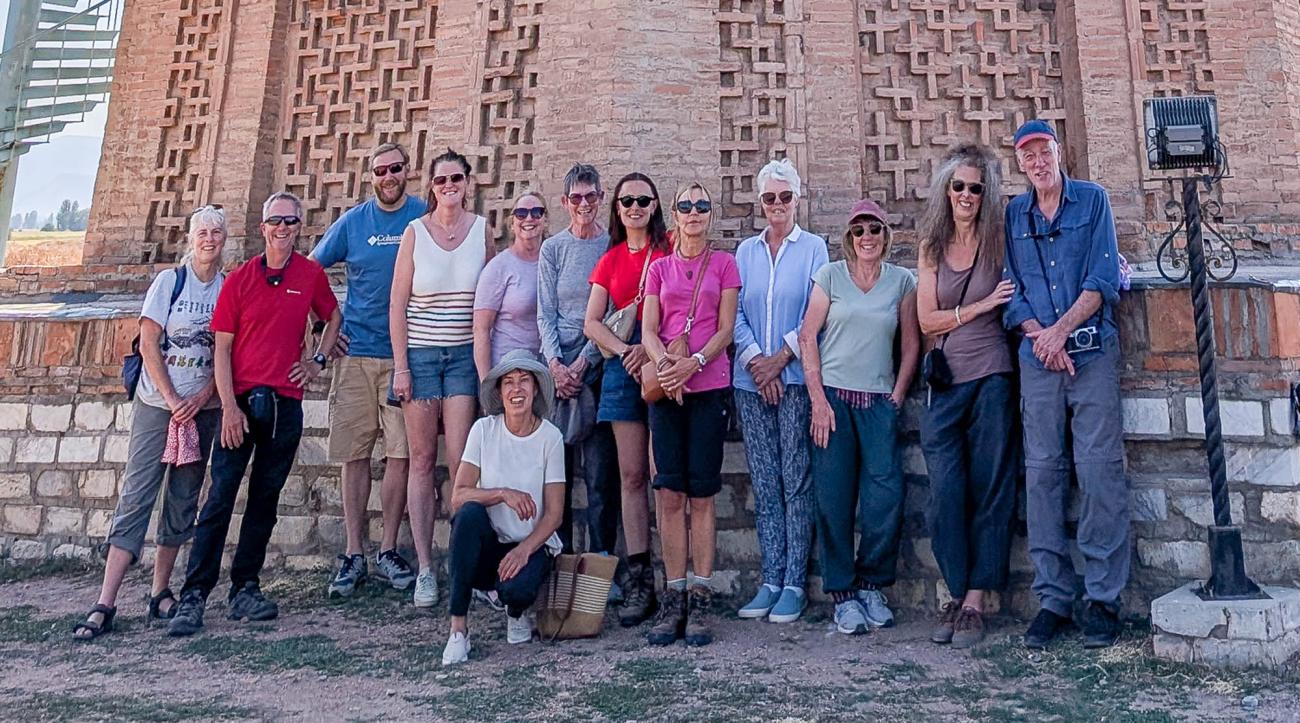Up and Down through Kyrgyzstan
For Olga
In the early morning light, we travel in
from Canada, Australia and UK
to Bishkek, soon to celebrate
the country’s Independence Day.
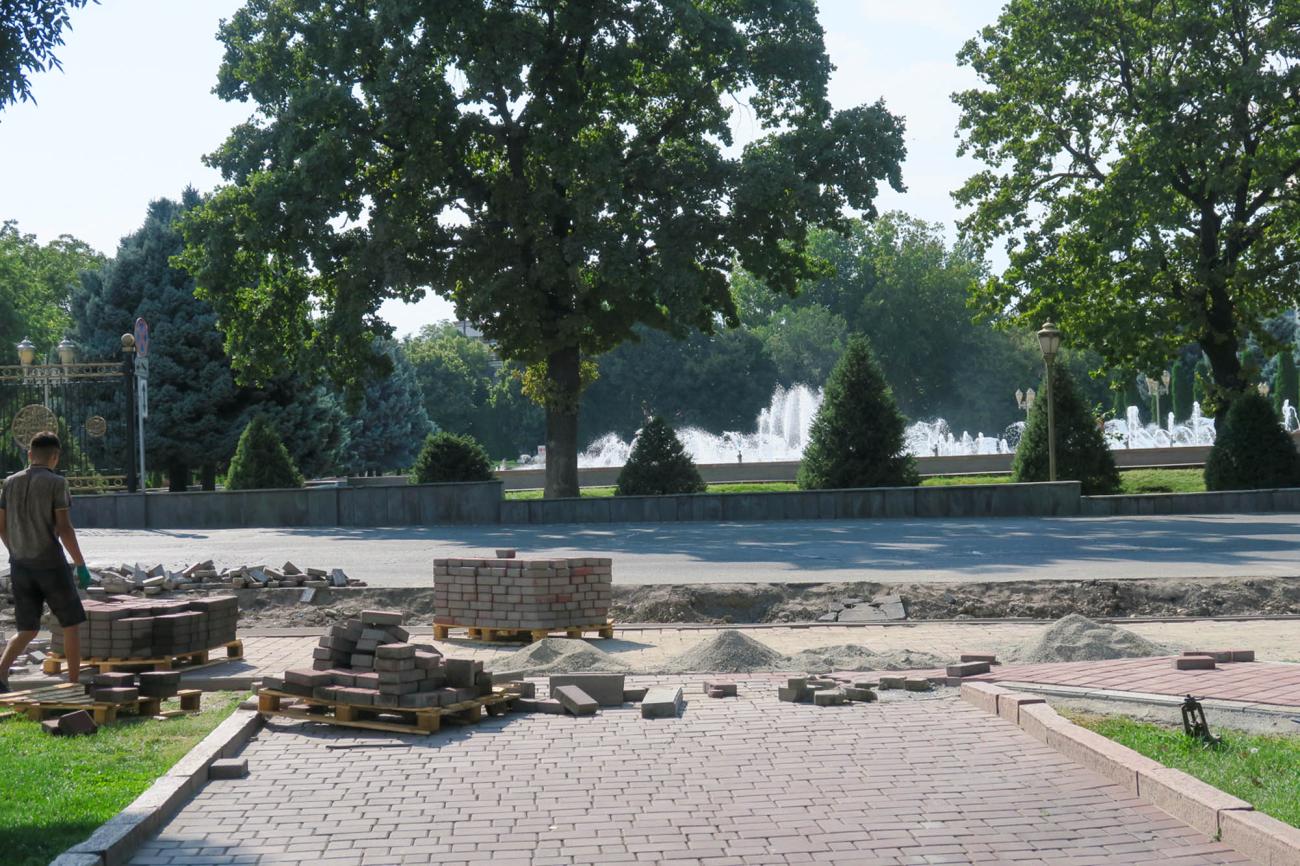
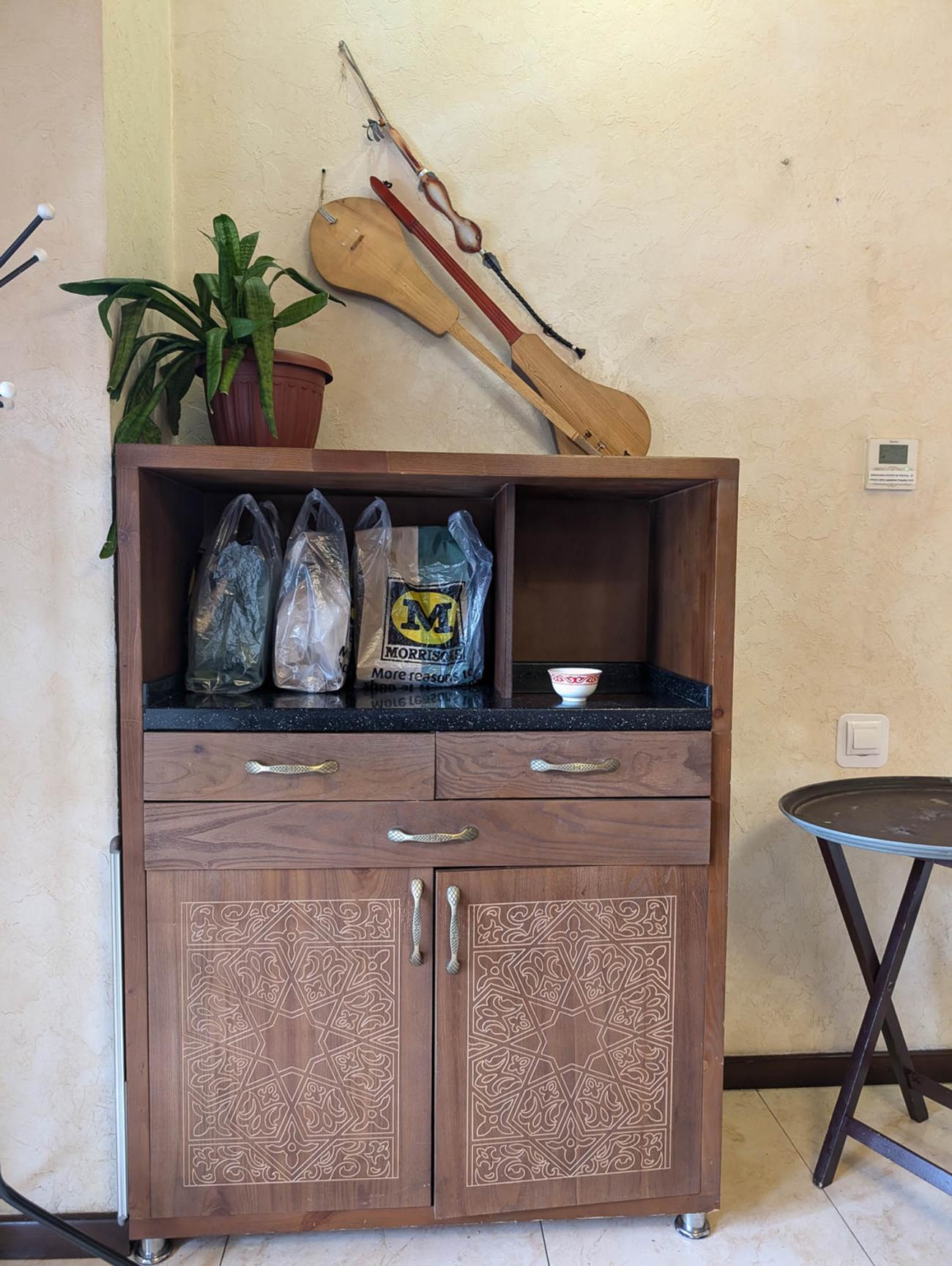
The roads are in a state of disrepair
and so, it takes a while to take us where,
at Navat, we sit down to eat
the borzok bread, the carrot salad
and the soup with meat.
On the wall, the three-stringed komuz made from wood,
the Shyrdak made from felted wool.
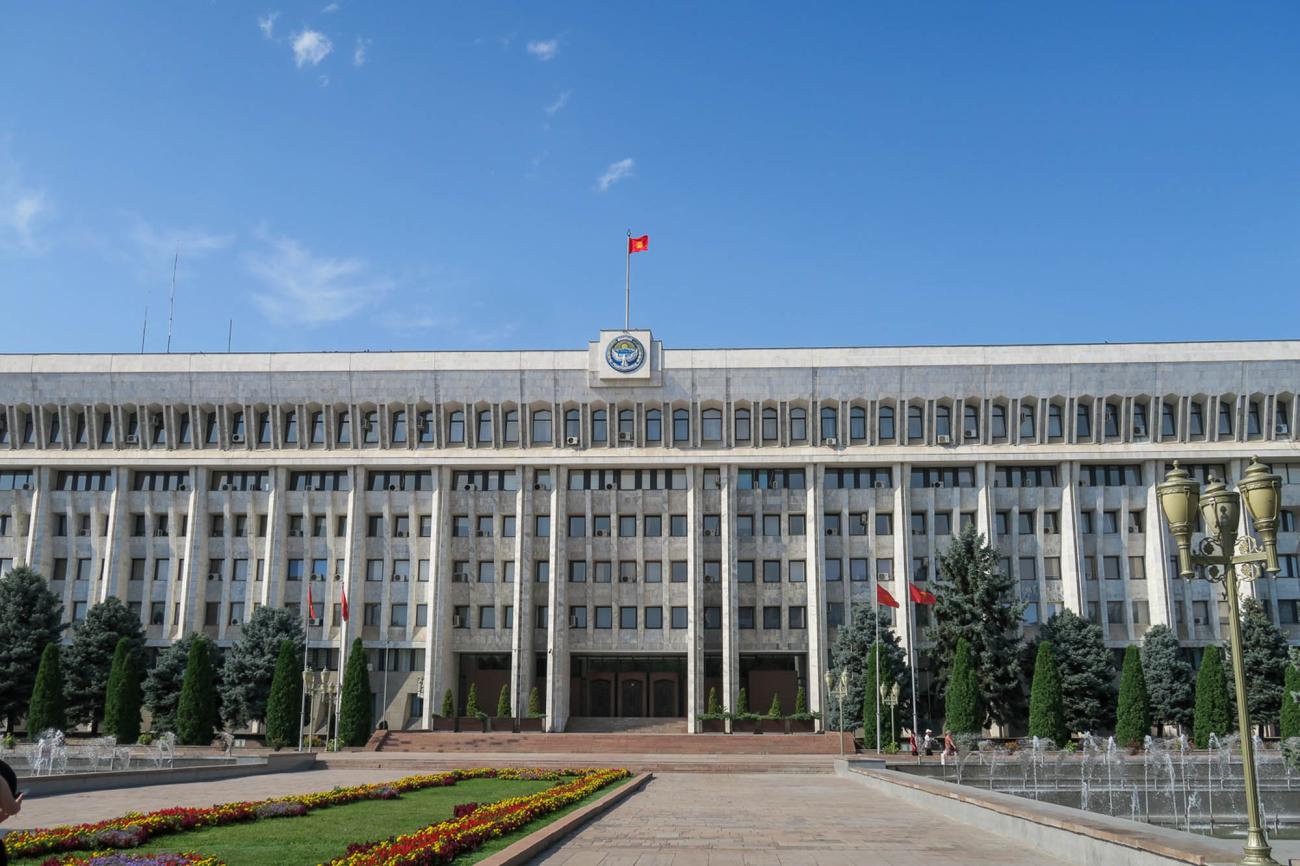
And in the afternoon, we go from there
and Olga takes us to the square
where, at the White House, six presidents
since 1991 have led,
and 86 the number of the dead
who lost their lives protesting.
And in the old square. Lenin looks across the park
where every April his birth is marked
with flowers and with revolution song,
heard by Marx and Engels
who for all time shoot the breeze,
where red leaders stand, and squirrels run
beneath the 23 varieties of trees
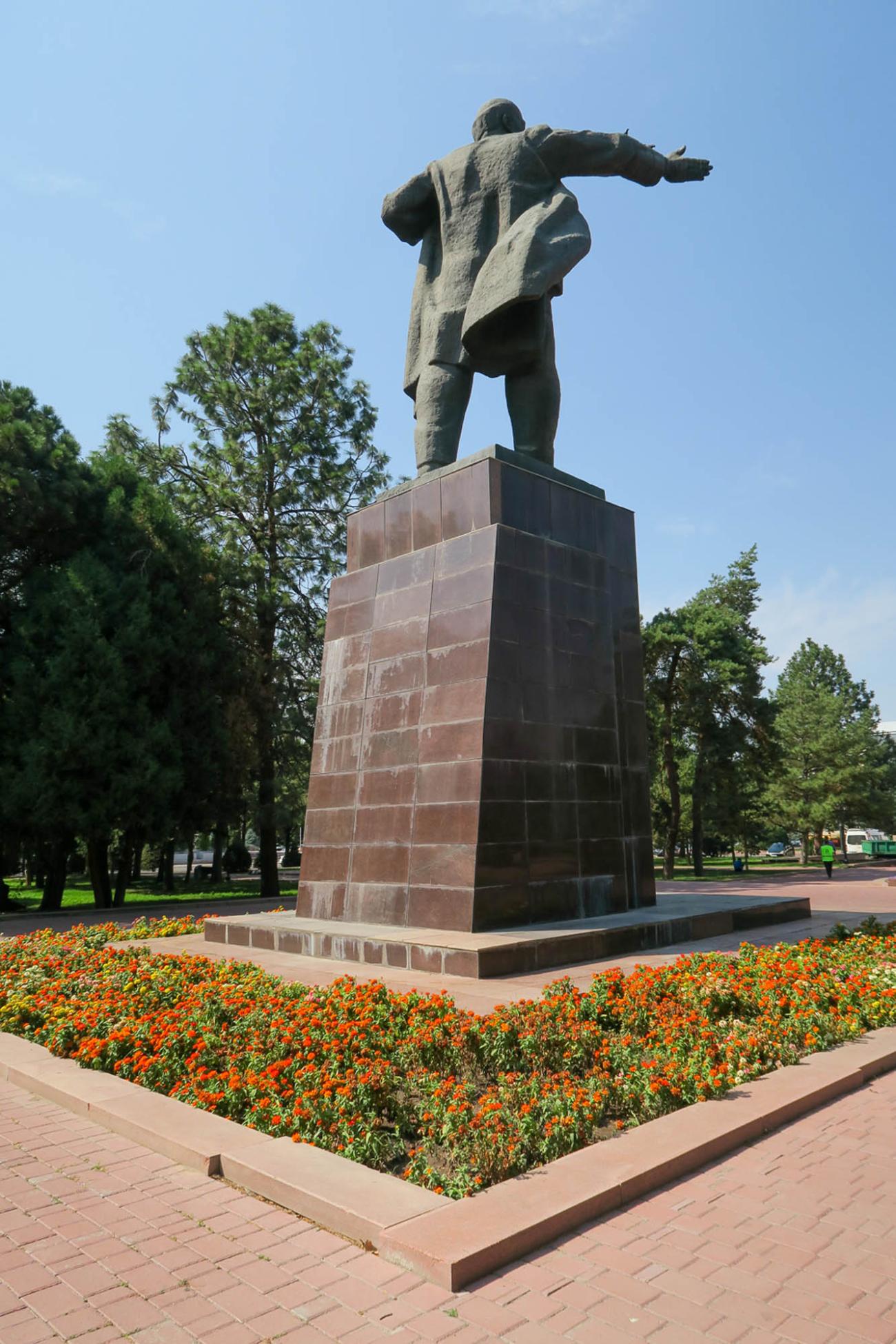
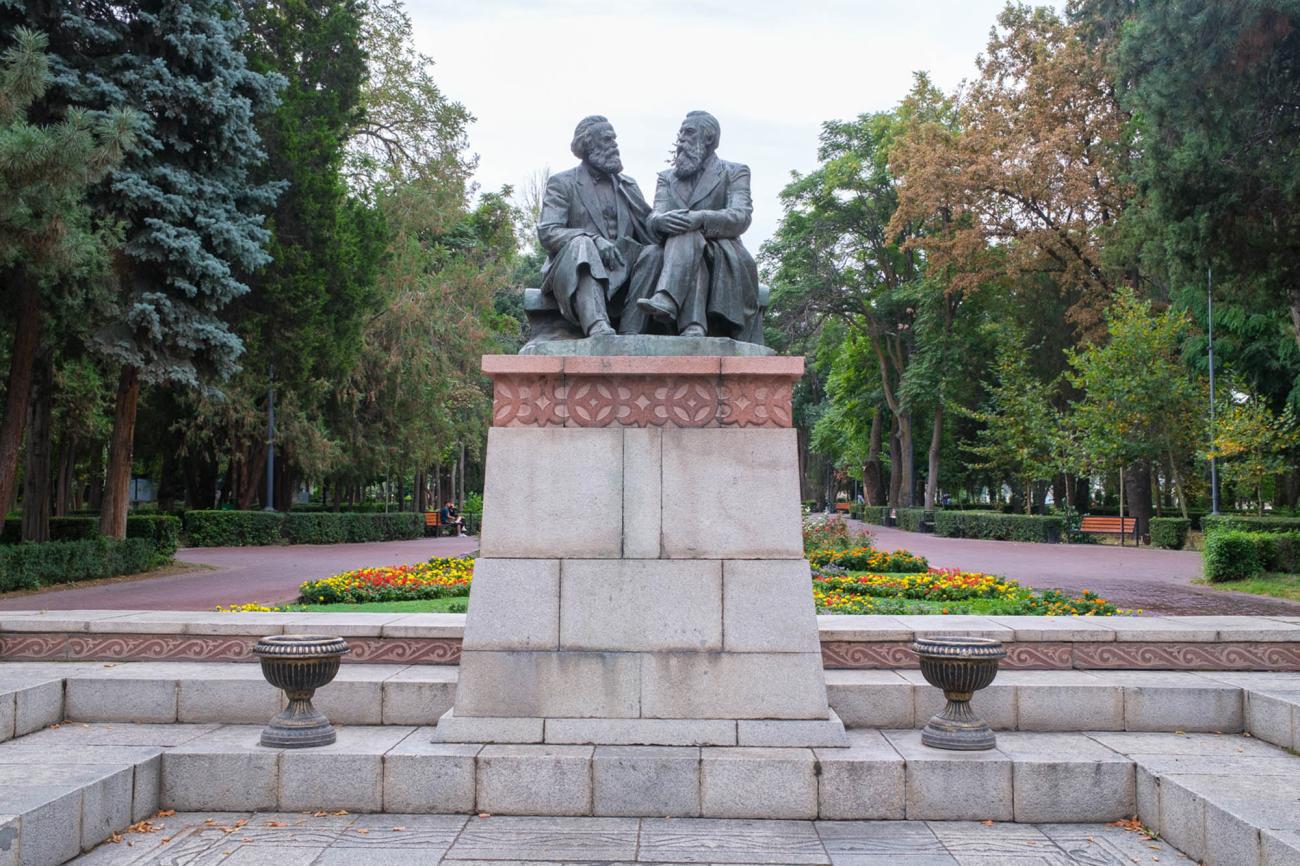
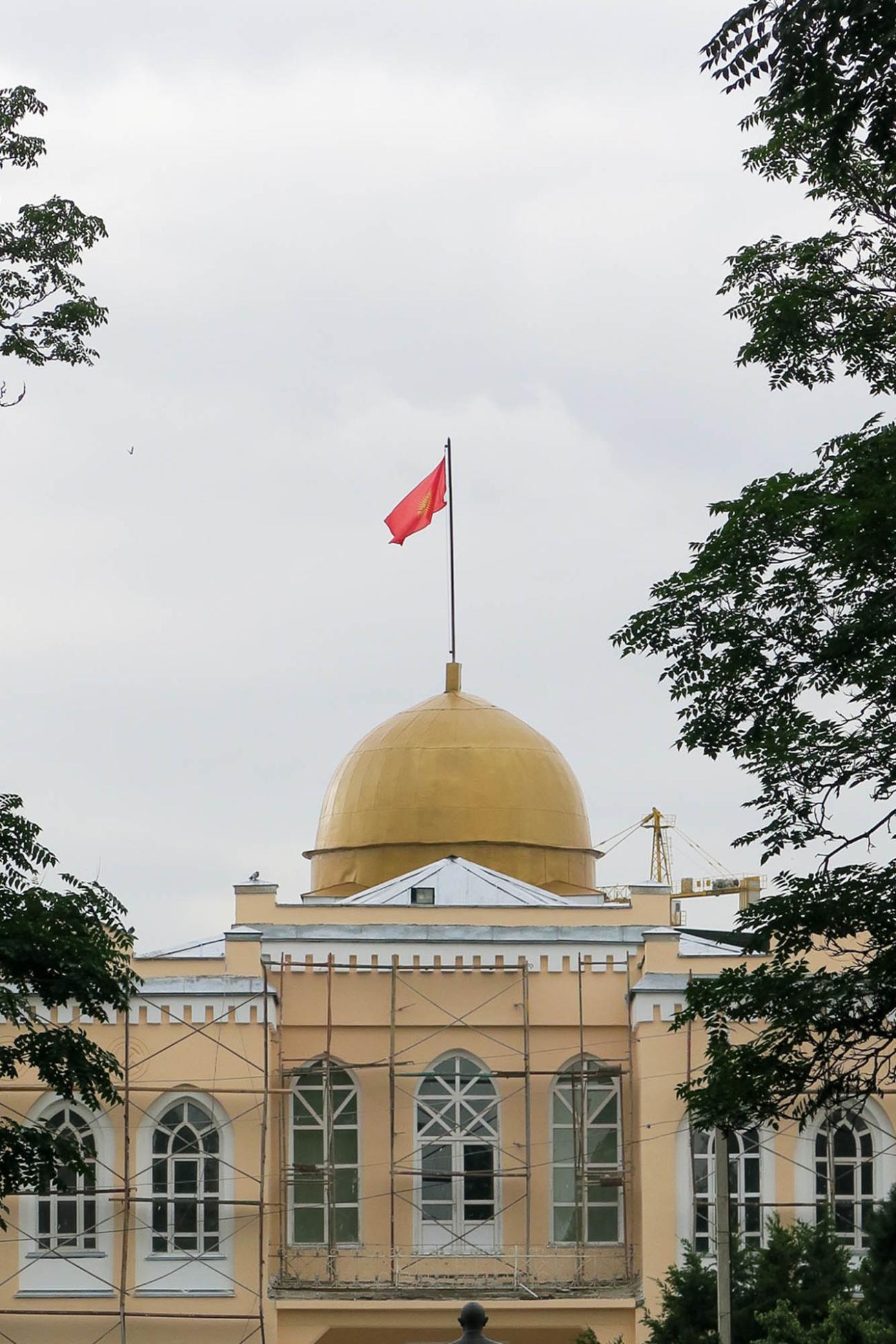
Above them all the red flag flies,
patterned high against the rain-filled skies
with the symbol of the tunduk,
framed by golden flames
which represent the forty tribes,
where legendary Manas
on mythic horseback strides.
We paddle through the puddles
of the Osh Bazaar
where stalls sell saddles, cheese and nuts,
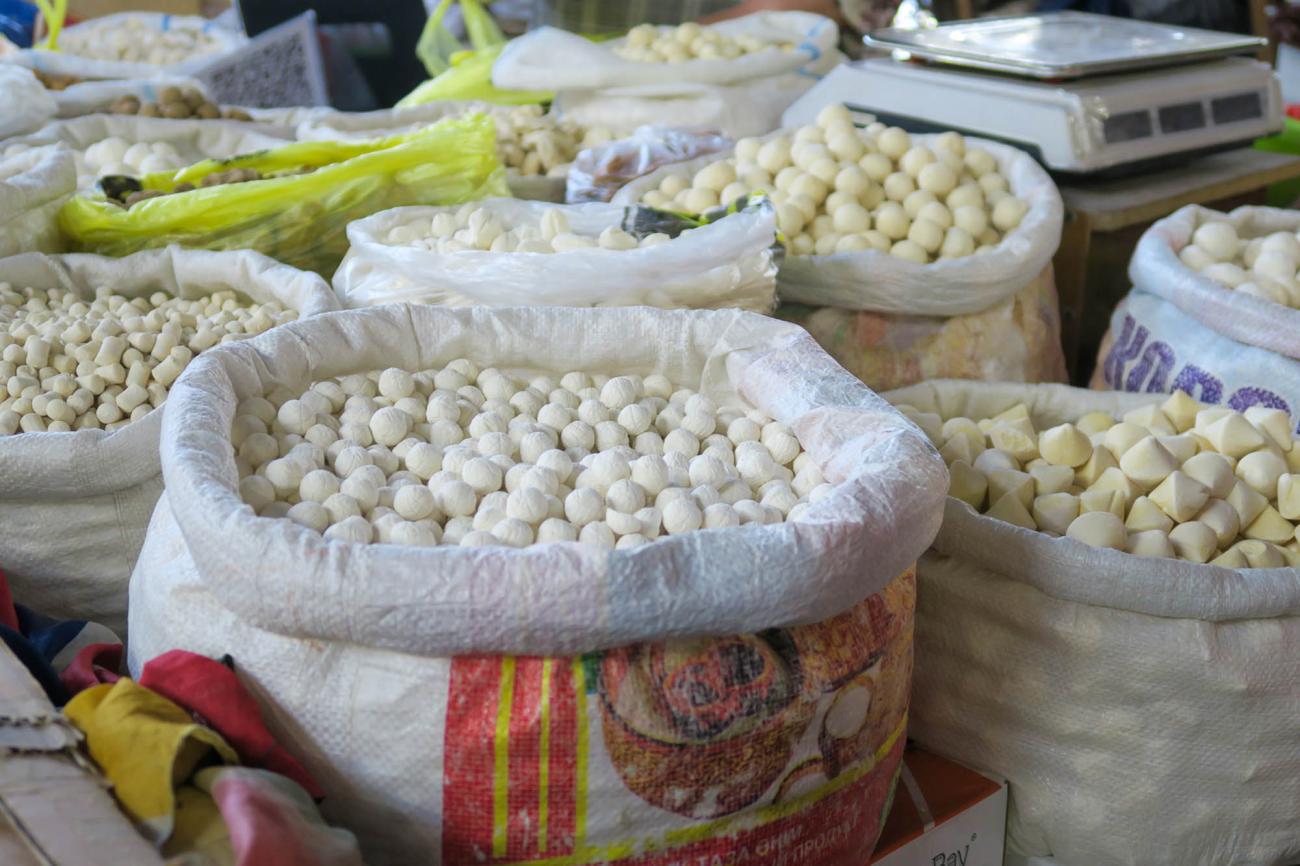
and holes are made in wooden cots,
black tobacco sold for chewing
and fatty horsemeat hangs alongside chicken.
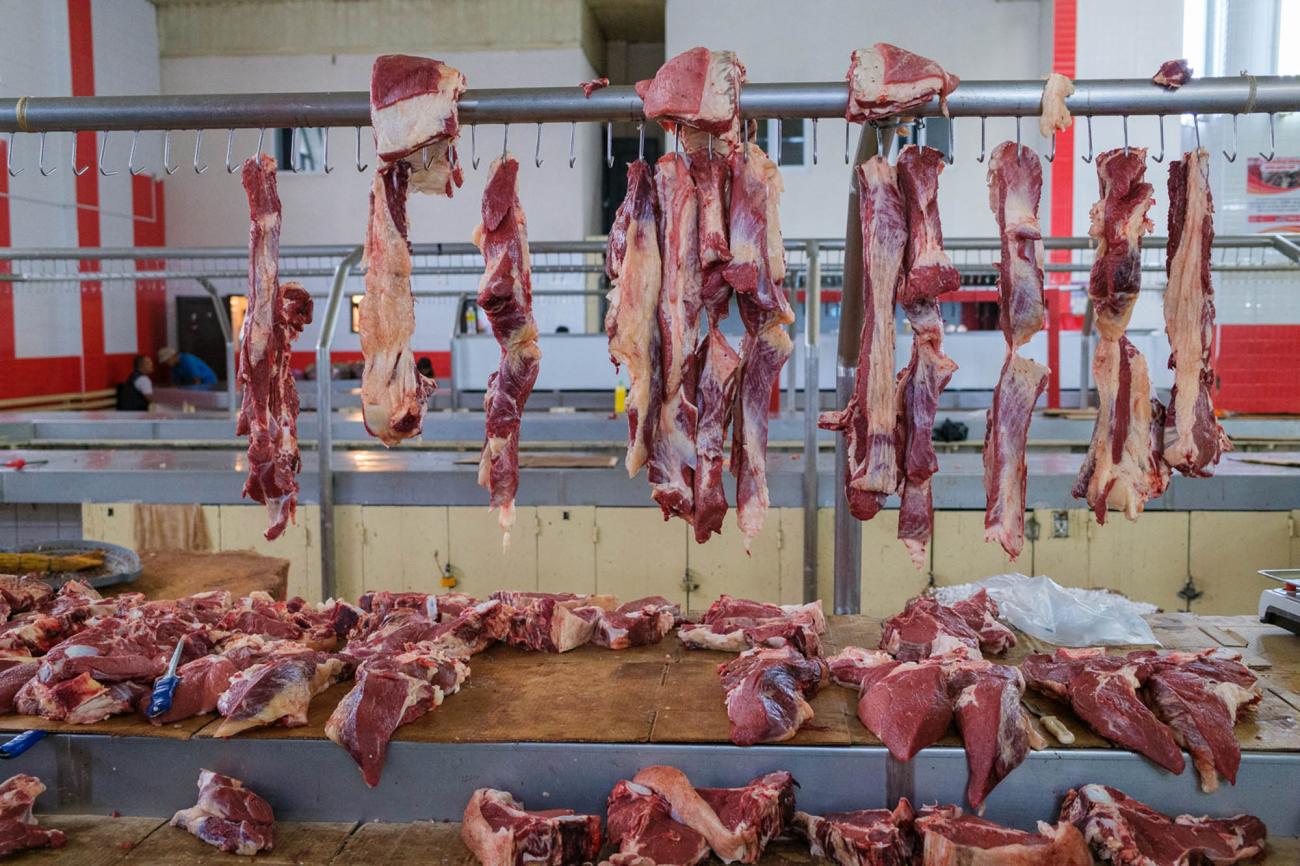
***
Back past Osh Bazaar we take the highway.
Monday morning business of the day,
lorries carry concrete, trucks heaped high with hay,
billboards advertise soft drinks and beer
and in the distance, now the day is clear,
we see the mountains capped with cloud and snow
and soon we turn toward them, go
past maize field up the twisting Tu Ashurbanipal pass.
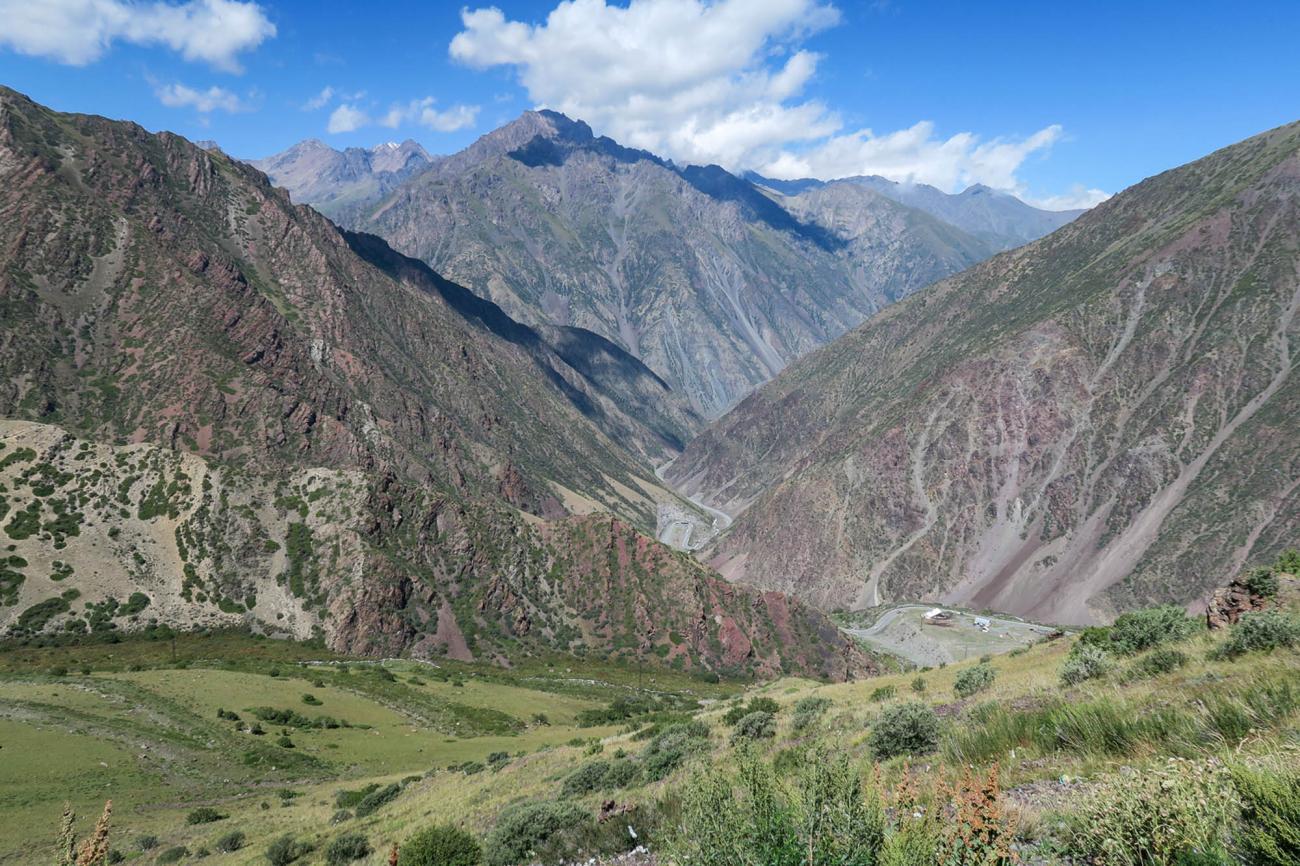
Horses the colour of red setters graze the grass,
their herder sitting cross legged on his horse.
White water tumbles from the top, and on the other side,
past trading post and mobile hive, we stop,
where eagles fly above the steppe
and lesser wagtails flit by the Suusamyr river.
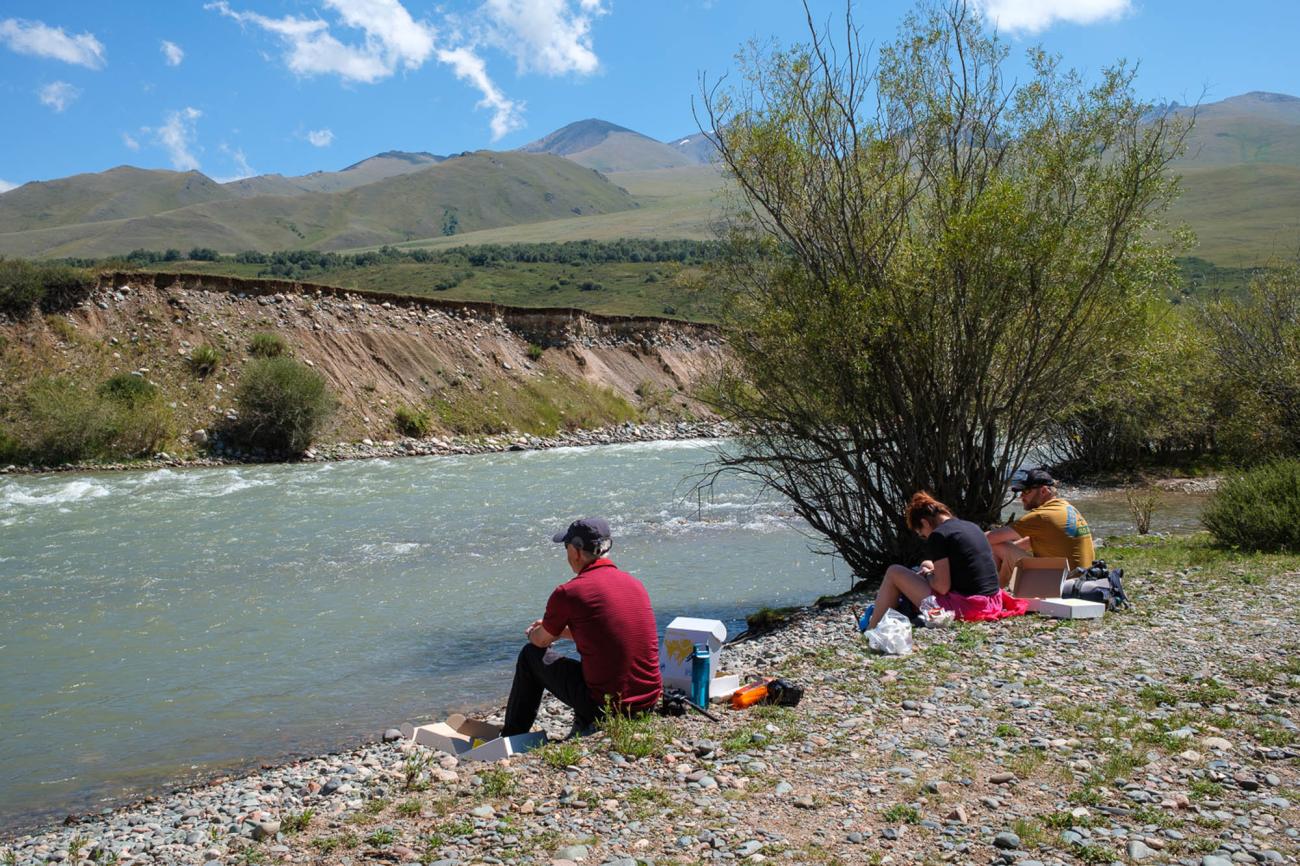
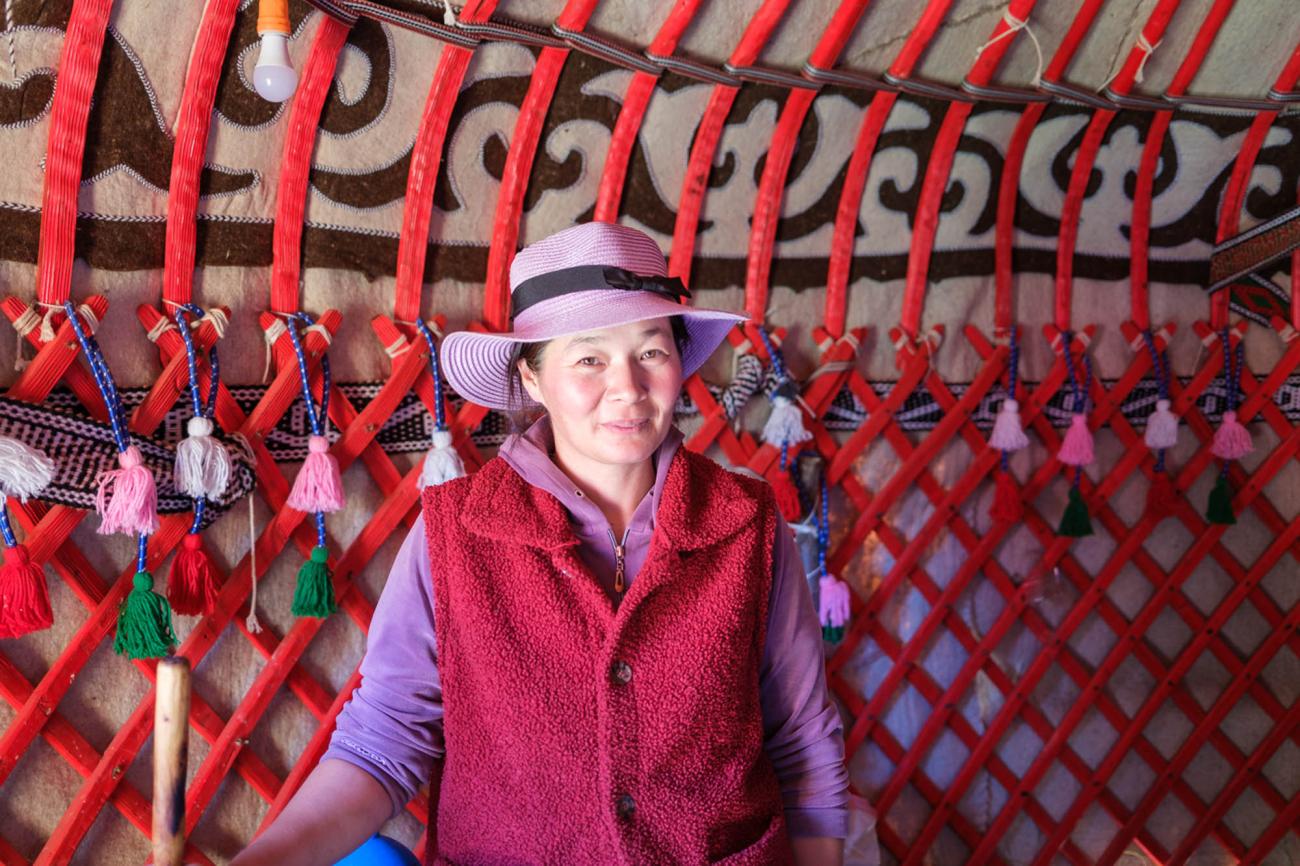
Then from the wide expanse of plain,
drop further down again to try the mare’s milk
stirred with Bishkek in smoked juniper,
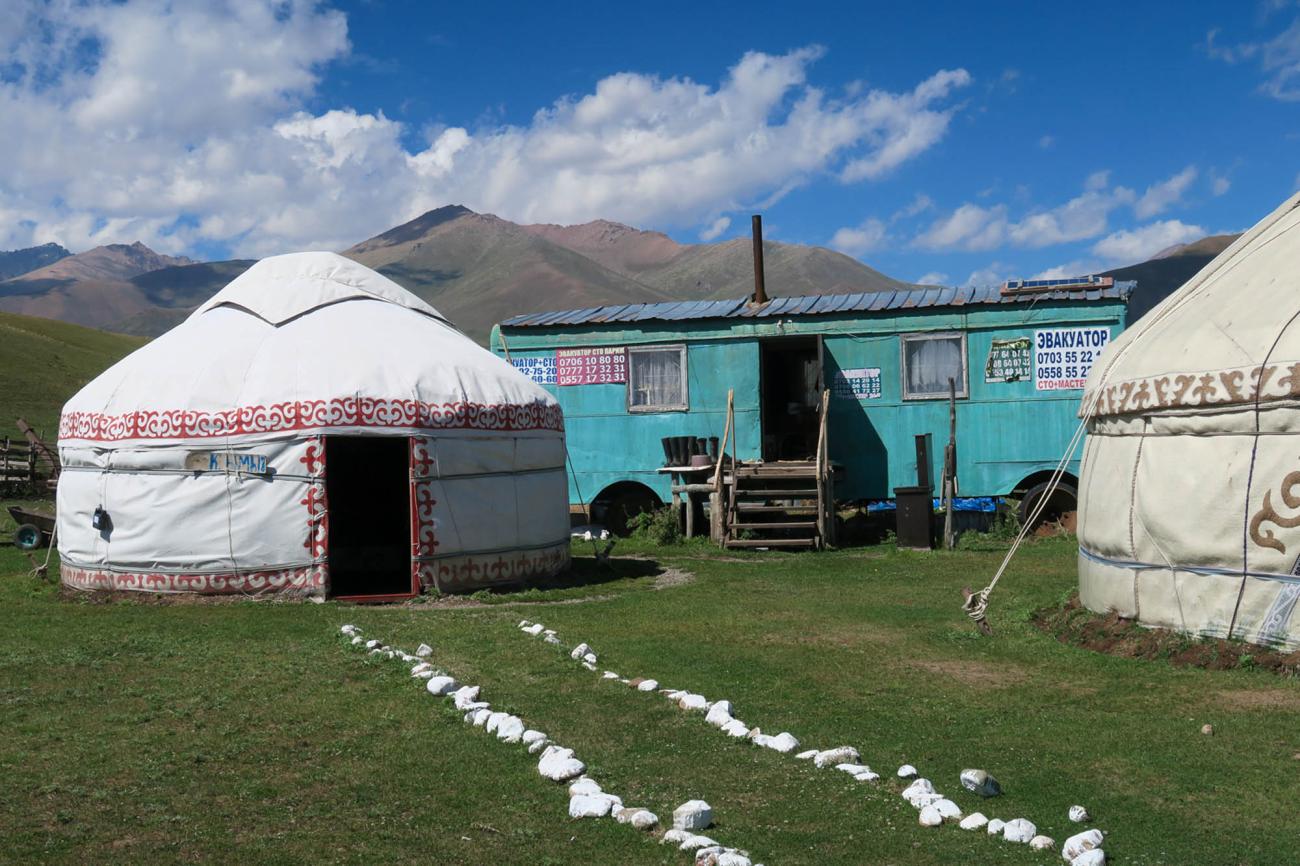
dip torn bread in bowls of cream
inside the felted yurt.
And on, where waterfalls of dark brown sheep
graze the steep slopes, and foals are tethered
to their mothers with lengths of braided rope.
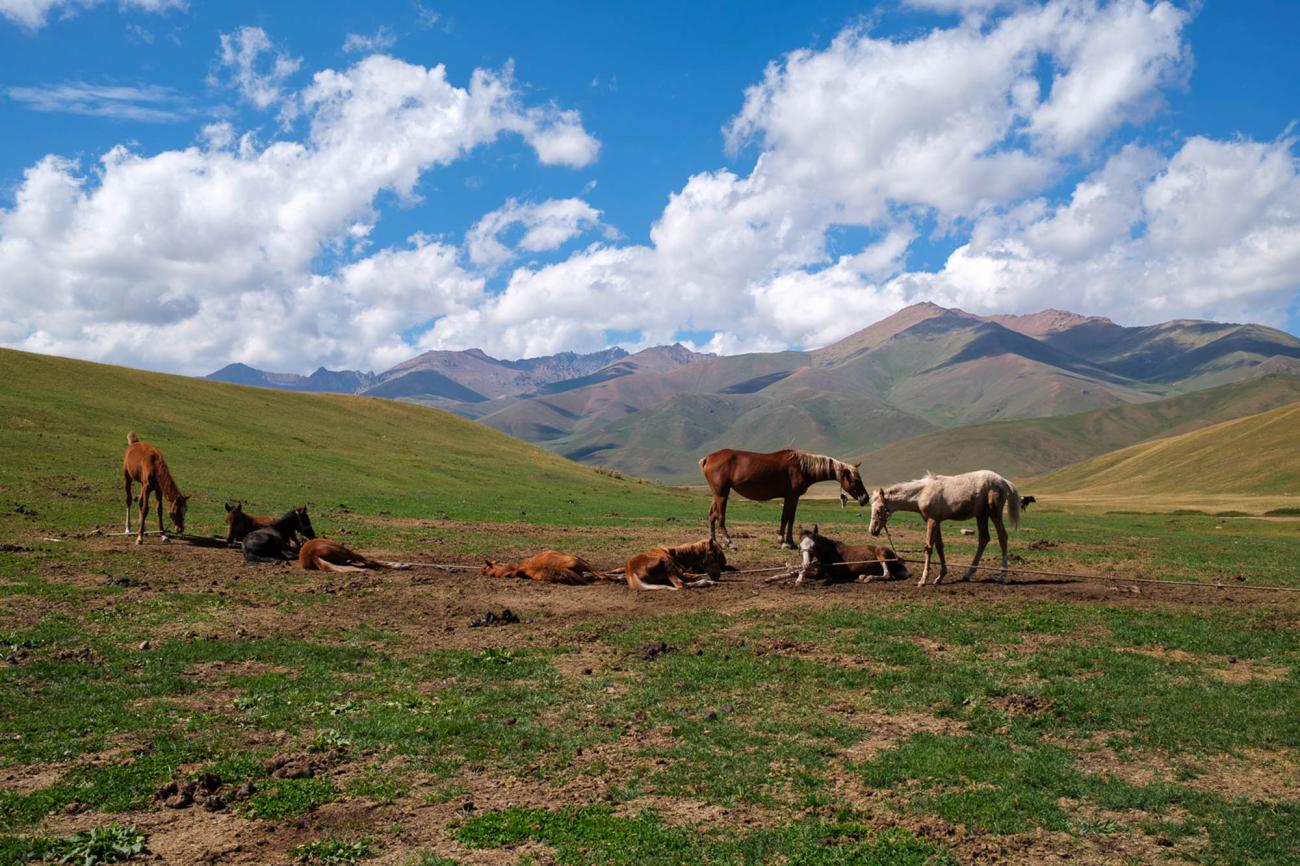
We end our day with rainbow trout
caught in the river of the Chychkan Gorge,
and sleep to the sound of it rushing past the Oson.
***
Along the gorge, white melt water fast flowing,
past orchard and garden, burst of summer flowers
growing where the “big bird” glides,
pylons strident on the mountainside.
Kyrgyz Muslim remembered
in monuments of wood and stone,
lone hunting bird as we near the bright blue,
reflecting lime, where in another time,
ten settlements were home.
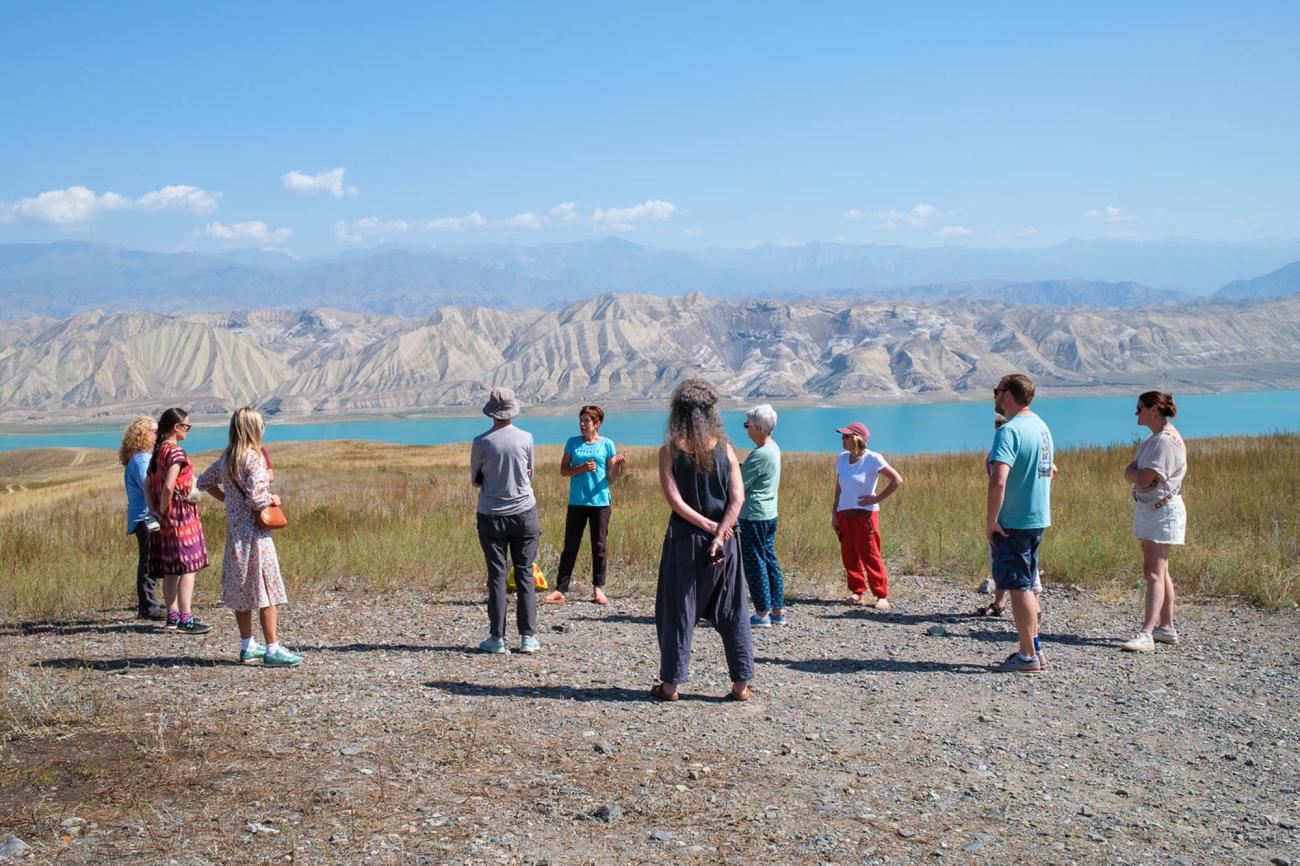
Downward to the valley floor,
poplar tree and stooks of straw,
stand on land once ruled by Kormanjan,
to Kara Kul, artificial pool
where the Naryn River flows turquoise
with a spill of milky coffee.
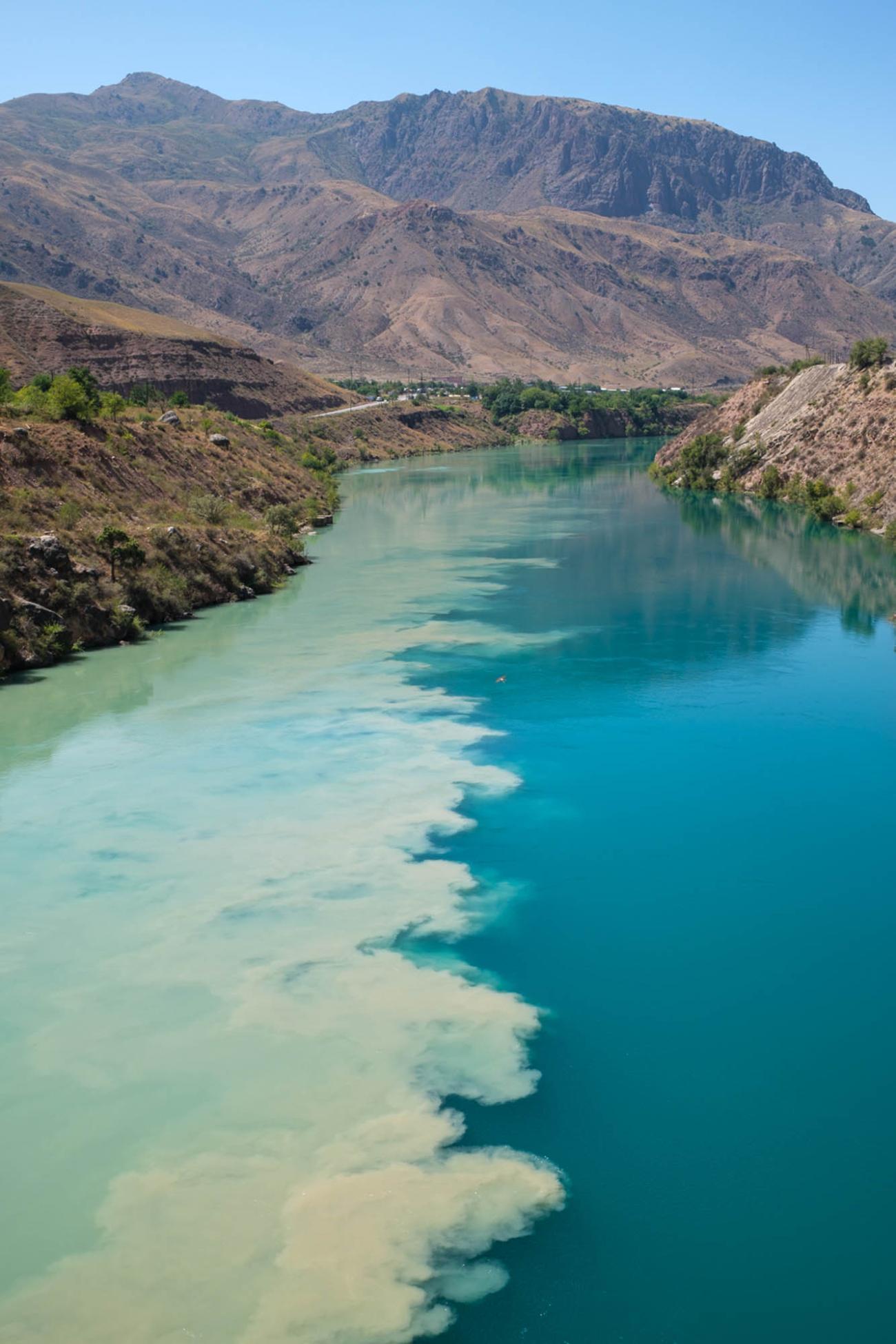
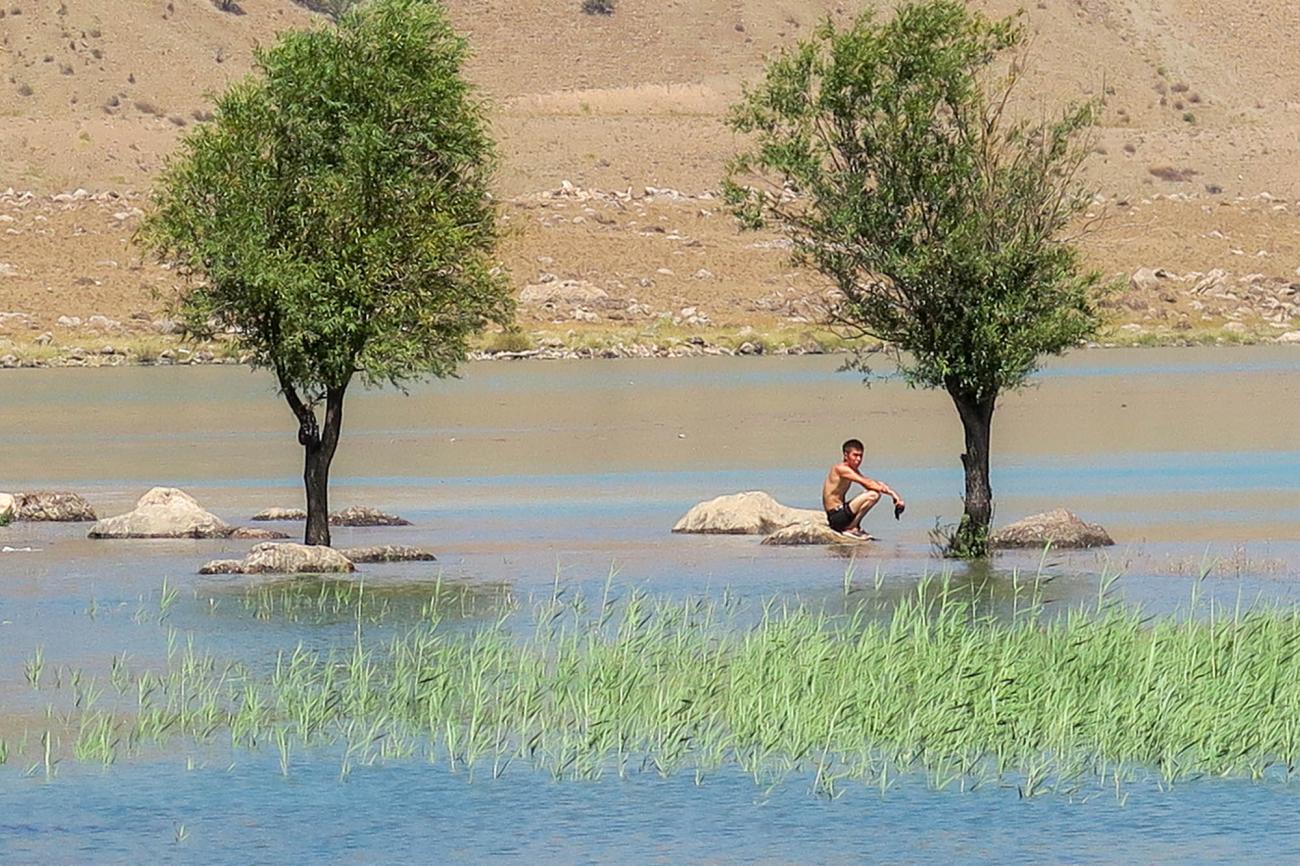
Along its banks we eat watermelon
Vladimir cuts into juicy wedges
where the hornets circle.
Down further past the fish farms
to Hashkumyr, the town of burning stones,
housing those who mined the coal.
And past the slag heaps and the place
where musicians welcomed home
the miners from the fields.
And the marigolds are bright pom poms
as the horses pass through the village
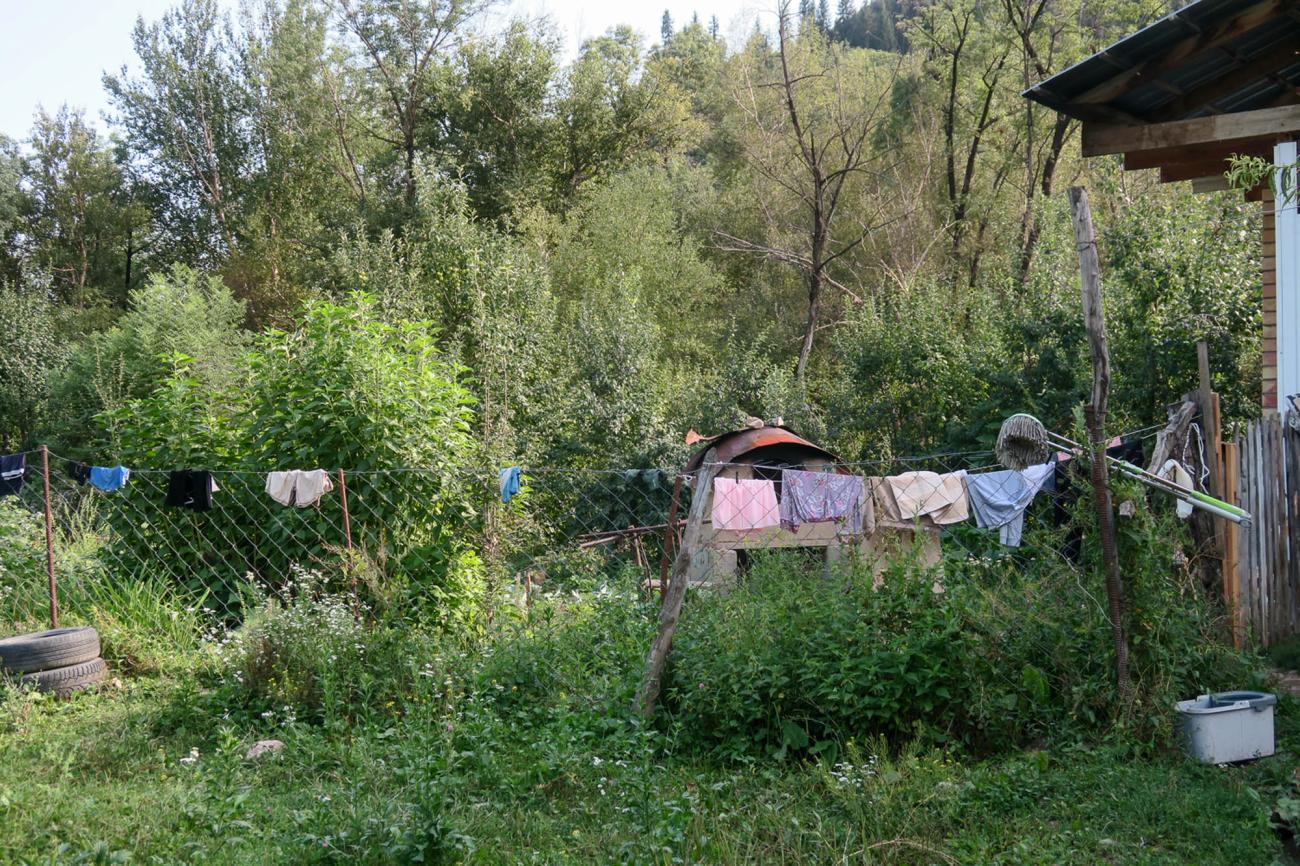
and we get to Sary Chelek
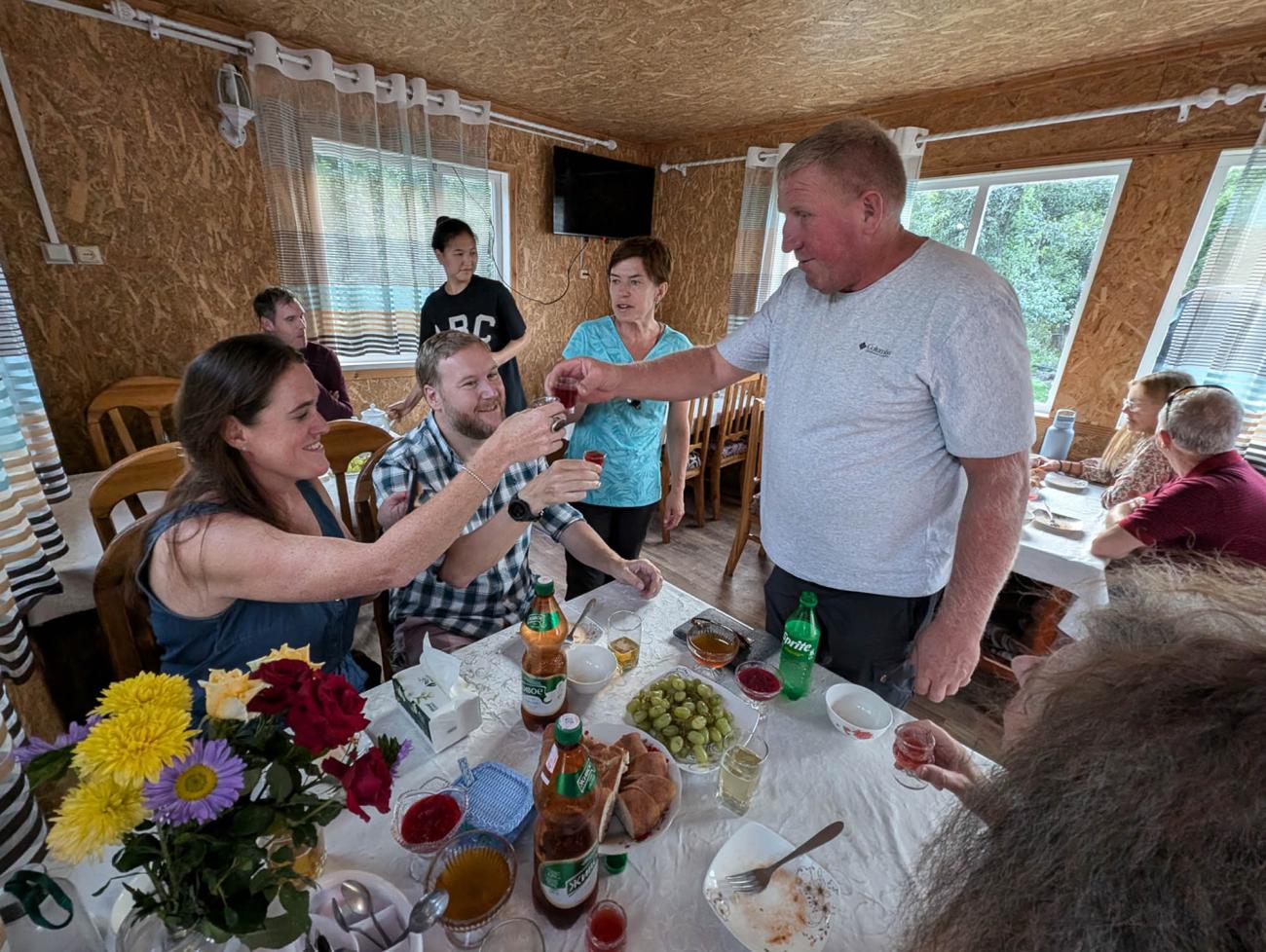
where in the evening at Bakai
we raise a toast to Ben and Sarah
in several shots of lemon vodka.
***
Up through the park we follow the stony track,
through glades of wild cherry and plum
where horses kick their heels and a truck
spans the road with its load of hay.
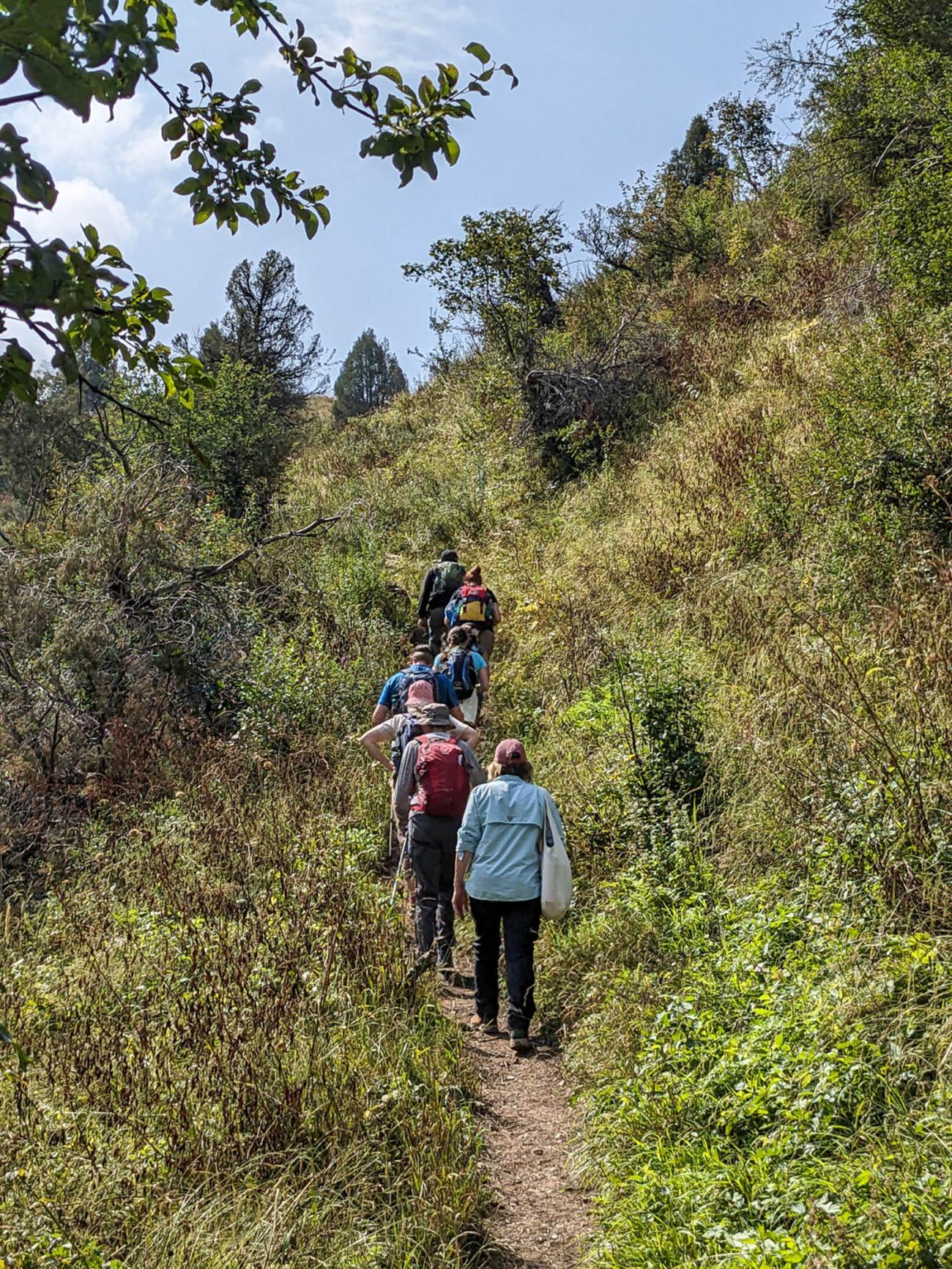
From Bilik Kul we start our upward climb,
through fields hummocked with hay,
our path fringed with wild garlic,
with wormwood, mint and thyme
which grow amongst the wild white hollyhock
and the dark blue allium
where bee and butterfly rest.
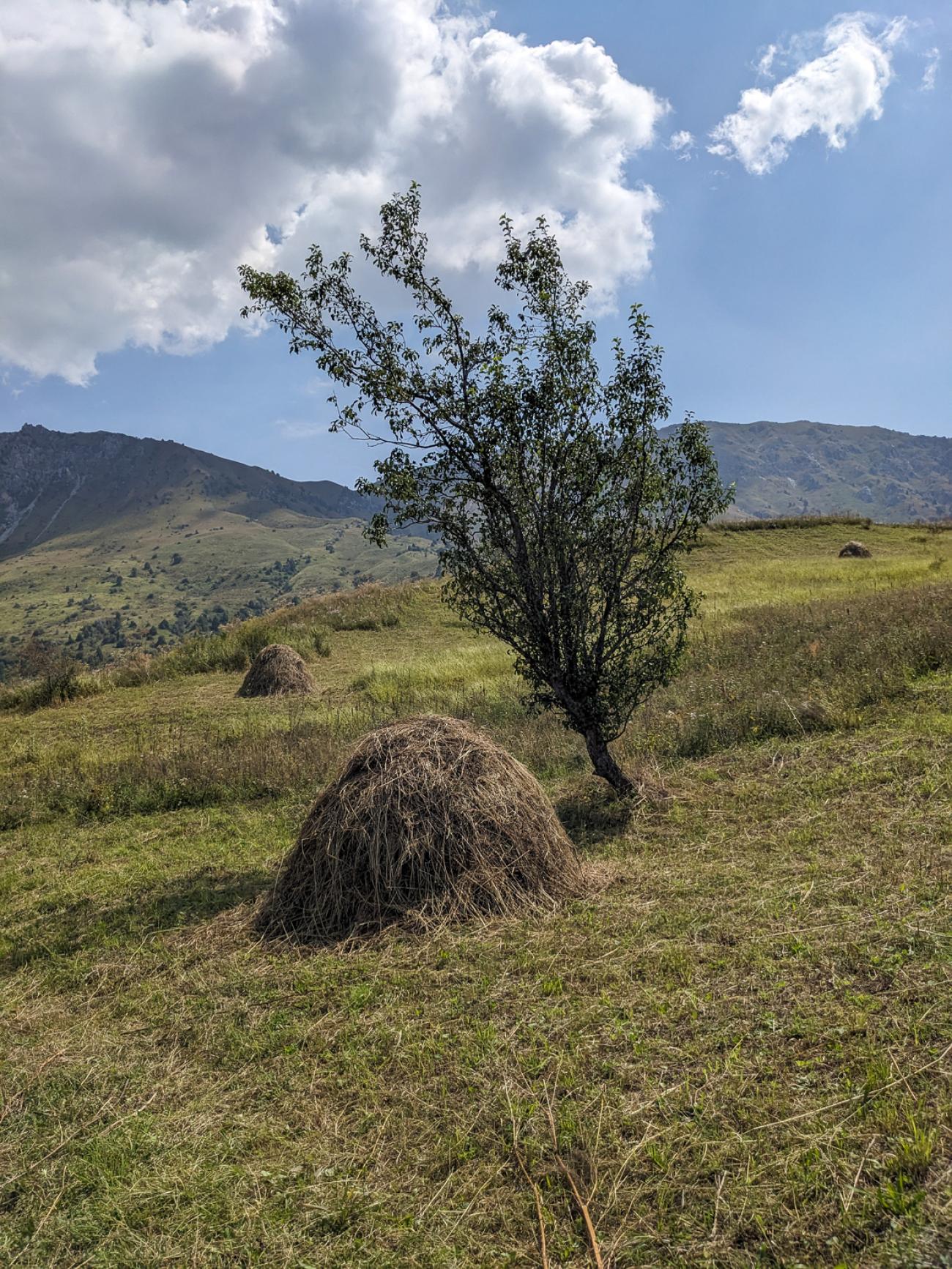
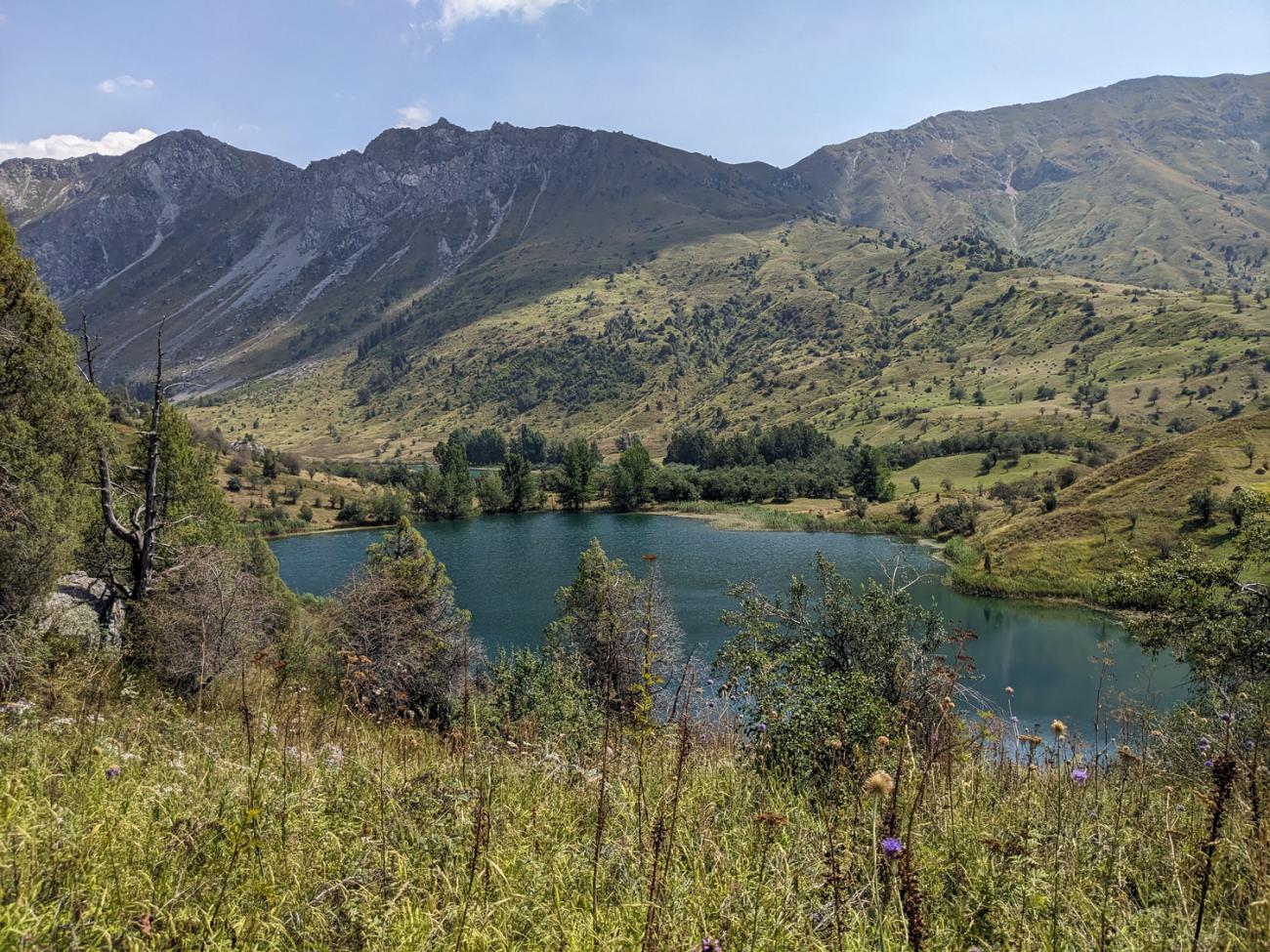
And we rest too, beneath the beech trees
on the banks of Arram Kul, the Quiet Lake.
Take our lunch of potato doughnuts
before Musa leads us down, offers apples
to the cow grazing on cigarette packets,
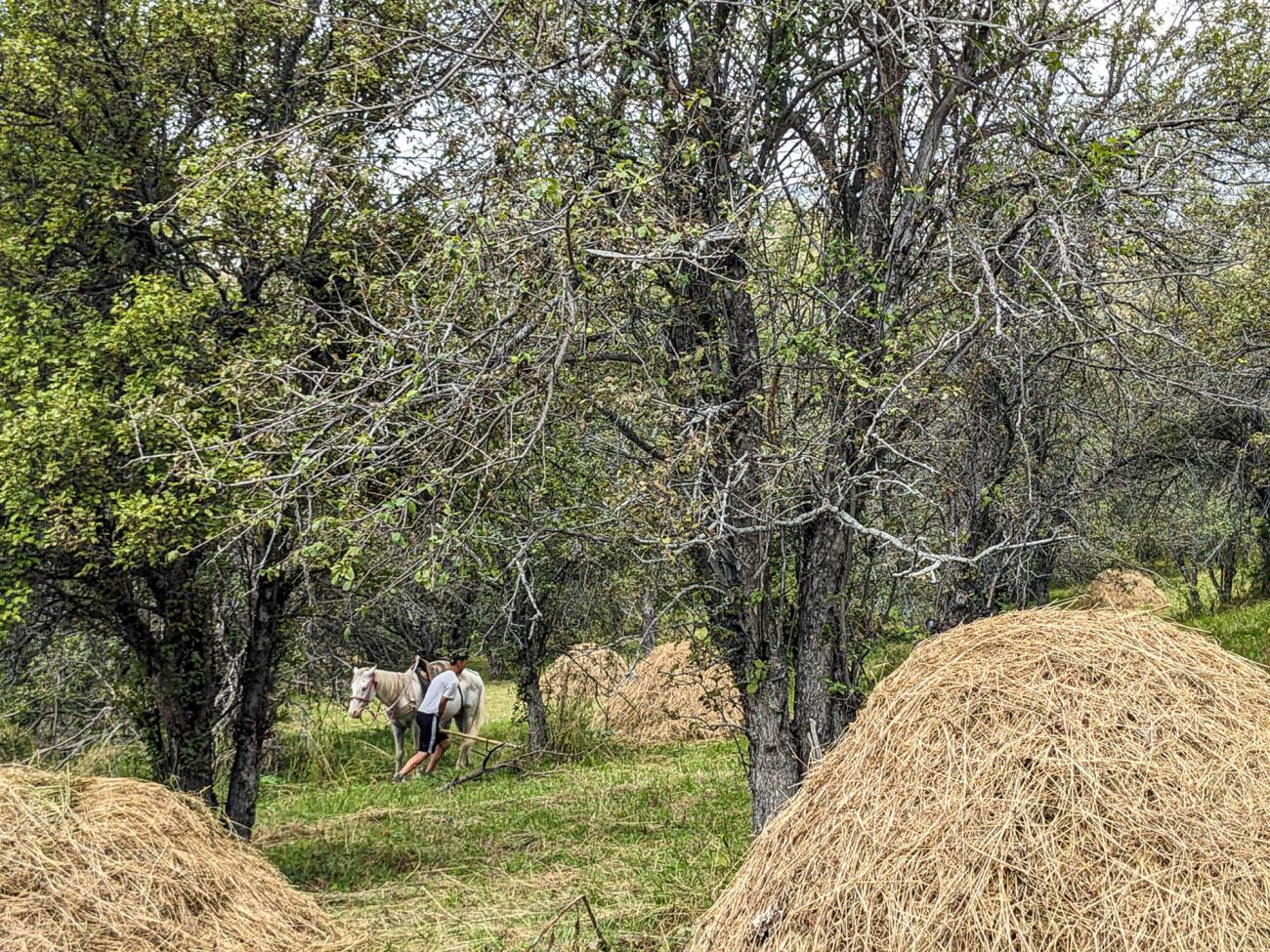
and stacked hay is dragged to the roadside
by a man on a white horse.
And perhaps it is exertion,
perhaps it is the heat,
perhaps it’s simply something
that some have had to eat.
But quite a few, at Bakai, ended up unwell,
and Richard did his knee in, and said it hurt like hell.
***
Horses hobbled so they scarcely walk at all
cross the road we take back along the river road,
dark goats climbing up the rising wall, of rock.
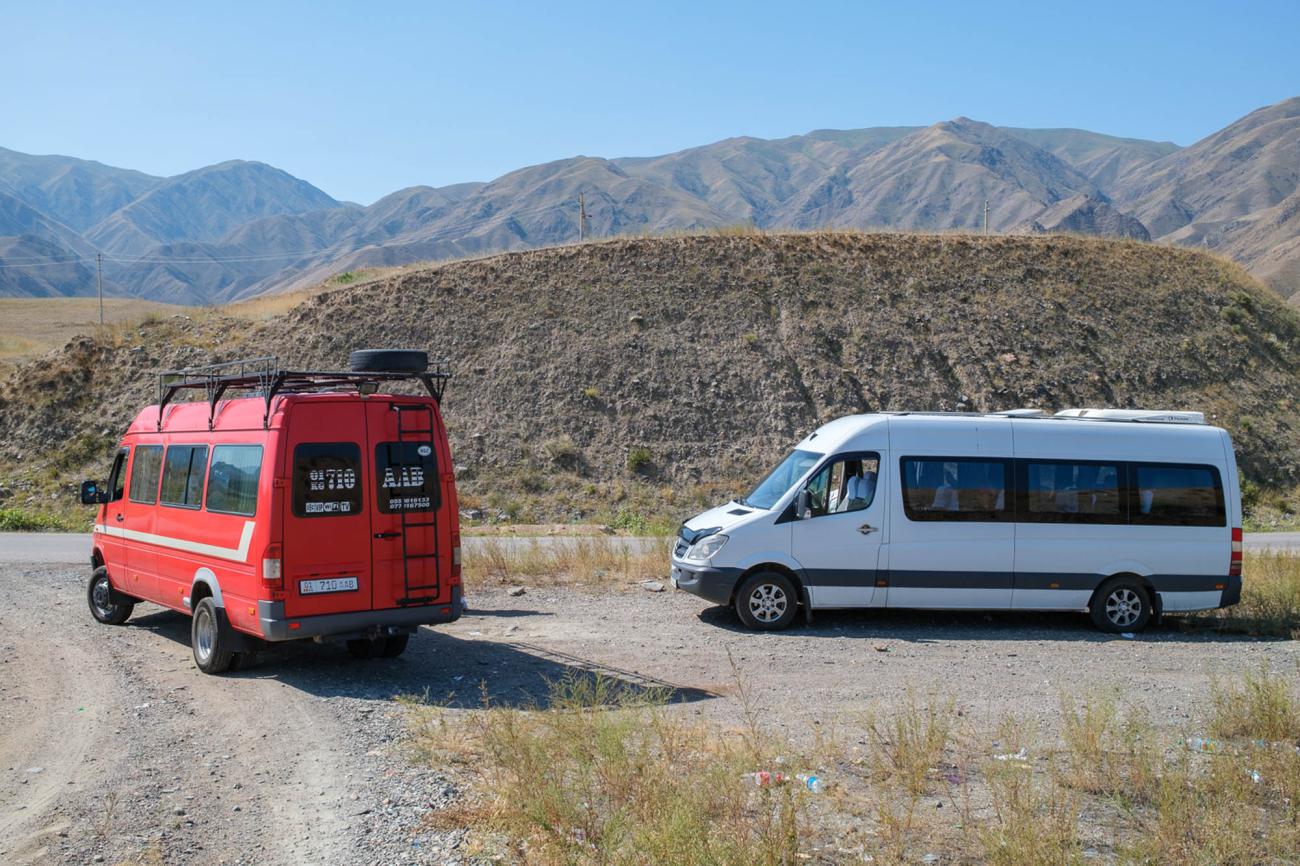
And white van man is Sergei,
careful when the roads are bad,
the other bus is four-wheel drive
and driven at some speed by Vlad.
Plastic jugs, embroidered rugs,
curtain poles and fruit,
torpedo melons, underwear,
plastic shoes and lace-up boots.
Women laden down with bags
on the bustling street at Sunny,
queueing up at Finca Bank,
wait to take out money.
The small bird sits on horseback
and the stork nests on the telegraph post
as we drive past the Uzbek border,
four fences dividing neighbouring lands
where iconic watchtower stands.
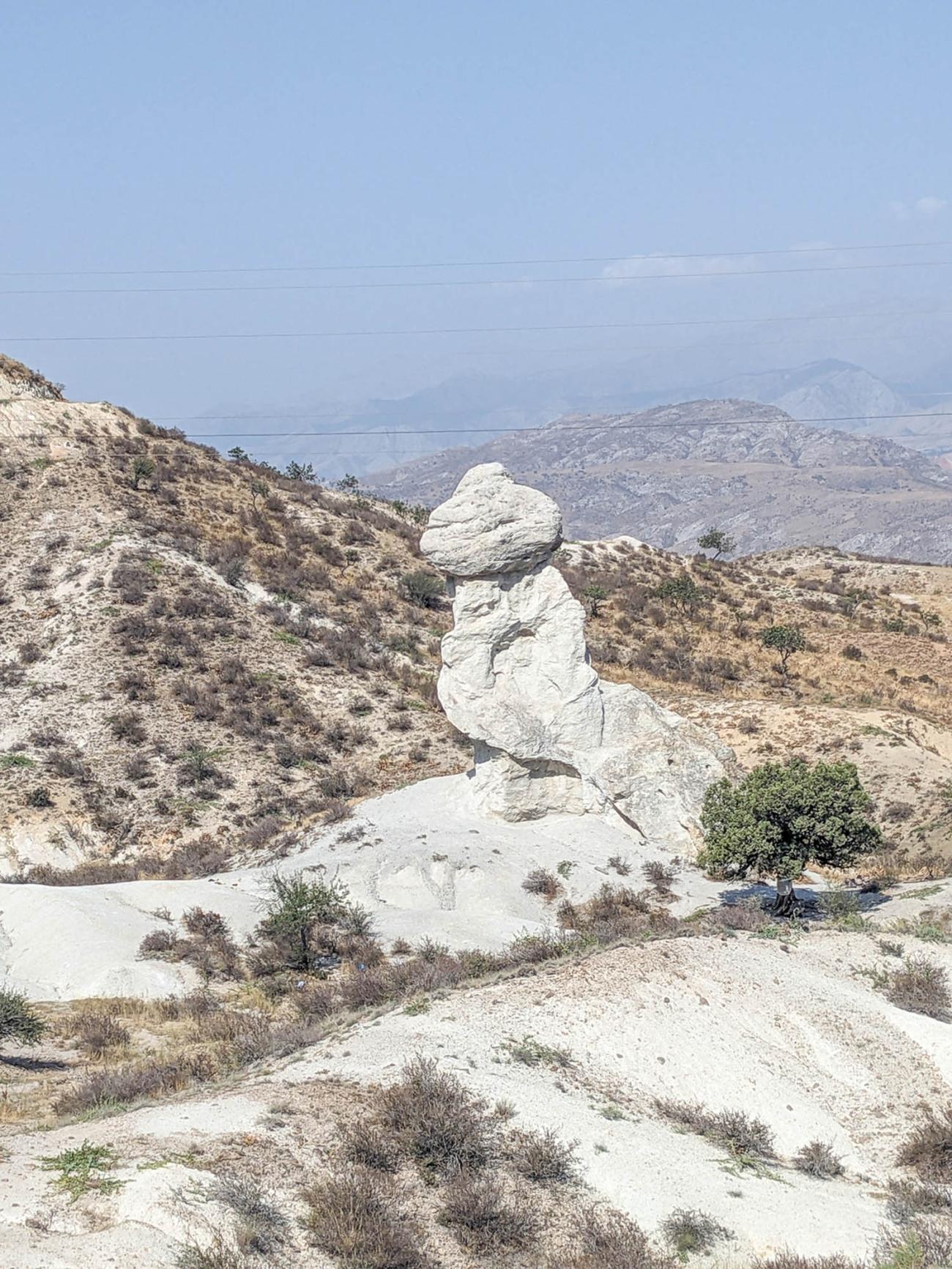
Now cart gives way to combine,
yellow gas pipes, heaps of tyres,
white cement bags, piles of drainpipes,
overhead the tangled wires.
We lunch at Ala Archa,
borscht and bread and skewered meat.
A man is making small meat pies,
baking in the lunchtime heat.
And Sergei’s all attention
as we drive beside the riverbed,
looking out for obstacles
and checking out the road ahead.
Sheep fill the road with shaggy brown,
glint of silvered metal roof
and a white donkey patient on the path
as the road curves down, to Arslan bop.
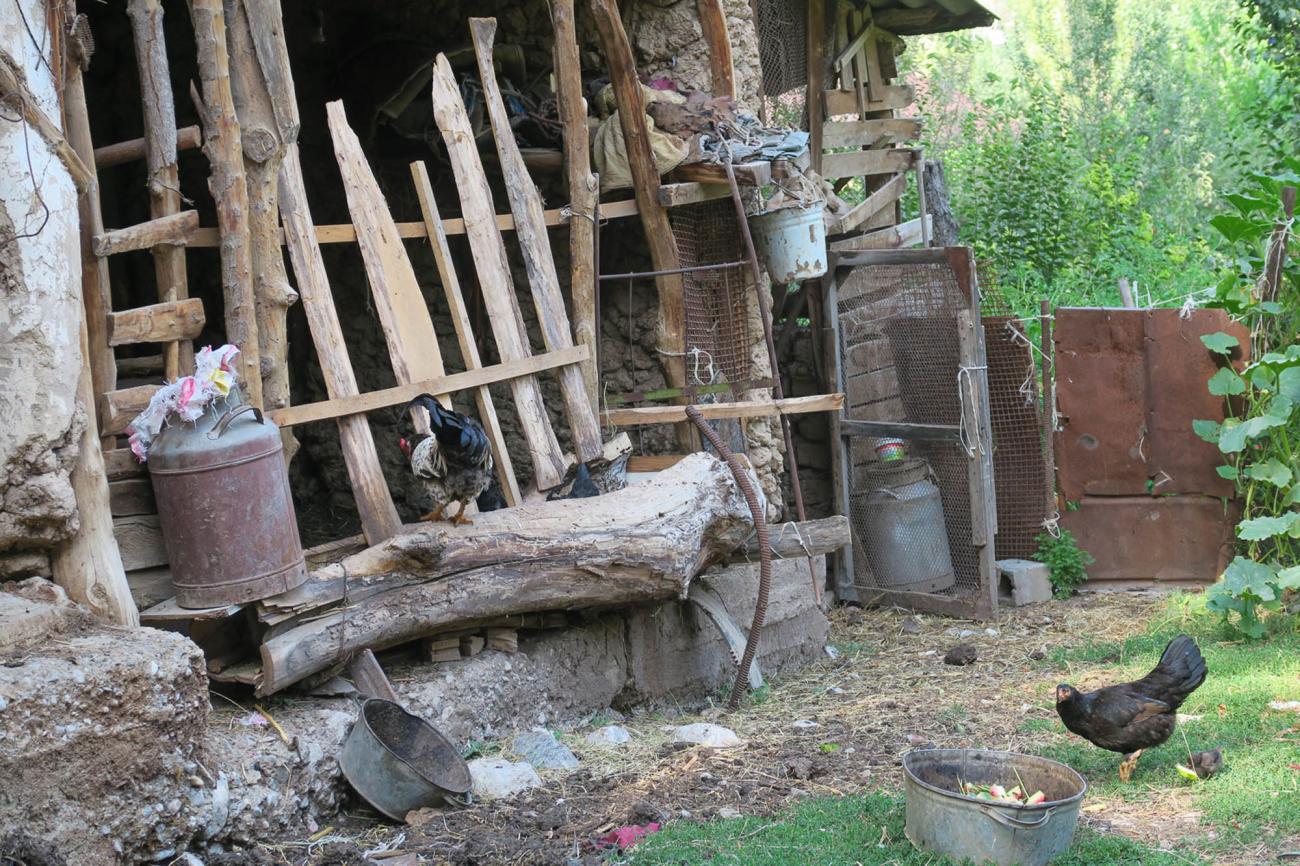
Our two-day home stay our next stop.
Welcomed with sweetened tea,
in the flower-filled garden where bees
are drowning in small bowls of honey
and roses are fragrant by the woodshed.
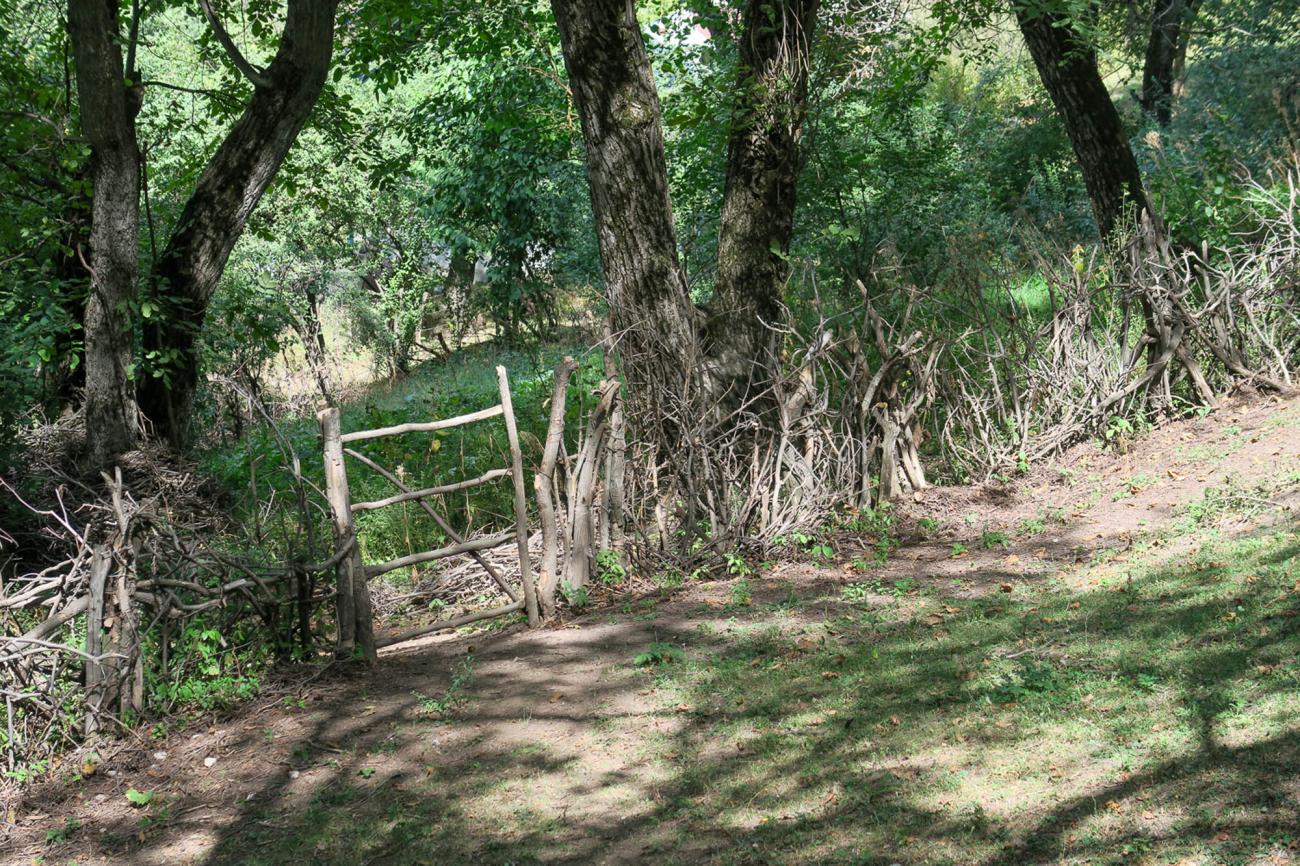
We wander in the walnut wood
stand in dappled sunlight, learn
about the crop which earns a living
from the patch of land a family is given.
Over home-grown vegetables and rice
Louisa tells us of her life,
her childhood with the boy next door
and how she’s now his wife.
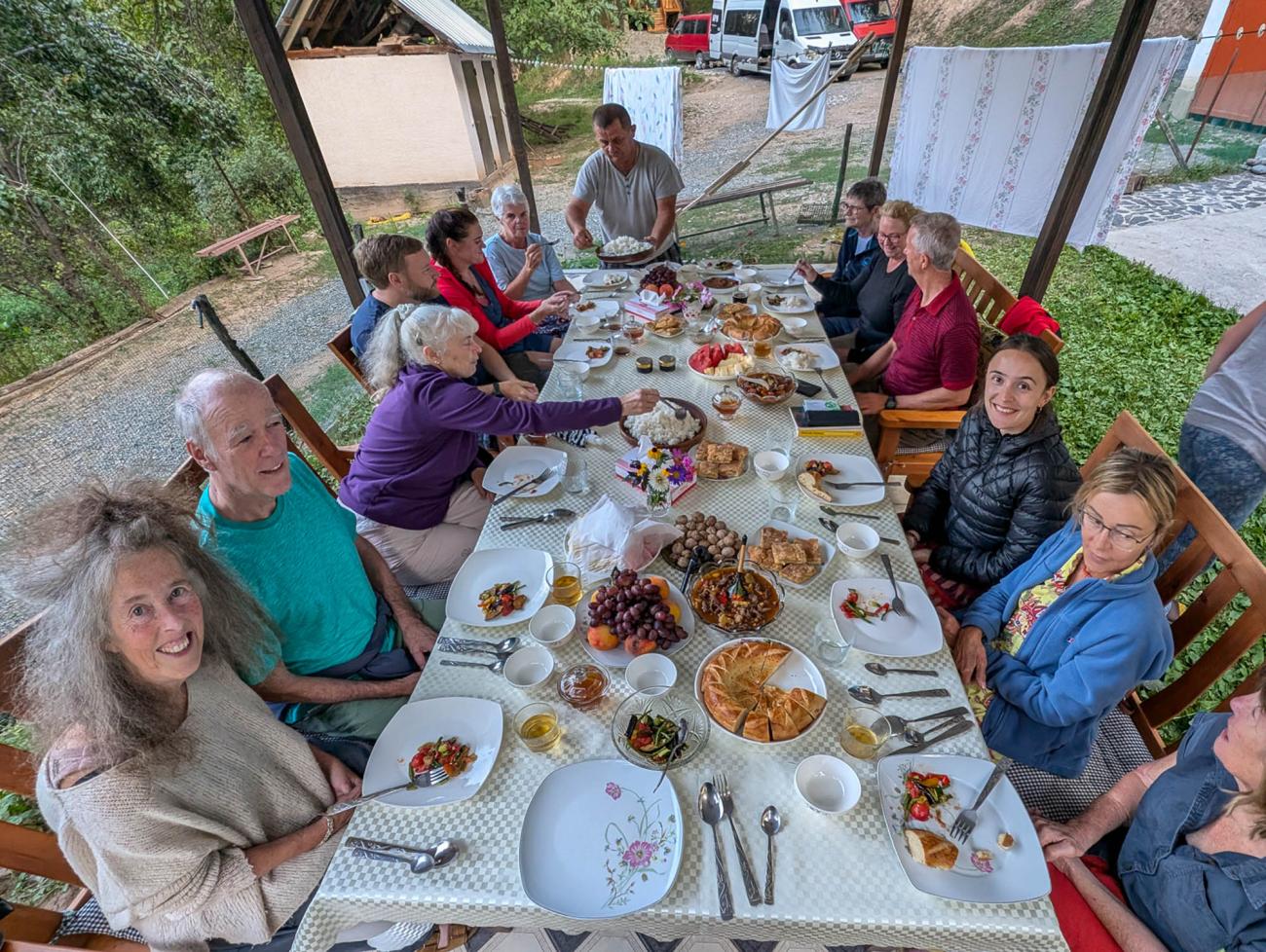
***
And in the morning
the hikers head for the walnut forest,
walk on dappled hillsides,
feeding apples to donkeys
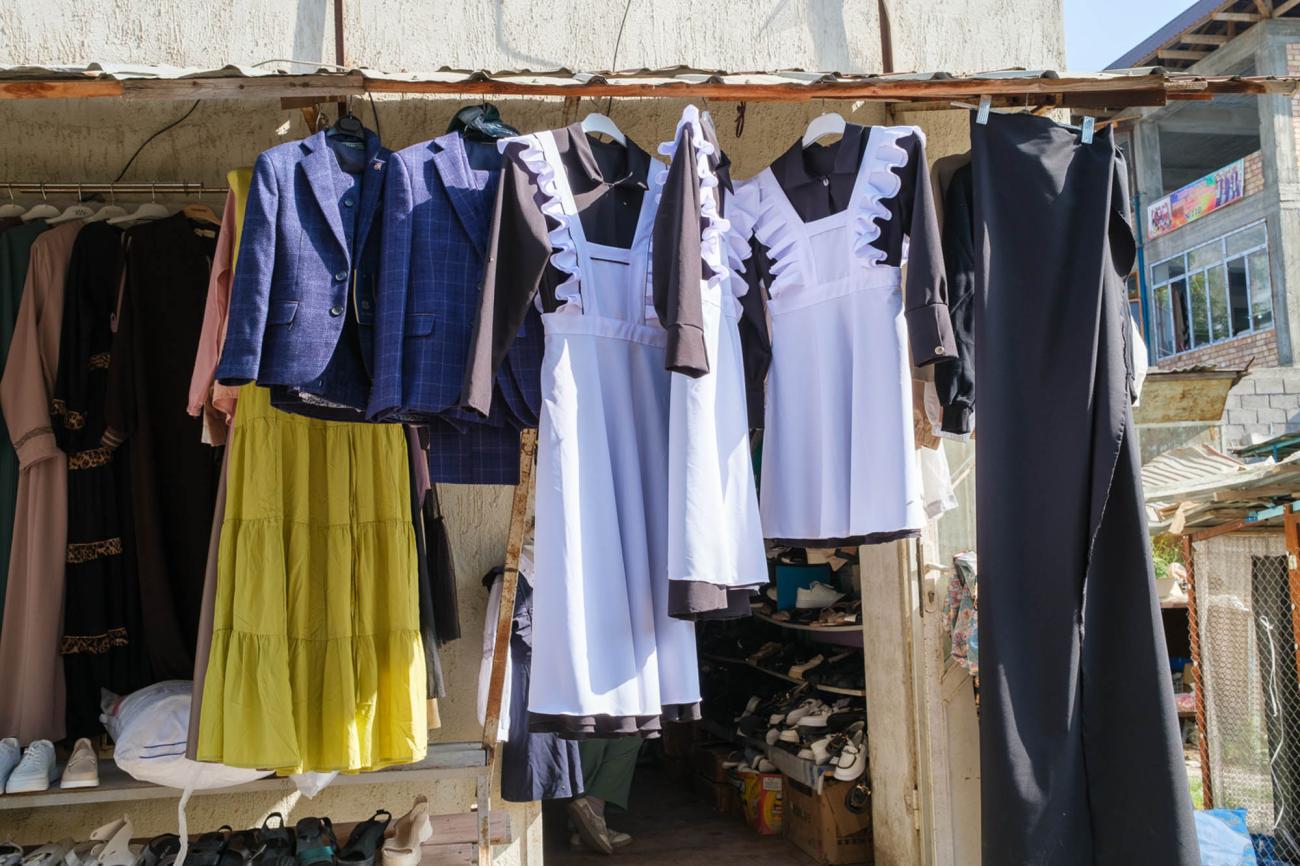
while in the market, black and white
school uniforms hang alongside
small boys’ woollen suits,
and foil-wrapped sweets and jellied fruits
are sold, and fatty meats
and ice cream flavoured with melon.
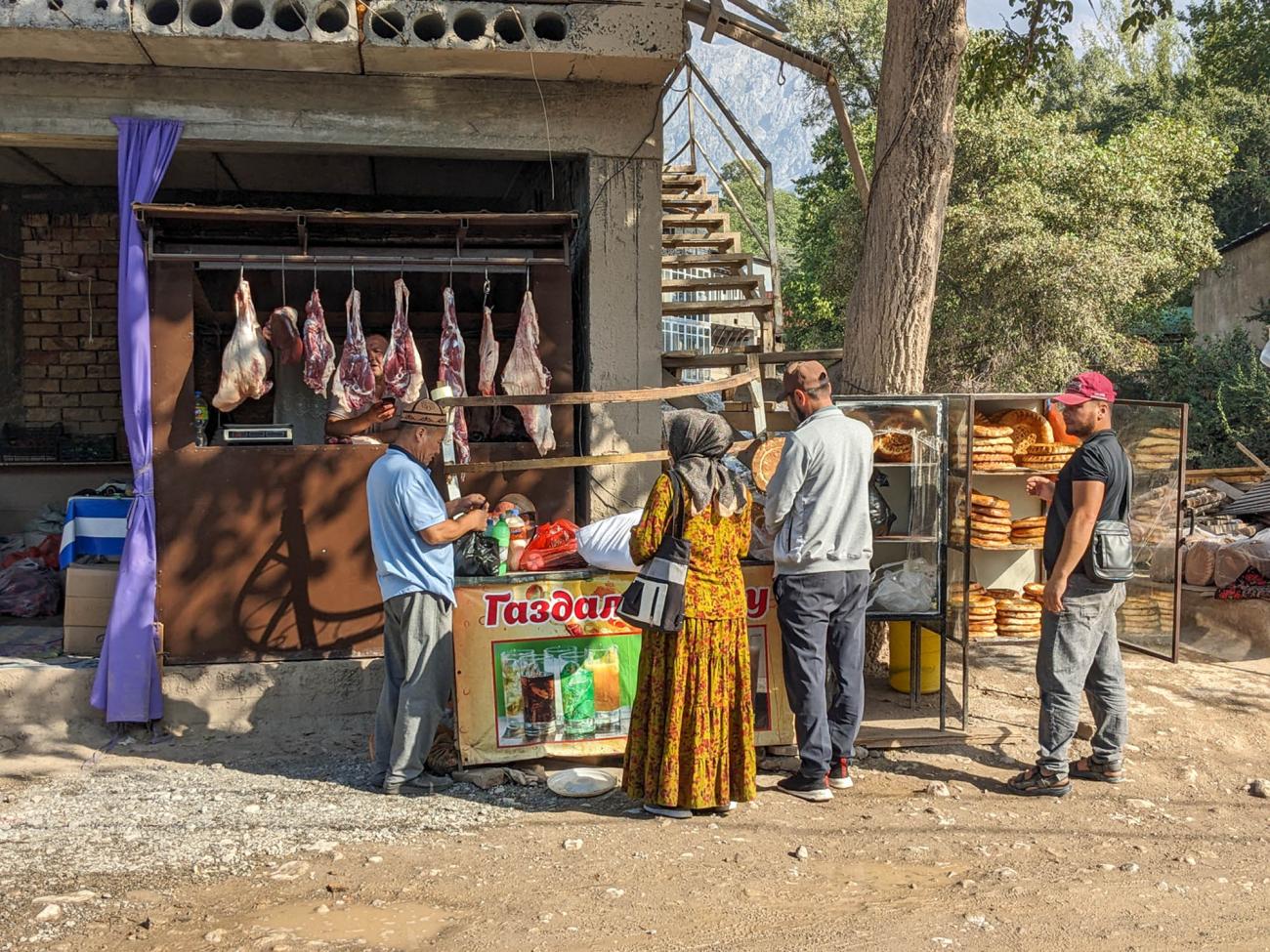
Later we sit down to eat,
plates of dalaman, slow-cooked meat,
with cabbage leaf and carrot diced,
the shredded salad lightly spiced.
Then Lenora starts the telling
of her story, soon compelling.
Tells us of her forced abduction
carried out upon instruction.
***
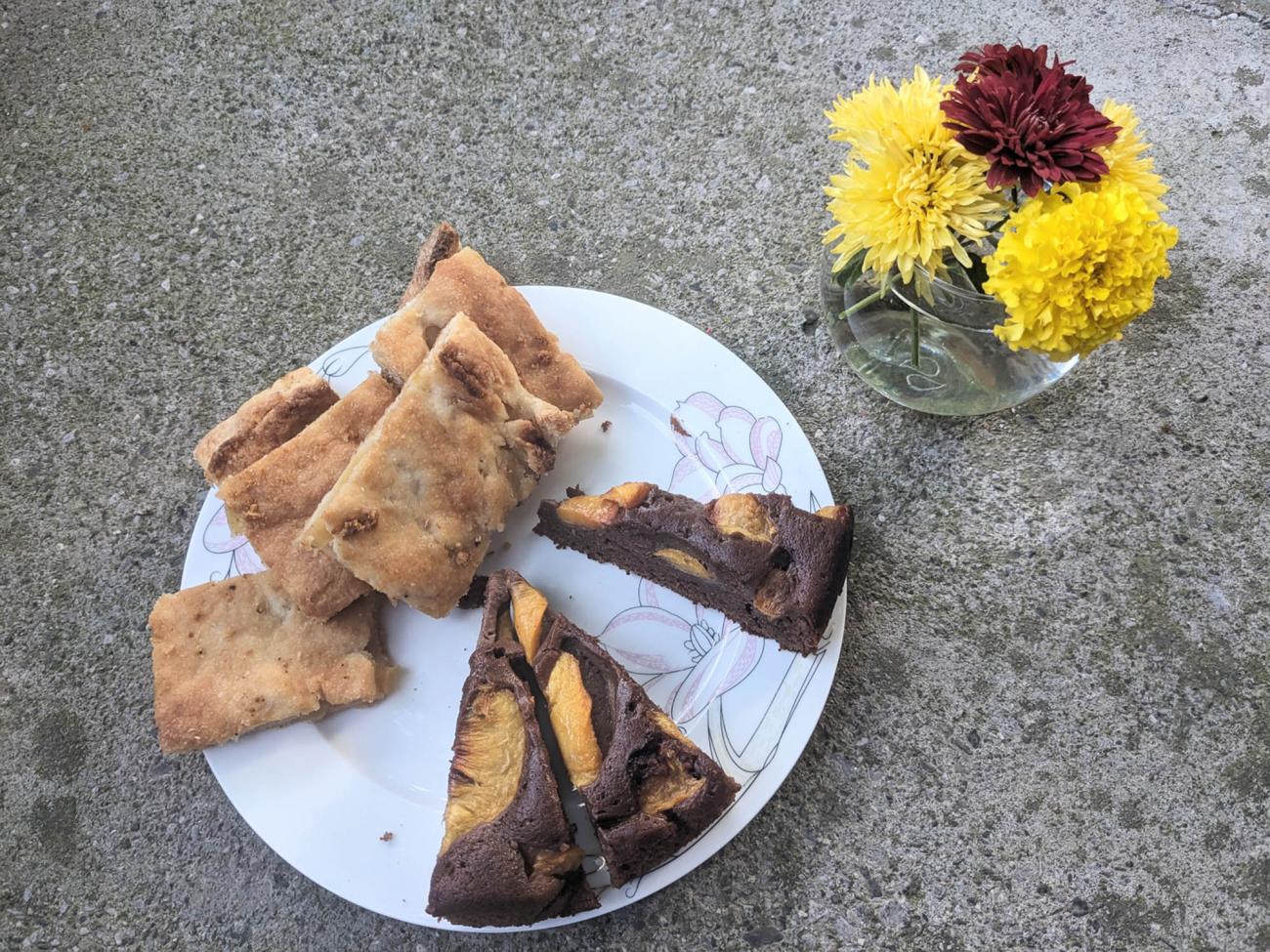
Fresh fried eggs and chocolate cake with peach,
our breakfast, as we start the day,
and soon the vans are at the gate
and once again, we’re on our way,
behind the wobble-bottomed sheep.
Apples drying on a corrugated roof,
women at the bus stop carry bags to shop
others crouch in fields to gather crops.
Along the roadside schoolboys run,
a dome gleams golden in the sun,
as we approach Jalal-Abad.
Plastic cars and bicycles are sold at shops
where brooms and rugs are hanging,
repair shop where the men are banging
metal sheets, and on the streets
washing machines are sold at Techno Tonka.
From there, the drivers make the climb with care,
through the slides of fallen stone,
picnic in the cooler air
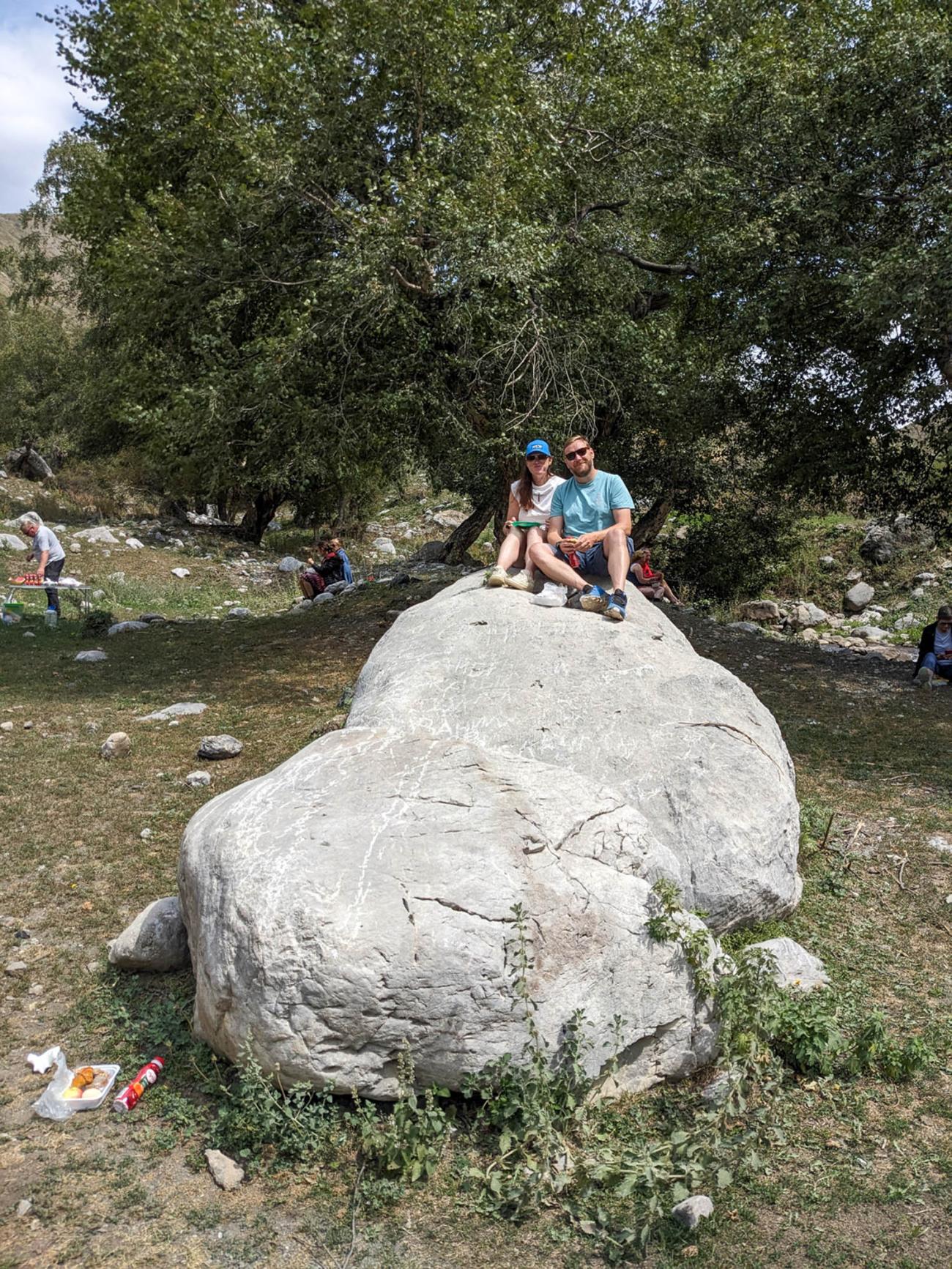
until at last we come so high
we reach the height of eagles.
Dust clouds travel with us from the pass
where goats are gathered on slopes of still green grass.
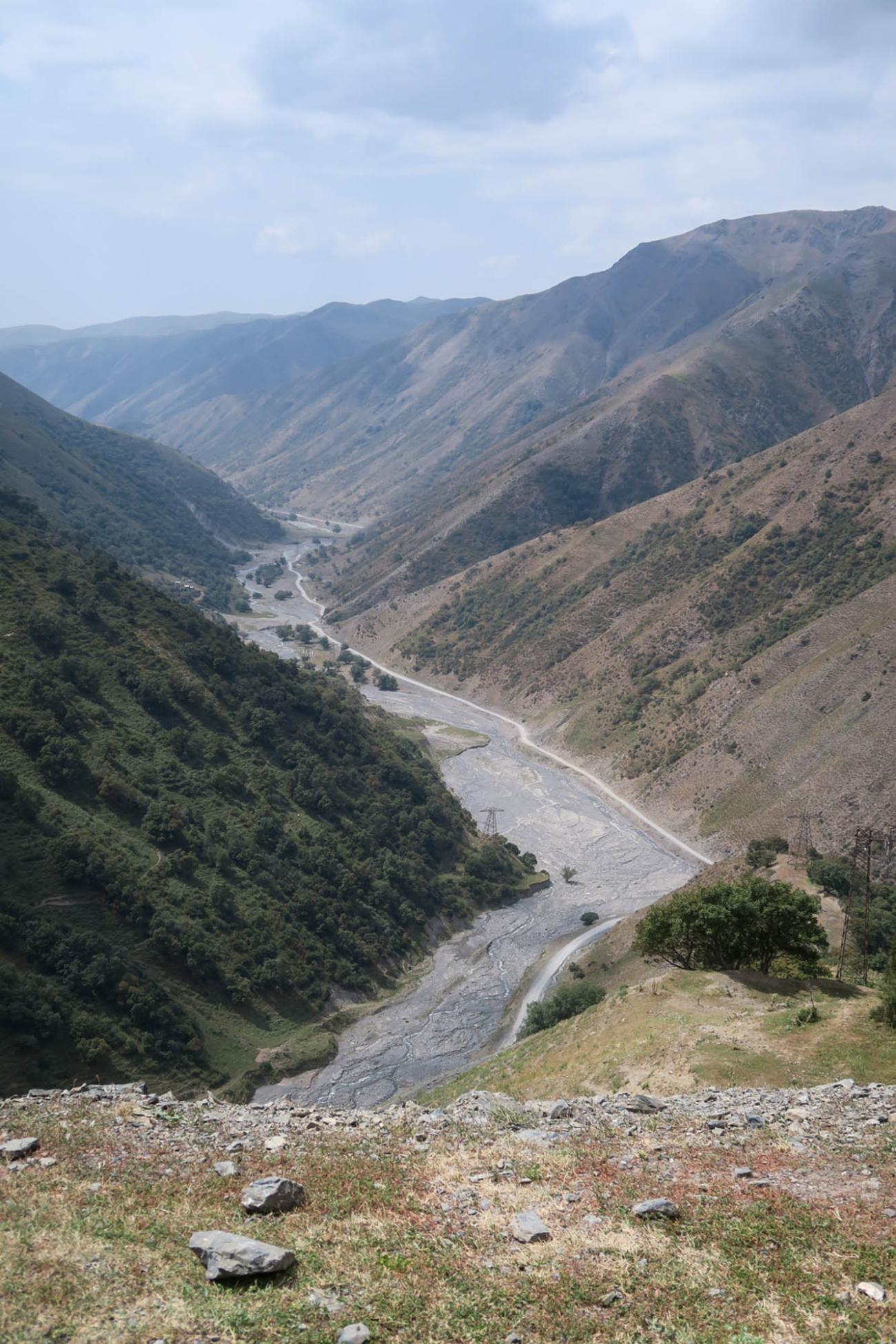
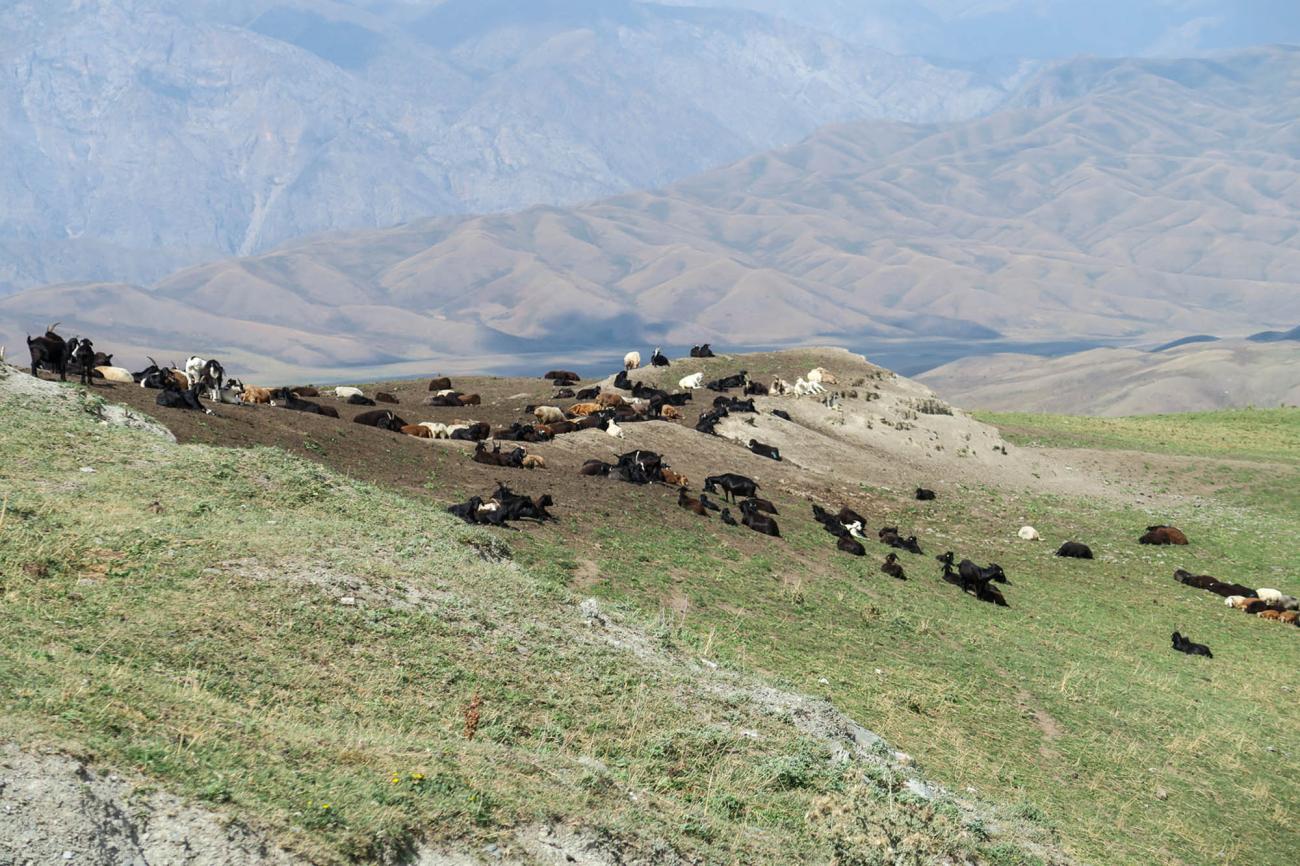
And now the landscape changes once again,
and we drive through new terrain
where horseback herder leads his cattle.
Past roadside yurt we rattle past the slopes
where feathered grasses grow.
The road is rough, the going slow.
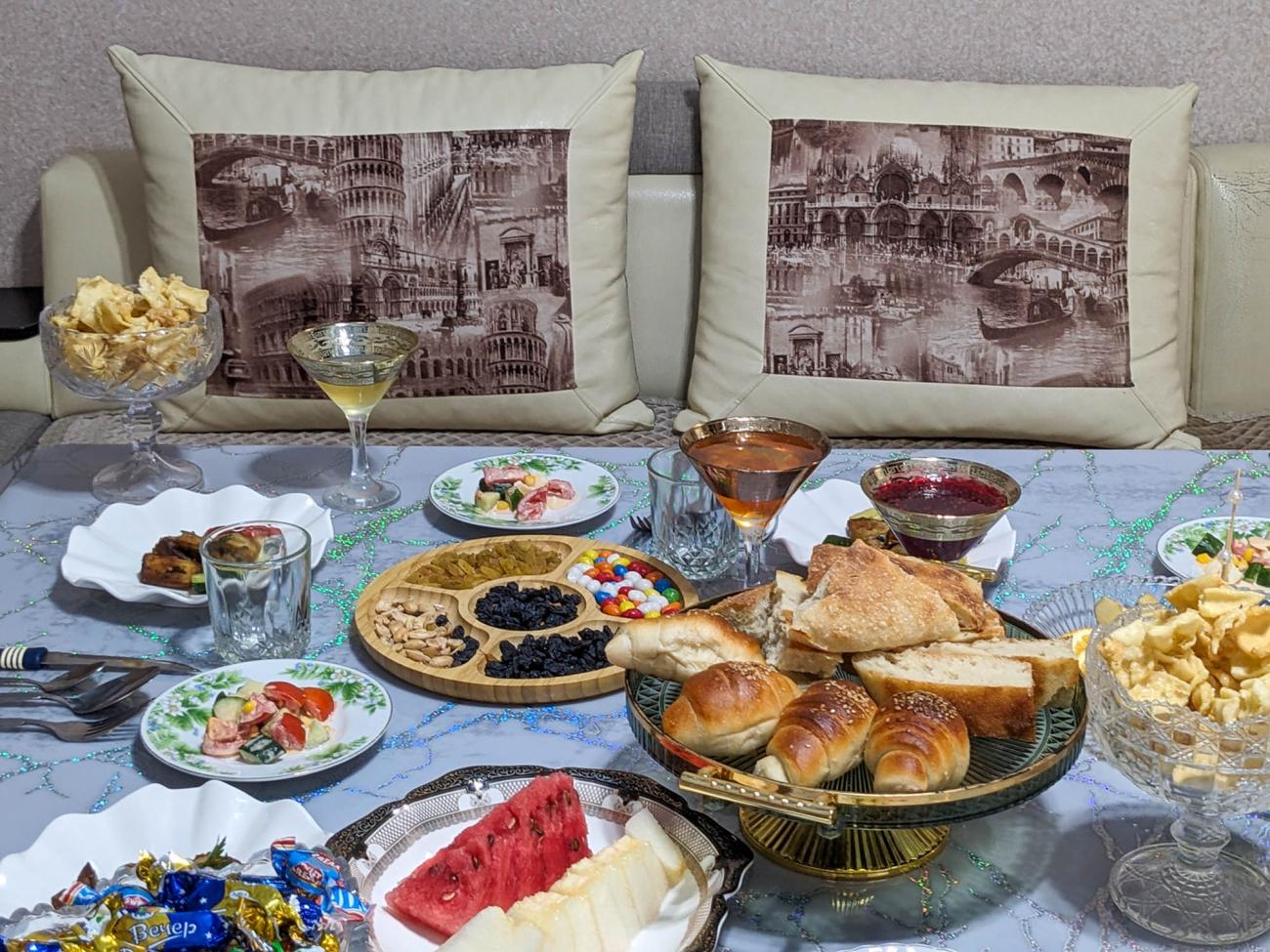
The table at the home stay where we sleep,
is heaped with melon, nuts and treats
of local bread and foil-wrapped sweets
we eat with roasted vegetables and rice,
and honey served in gold-rimmed glass.
And some sleep to the sound of a wedding
celebrating as the small hours pass.
***
Along the valley floor, on either side
the loose folds of hillsides roll
and in the field a man lifts hay.
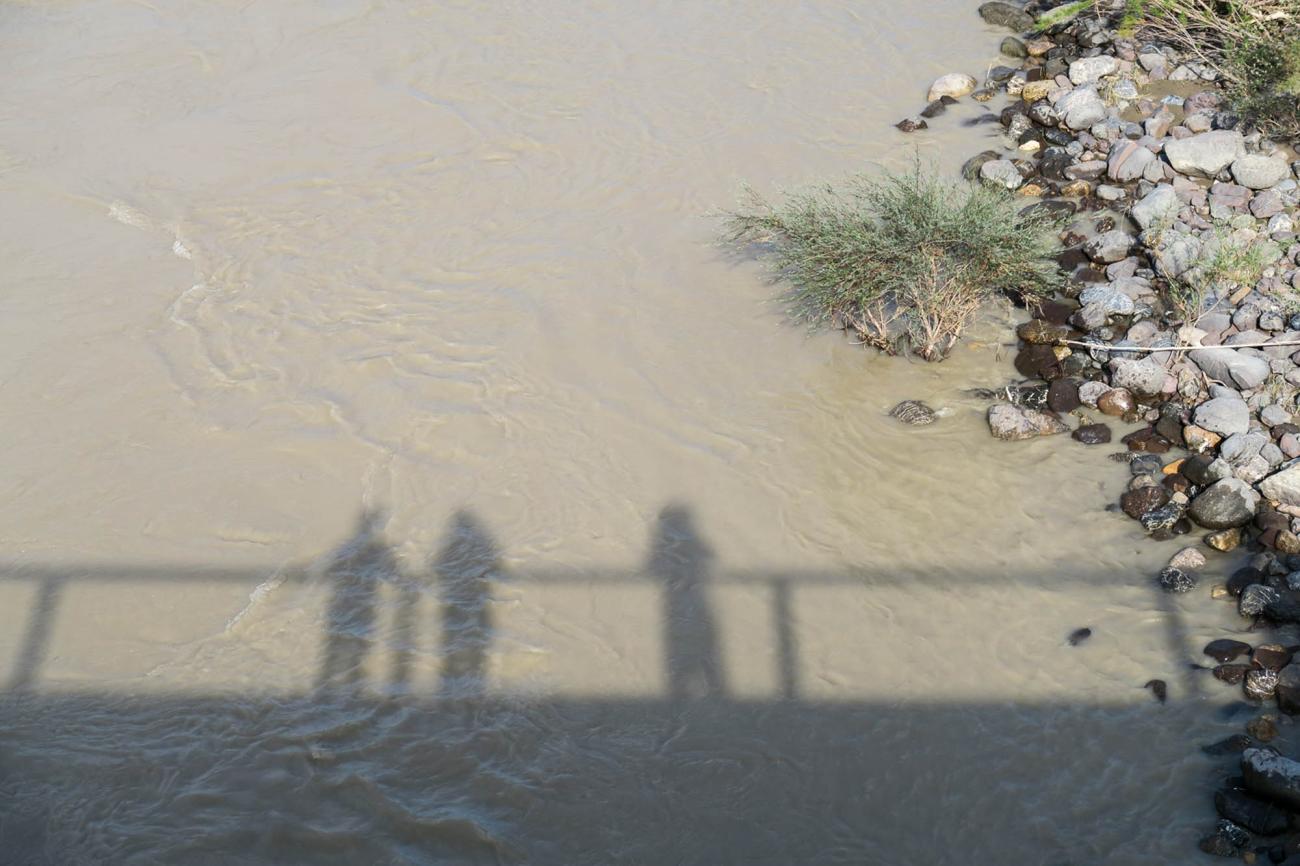
We cross the Naryn River on its way,
to where we’ve been.
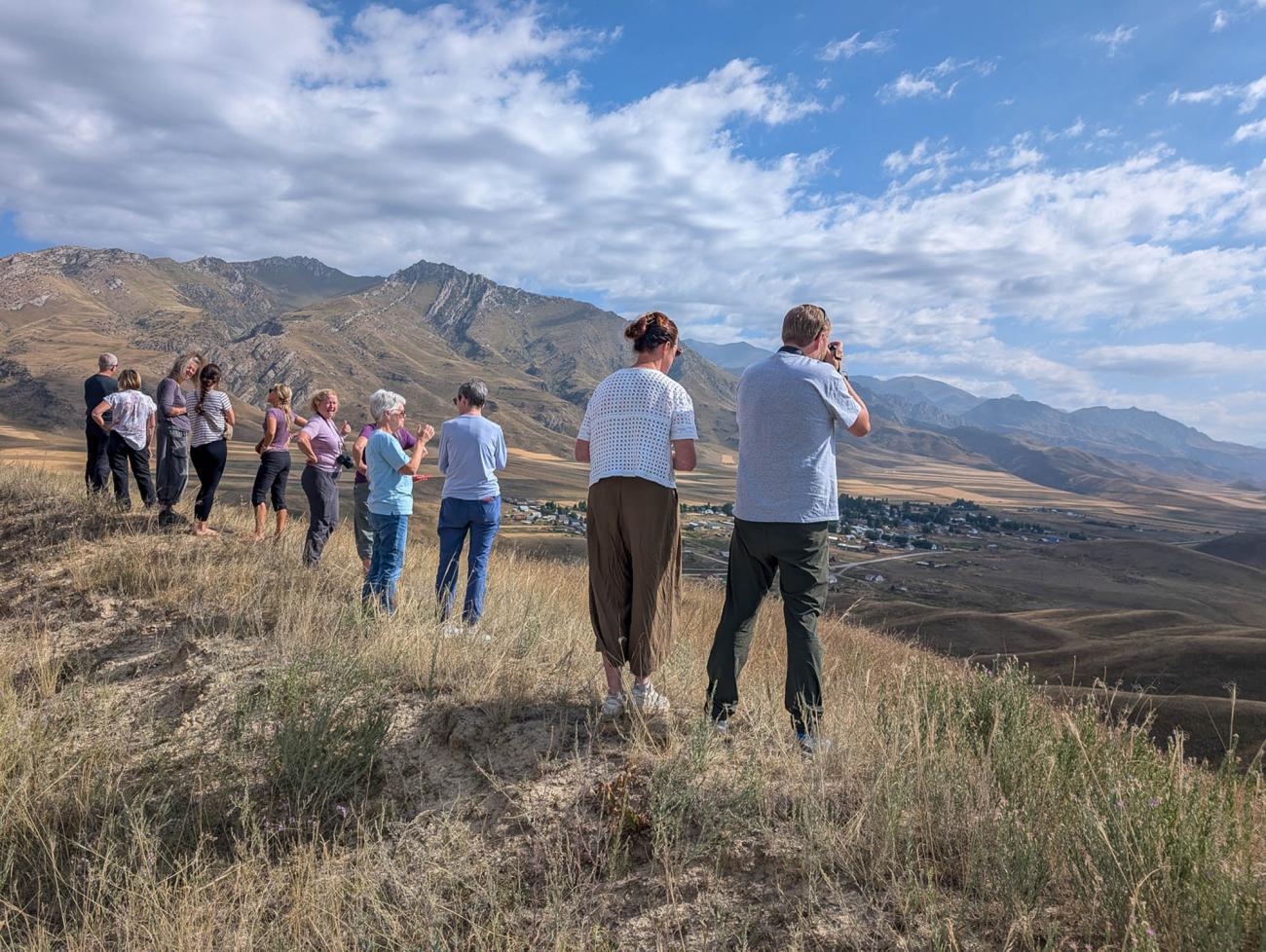
Below us a village spreads peaceful
where the hunting bird soars
high above the valley floor.
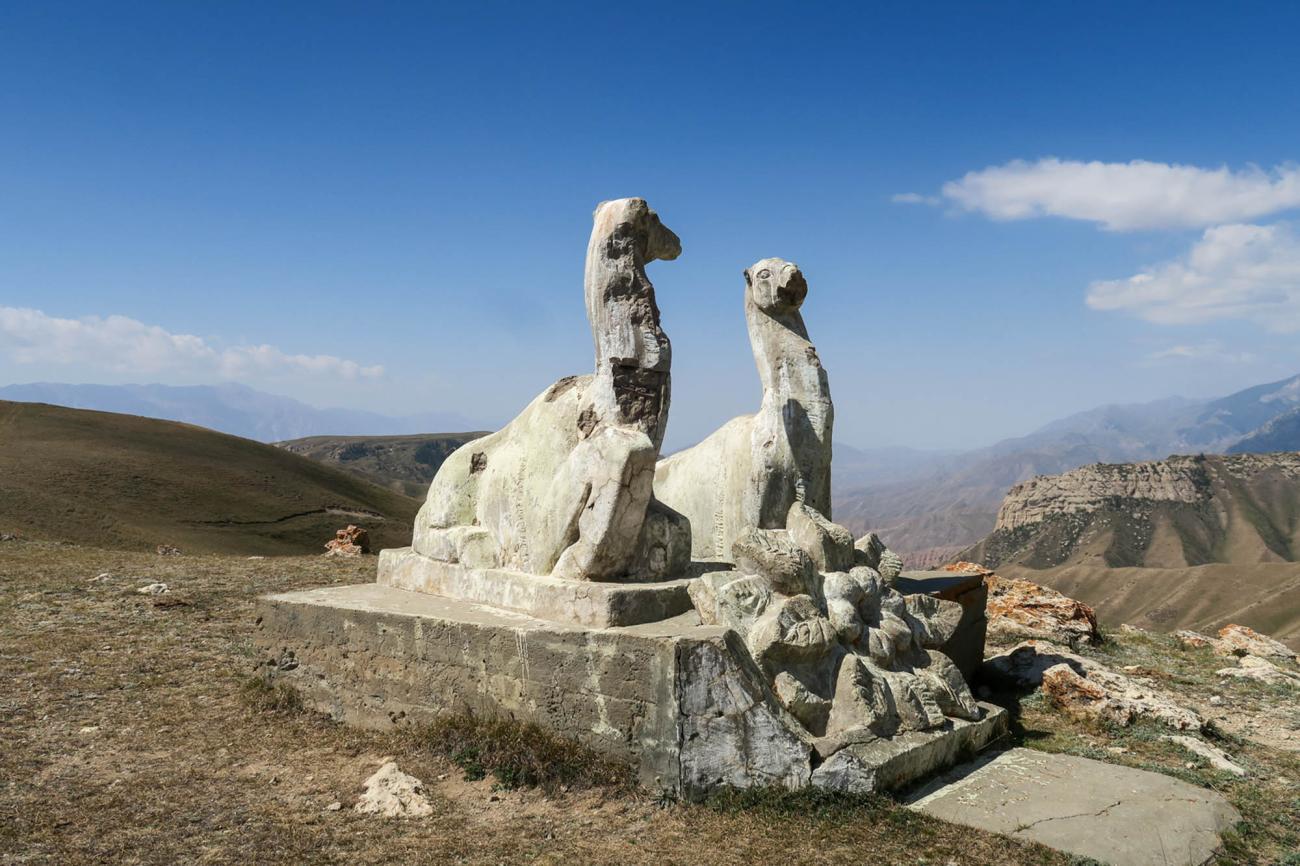
At Kharagpur, named for the coal dust
from the mines that blackens snow,
a pair of camels look down to where the river winds.
A man sits on a donkey on a village street,
round his feet, small boys outside the village shop.
Washing hanging at the small white house
and on the outskirts, local graves are marked
with metal star and crescent moon.
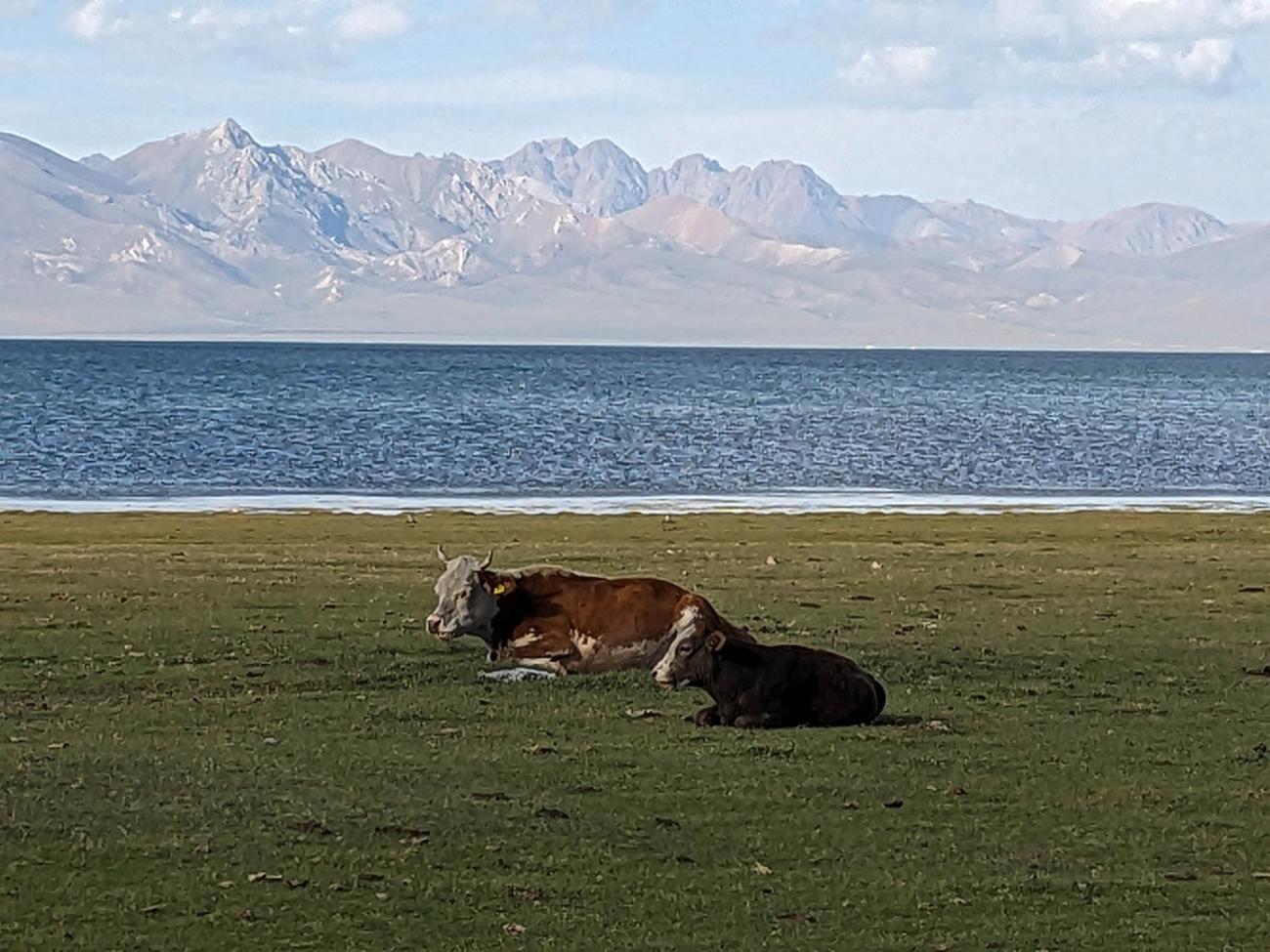
At the edge of Son Kul Lake
the afternoon is cloudy bright.
Horse and cow graze the pasture
where edelweiss earlier flowered white,
at Baiysh camp.
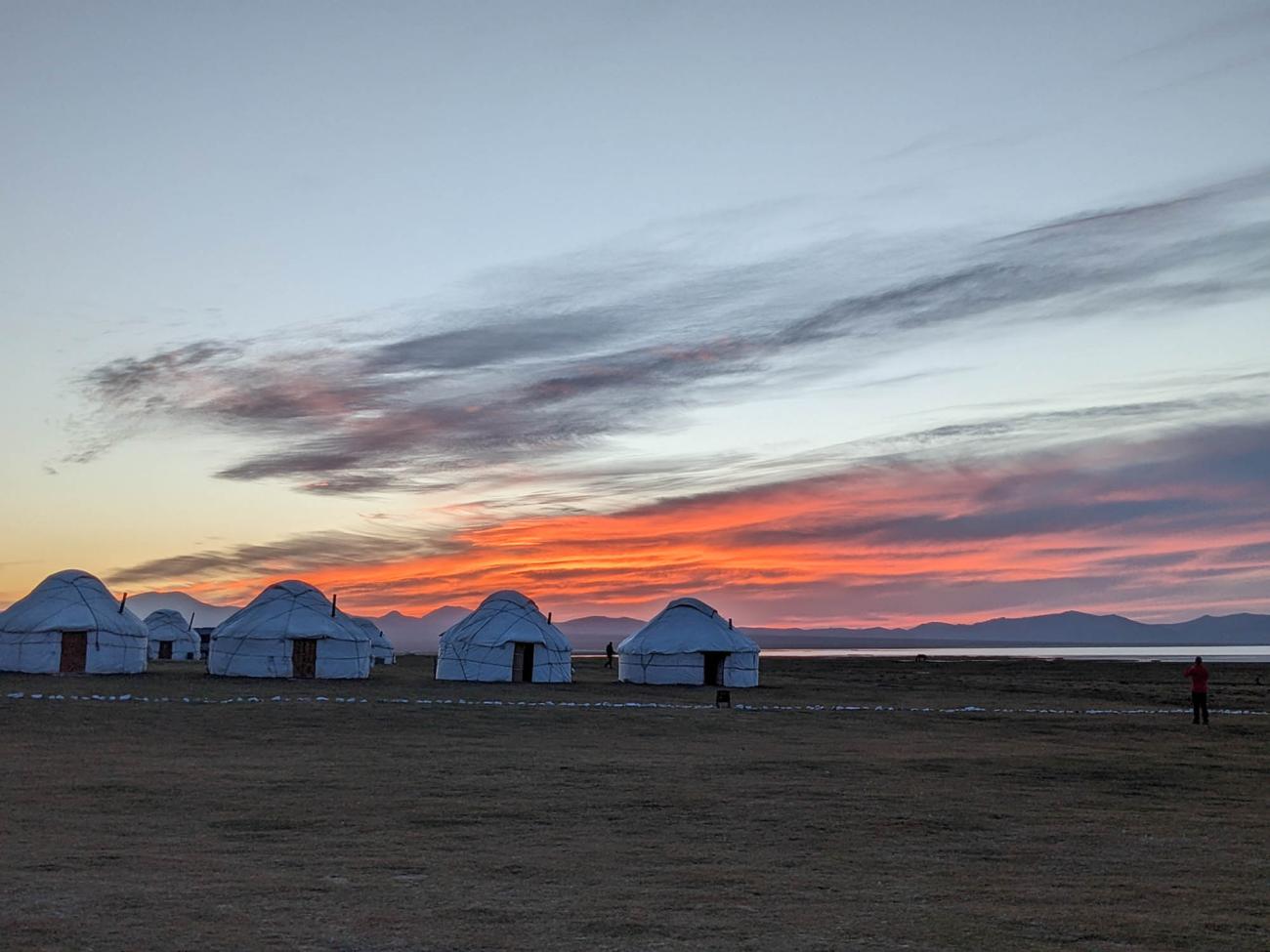
The white yurts silhouette
the pink-streaked evening sky,
before we settle for the night.
Our stove will keep us warm
inside our felted home,
patterned rugs and tasselled walls,
decorate our trellised dome.
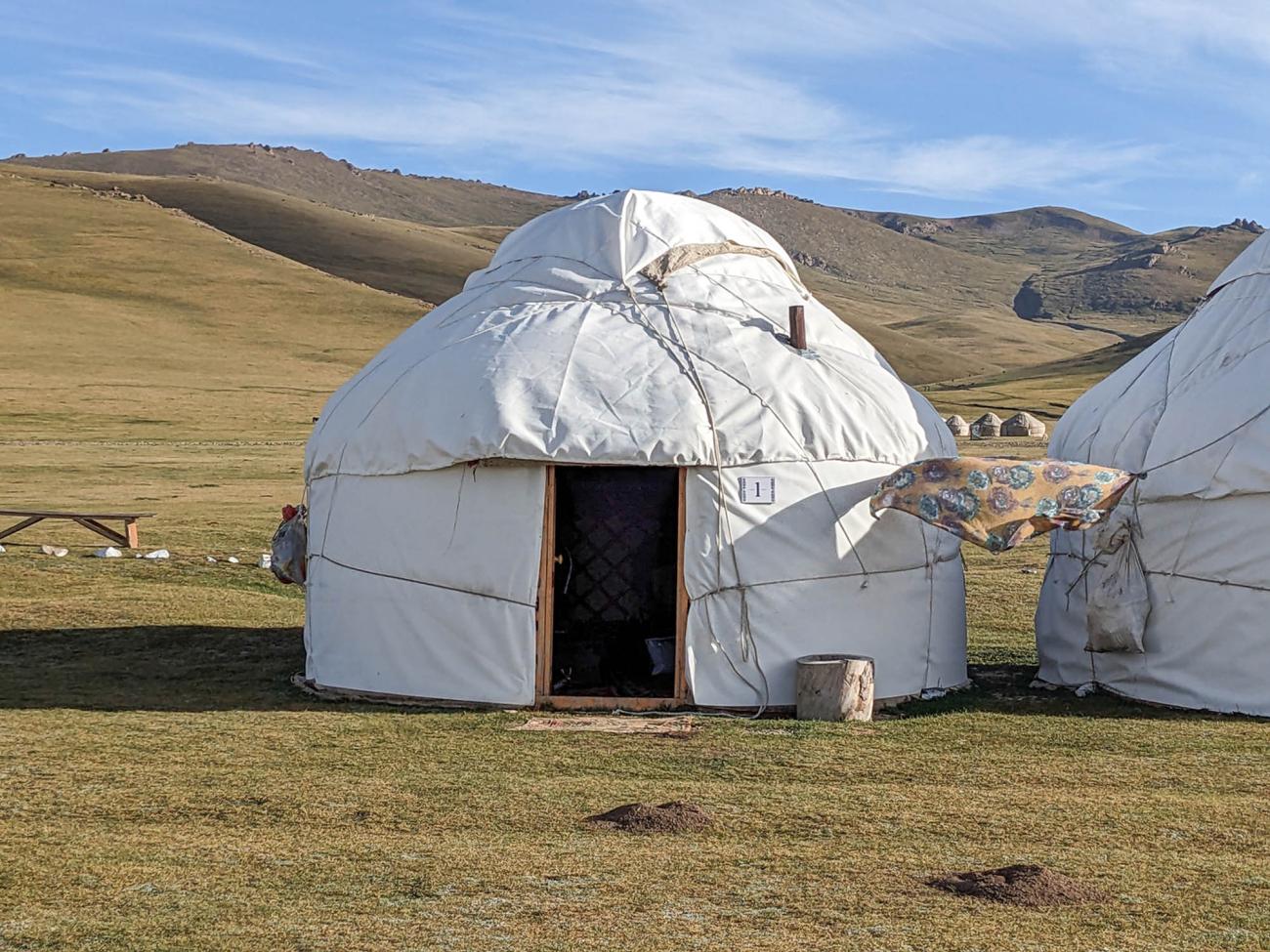
***
For some, a morning walk along the ridge
to visit petroglyphs above Son Kul,
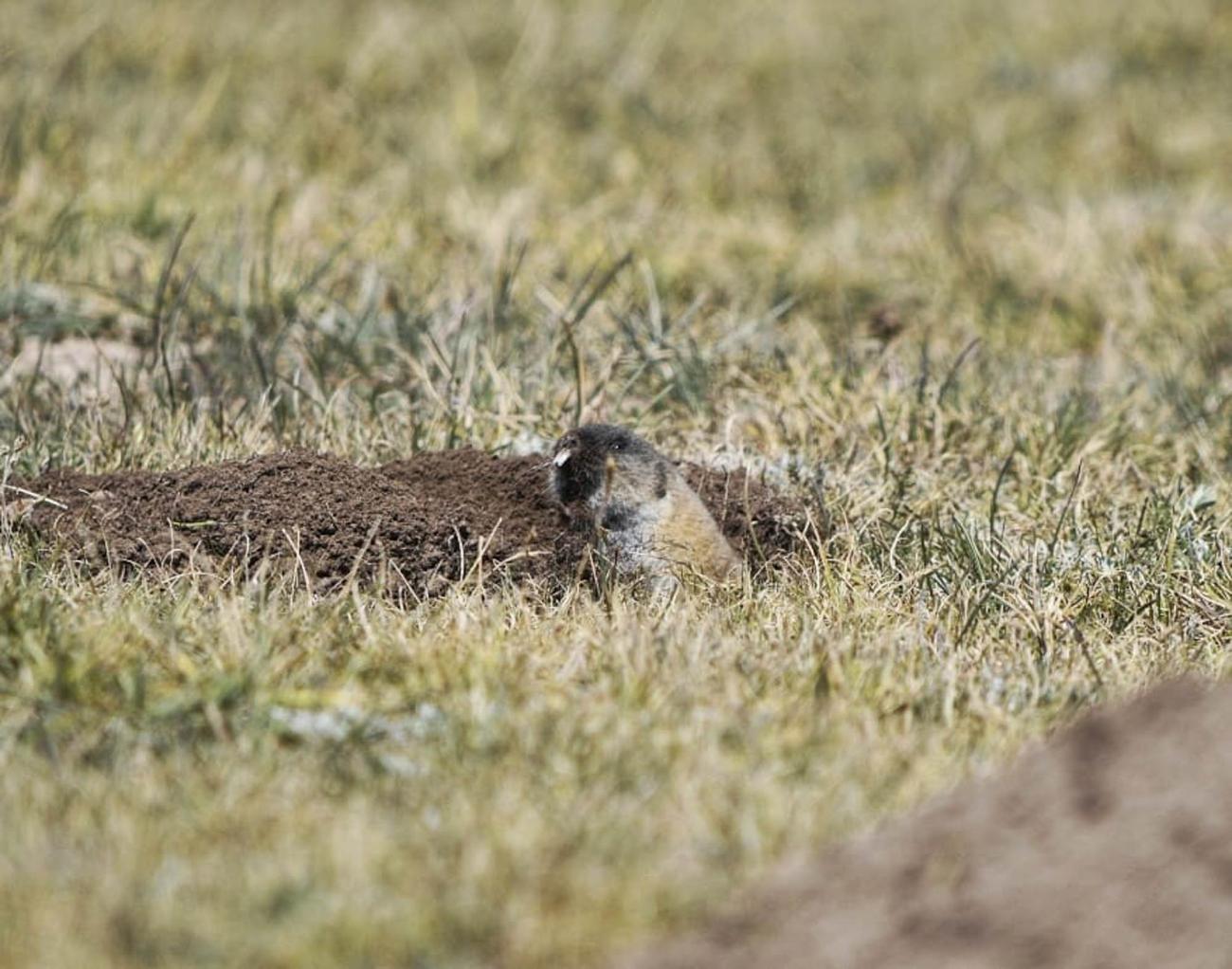
while down below we watch the ground move,
as pocket gopher thrusts the earth
stalked by Ben, and then we lunch
on homemade noodles, drink our tea,
before we all drive off to see
the shepherd’s playing Ulak Tartysh.
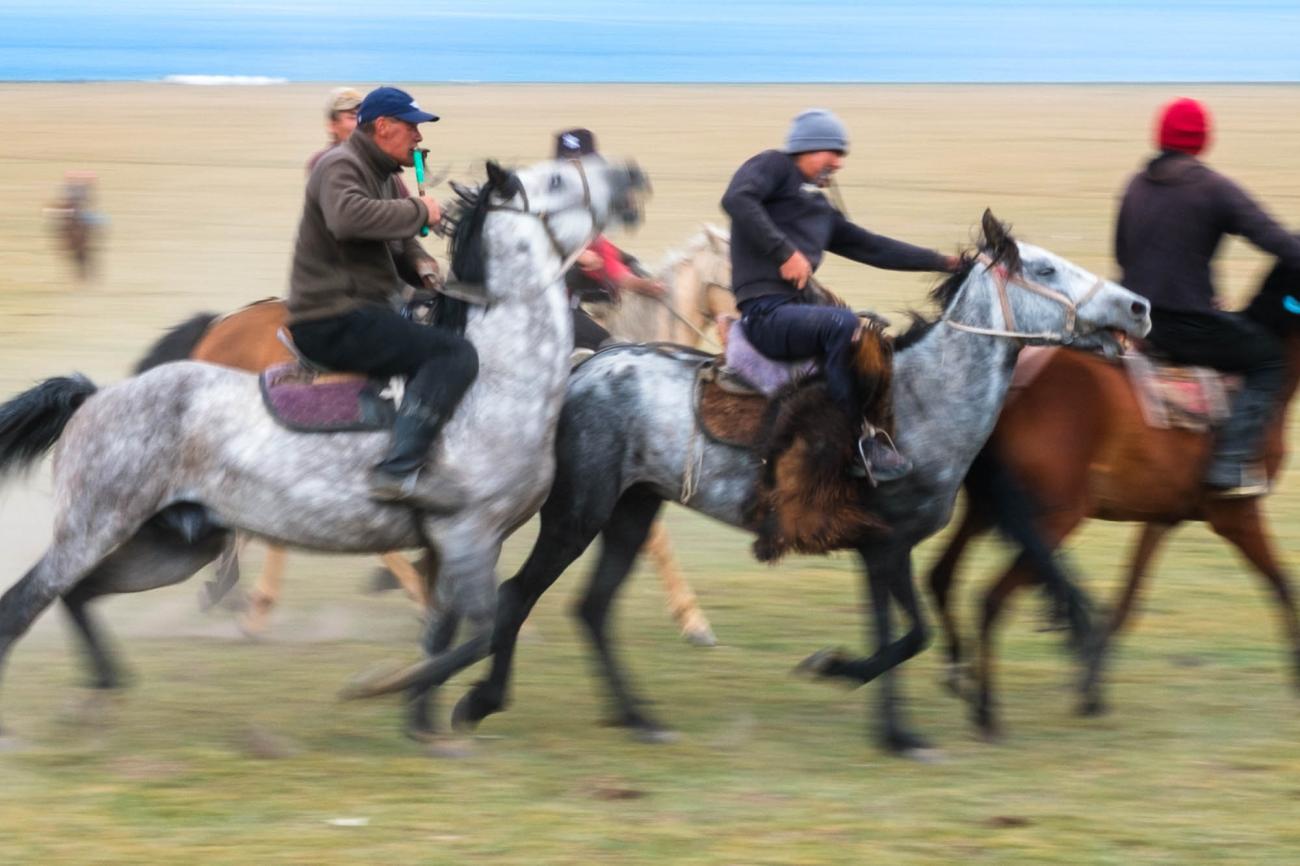
From their saddles, riders swoop
to claim the carcass from the ground
as the strongest of them scoops
the headless goat, gallops down the field,
to place it in the homemade goal.
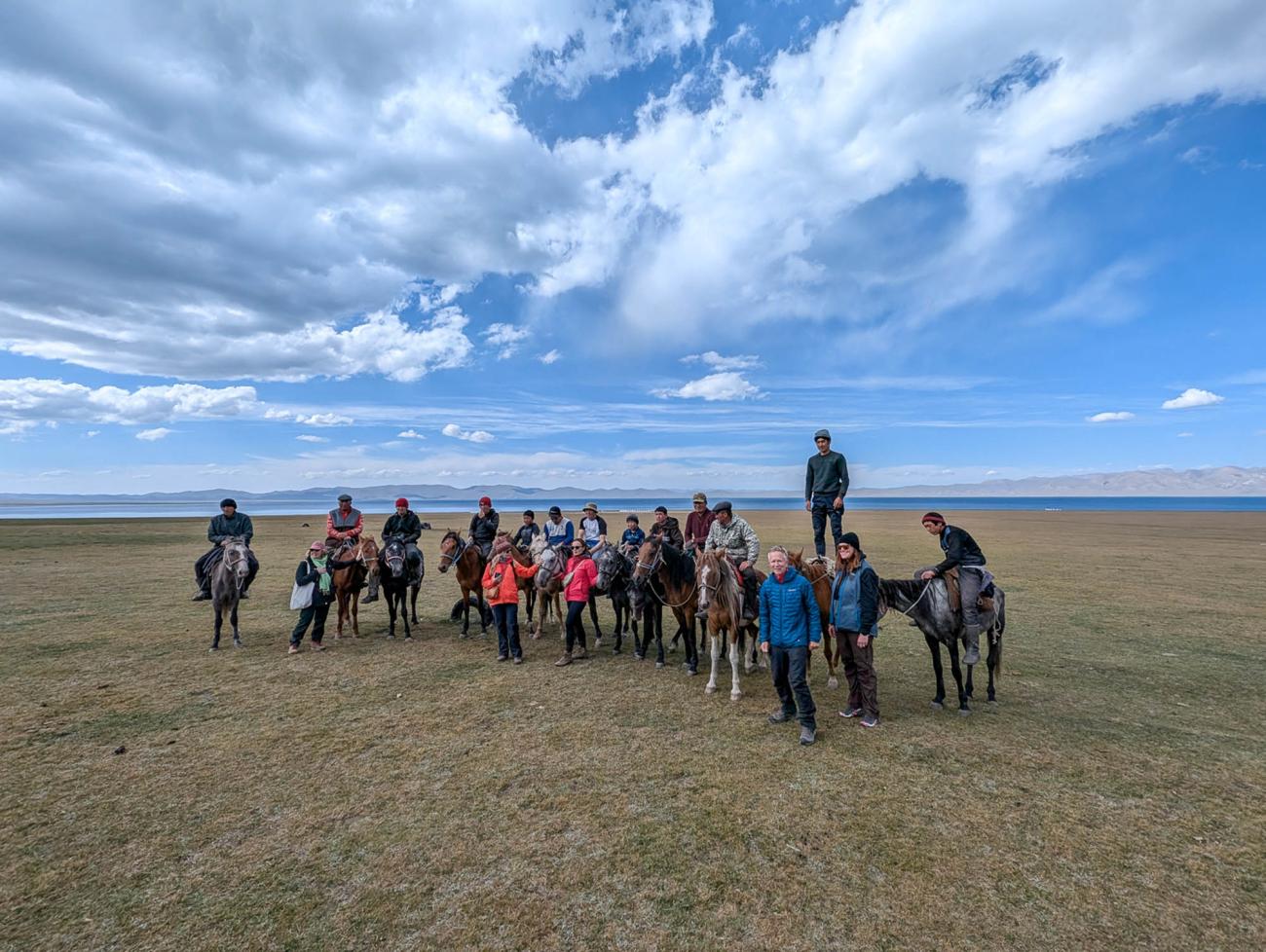
And when the game is done,
the men who’ve travelled many miles
will feast on roasted goat meat,
whether they have lost or won.
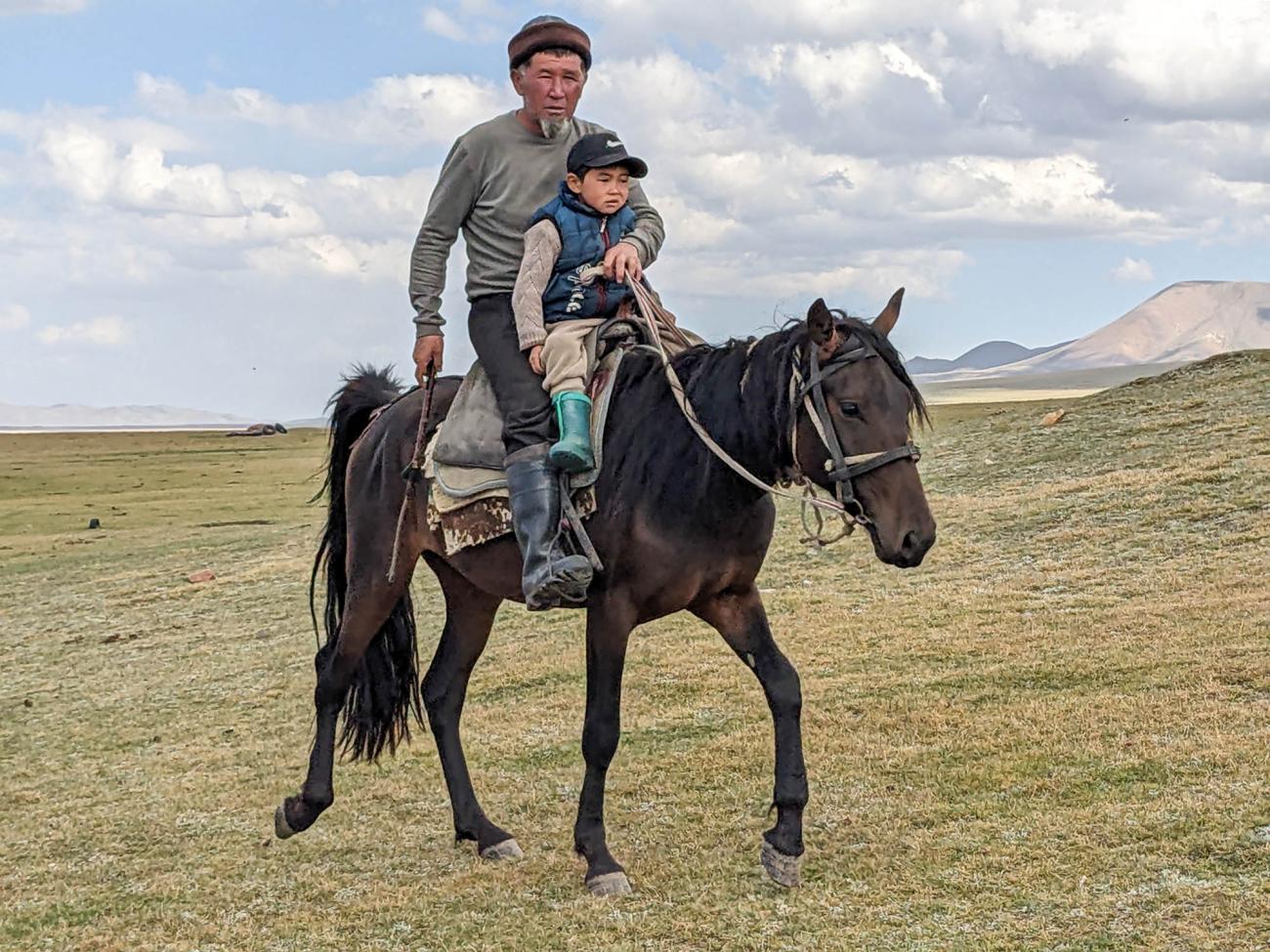
***
We say goodbye to the women
who have fed us porridge and pancakes,
fresh fried eggs and poured us tea,
and then out along the lakeside road
where herds of horses gallop free
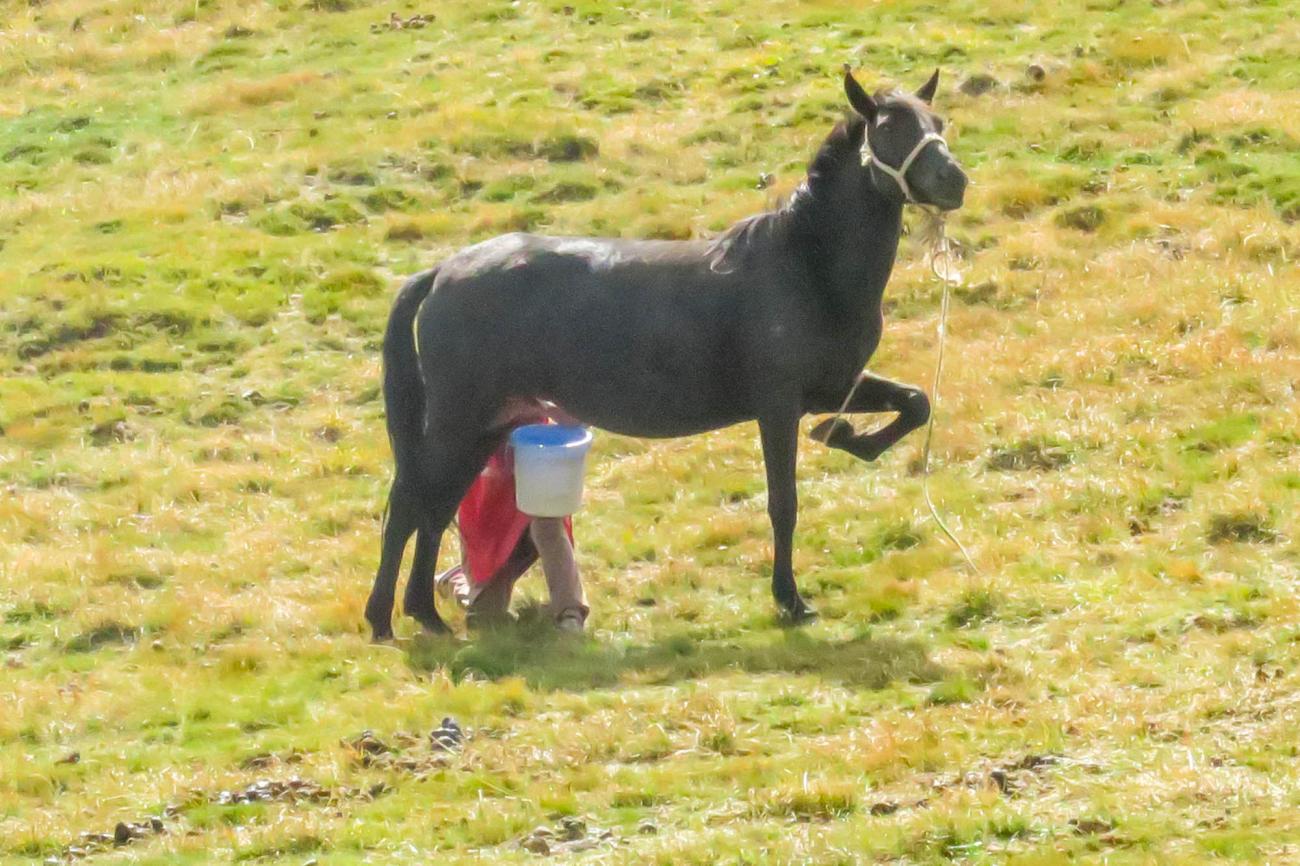
and woman in a red tabard,
milks her mare.
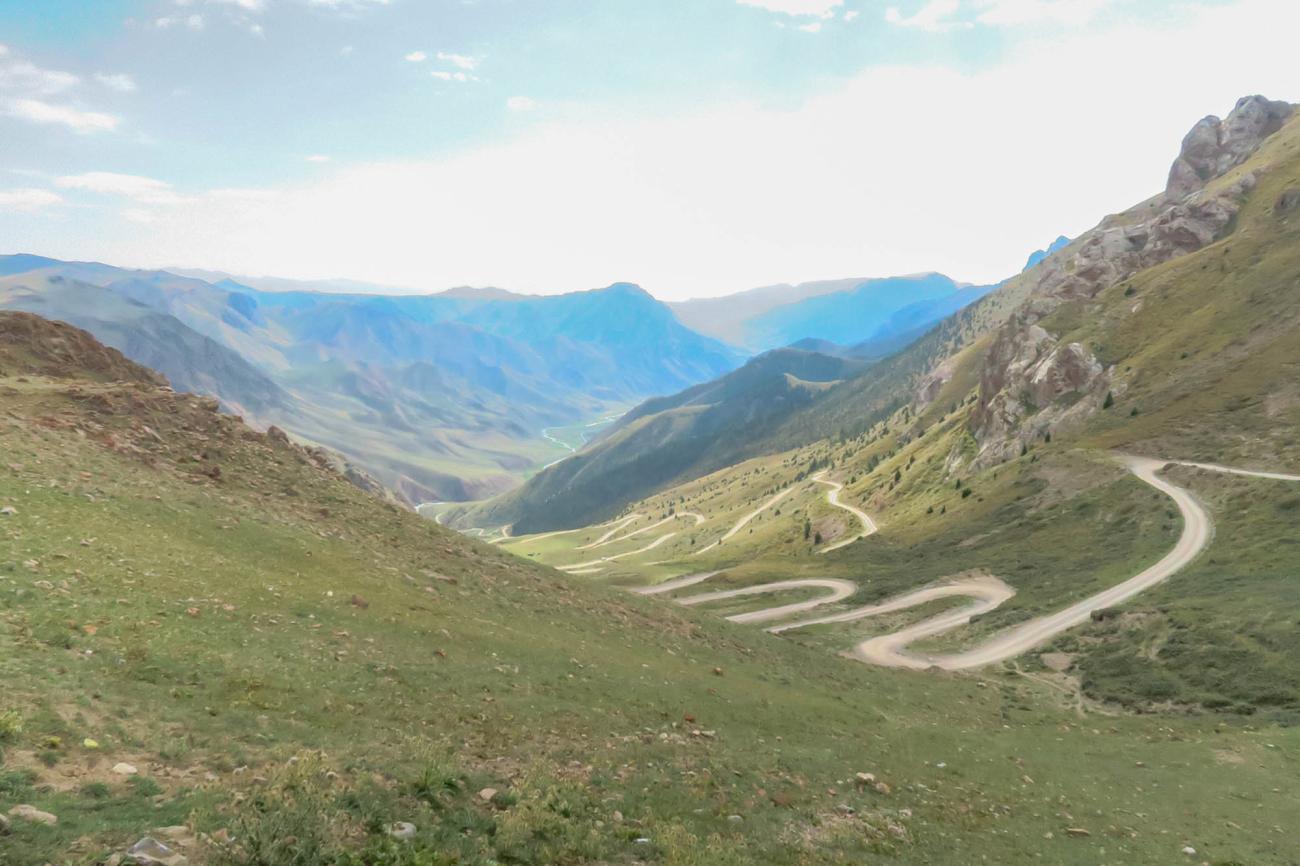
From the top of the Thirty-Three Parrot pass,
on down the sidewinder, mythically measured
in elephants and monkeys,
where tawny butterfly and hunting bird hover
and the marmot burrows on the thistled slopes
above the waterfall where Tamerlane allegedly
buried his treasure.
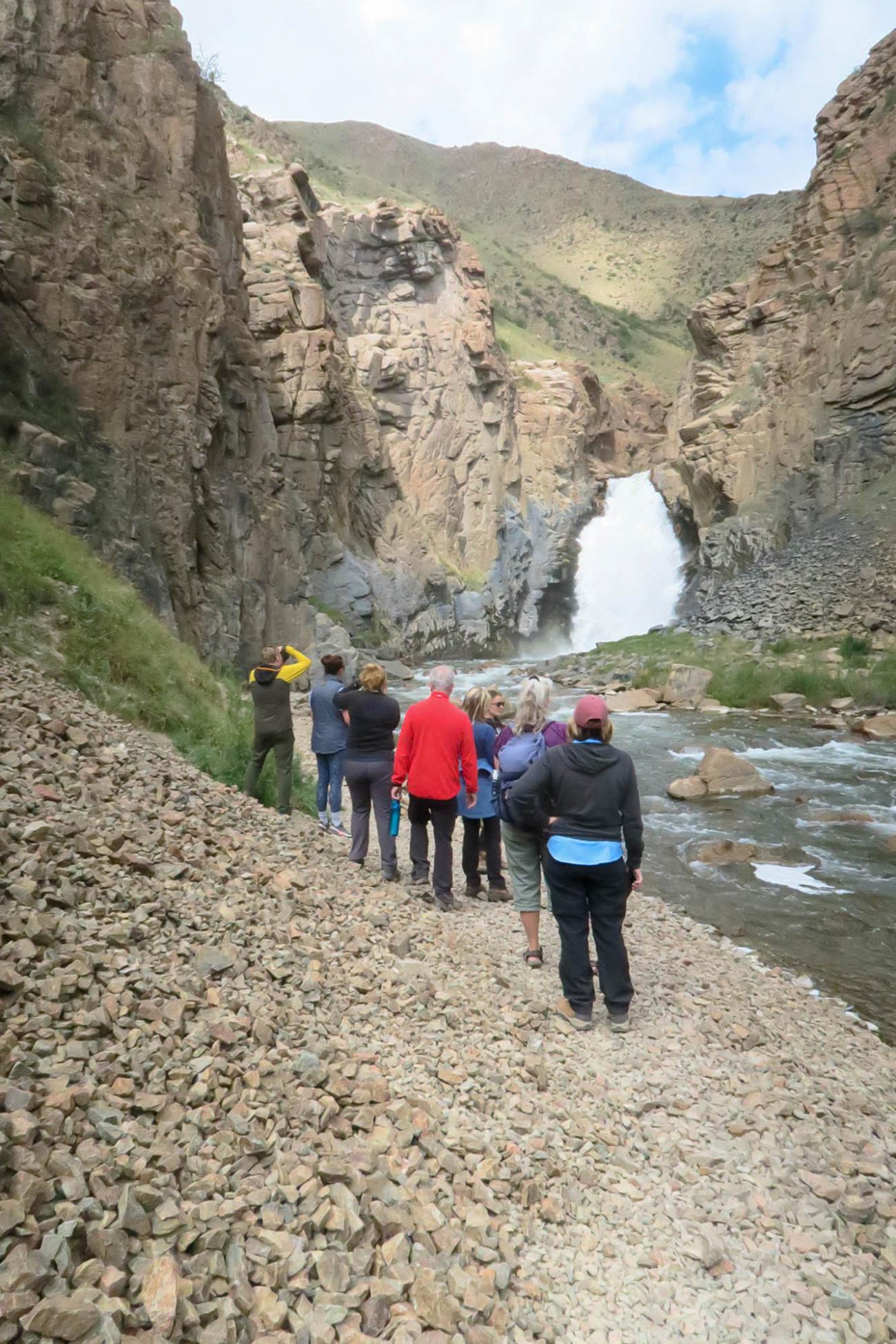
And down and down, and up, and down
to Ottuk where the stony road
becomes Chinese asphalt
that speeds us through the village
where children help their mother
wash the family rug at the roadside
and gardens are fenced with patterns of diamond.
Beyond, to Naryn, where we lunch on dumpling soup
and peppers, stuffed, delicious, green and red,
and chunks of Baktagul’s homemade bread.
And the woman whose name means Flower Garden,
tells us how we should really stay with her -
clearly a natural entrepreneur.
Then out past Baby Luz and Kubult Travel,
and names of shops we can’t unravel,
and on, the upward climb via Globus.
Off the highway, we once more bump and grind,
onward up the gorge,
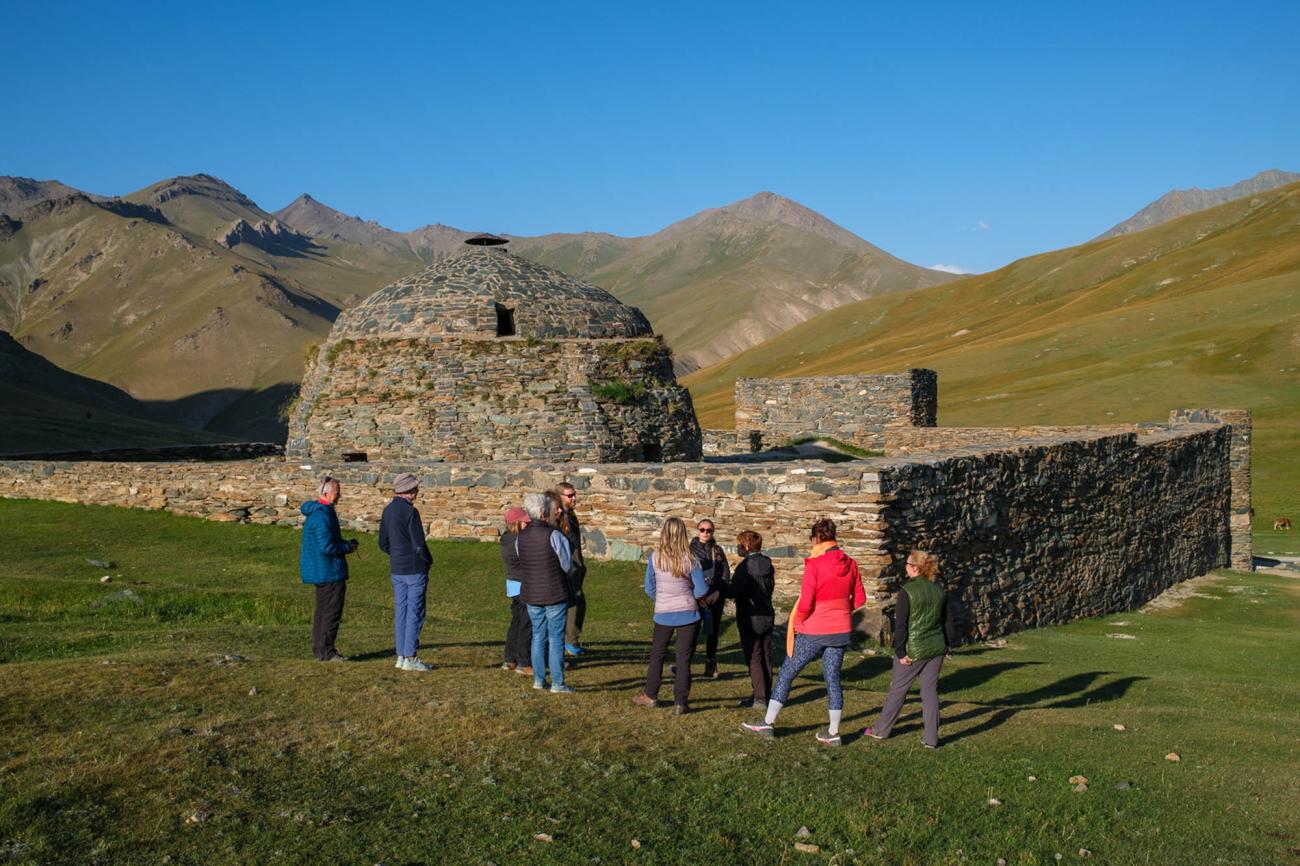
until we find ourselves at Tash Rabat,
which guidebooks tell us was a caravanserai,
and Olga tells us why, it was instead,
a place of pilgrimage for monks.
Our own day’s journey ends
where yurts line the riverbank,
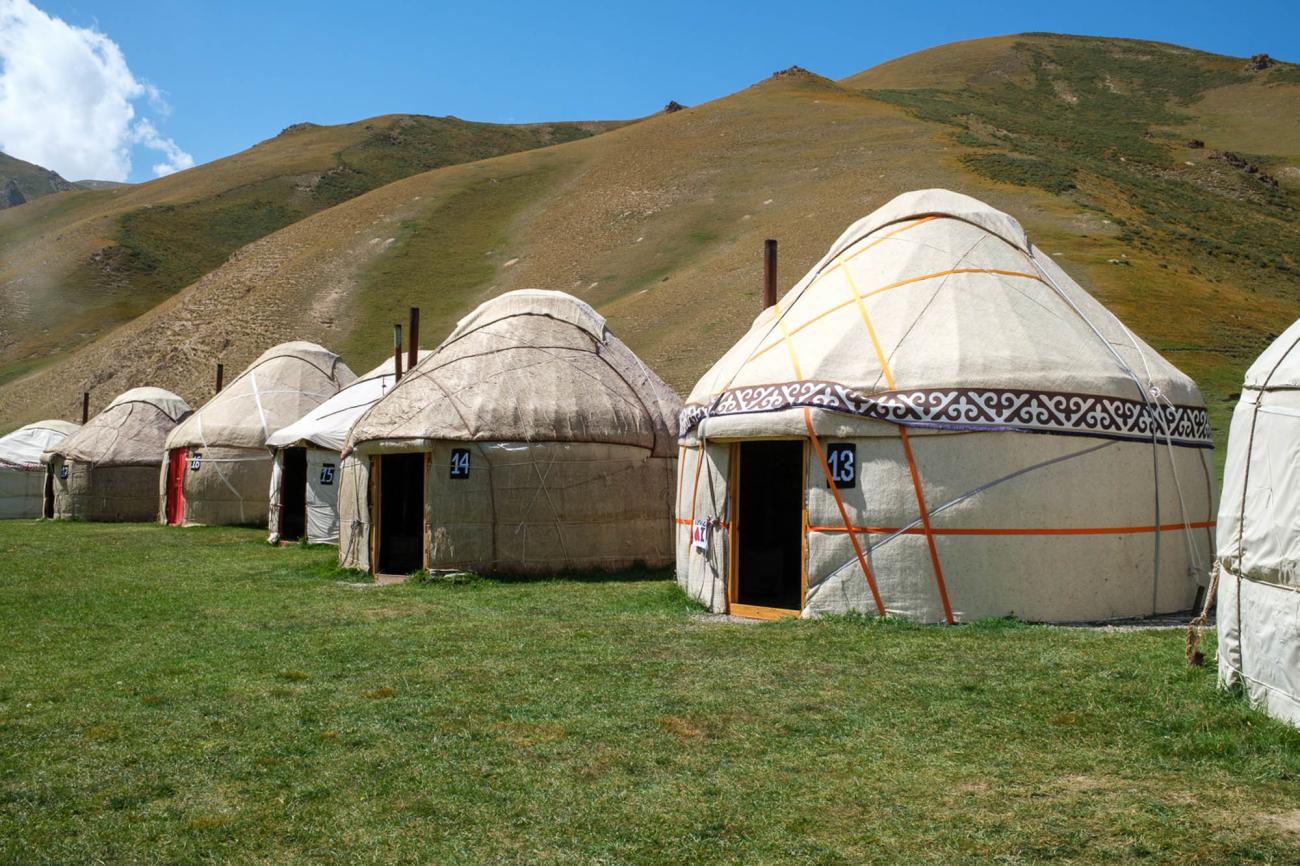
red flag flying against evening sky,
and the two of us are first to try the banya.
The days dust washed away
in scoops of cold and hot.
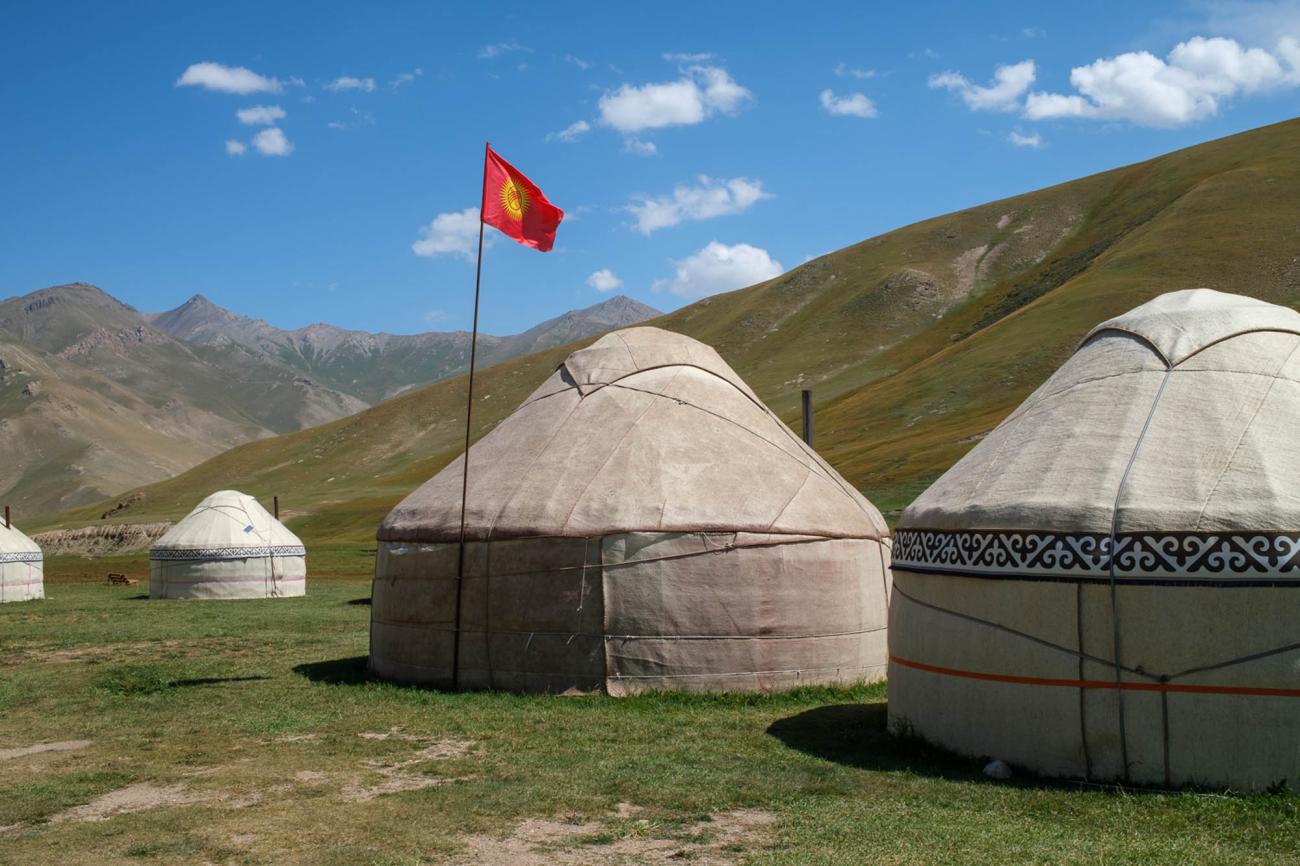
With a view of mountains, we sit to take
our food, which is, as ever, good.
Plates of plov and soup we eat with yak.
***
The Polish biker continues on his trip
while some of us go off to stride
up steeper slopes where vultures glide
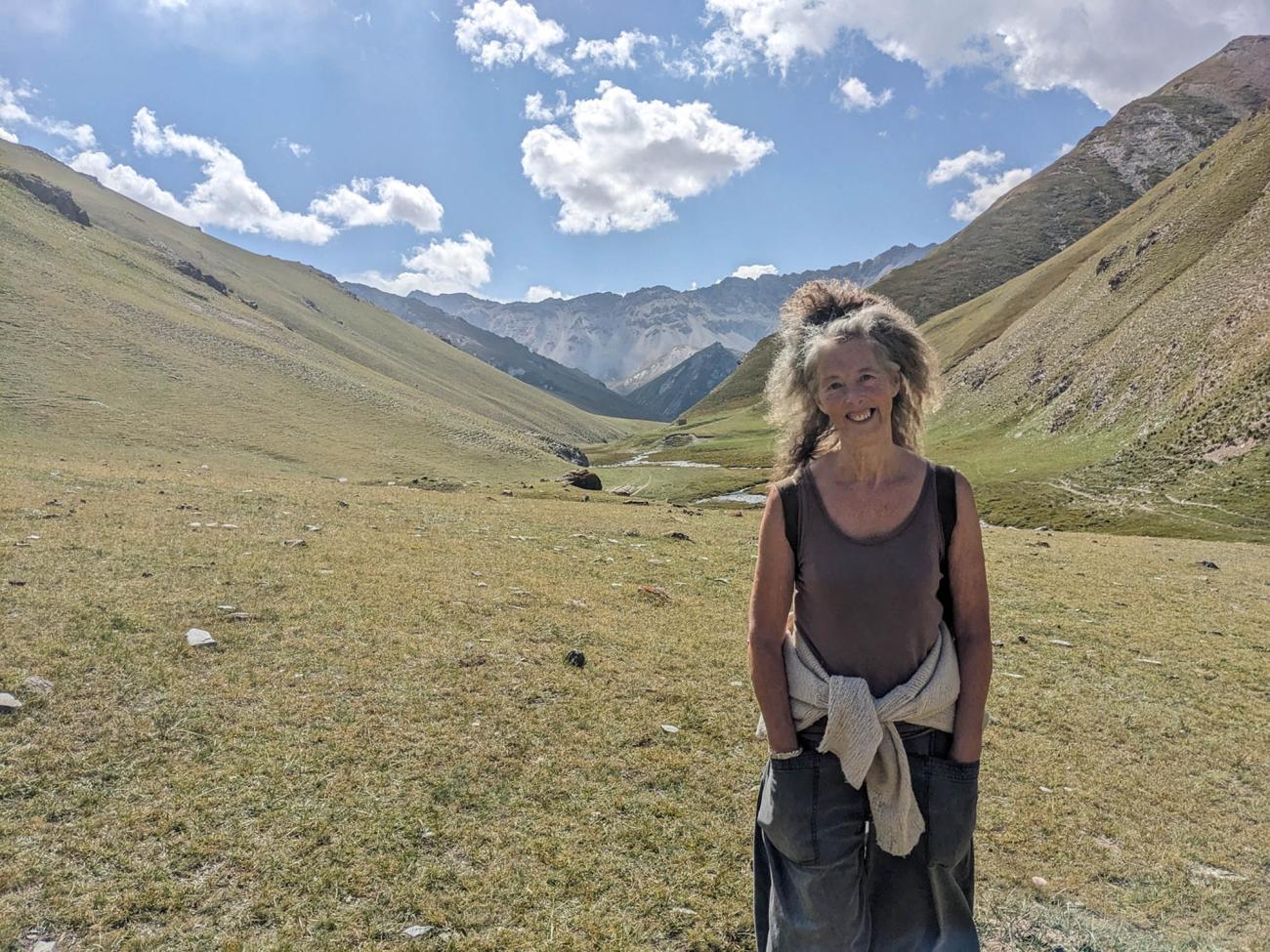
and others head along the gorge,
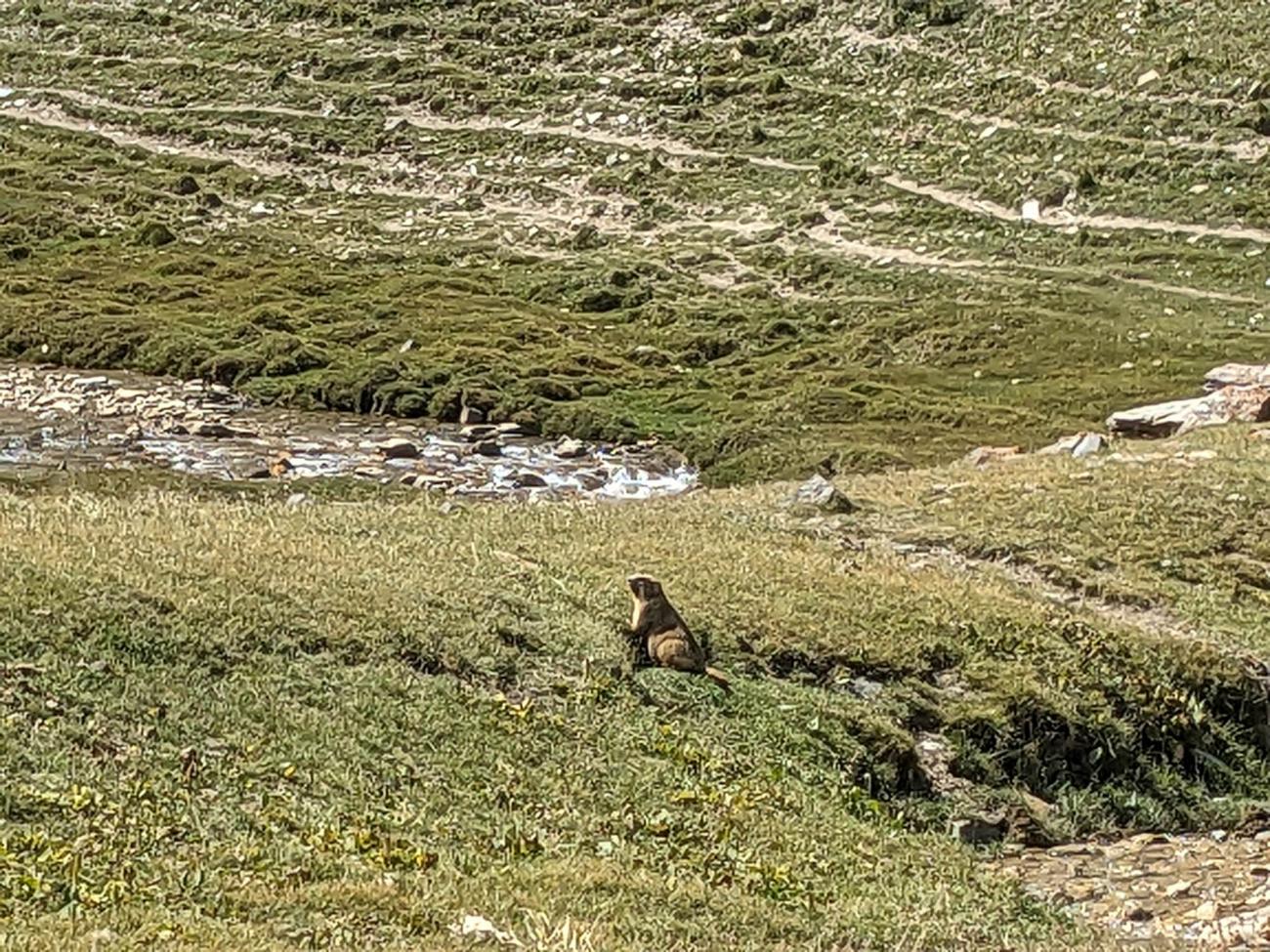
marmots loafing in the sunshine
on the mountainside, as the breeze
lifts yellow wing of butterfly
above the pale blue thrift.
***
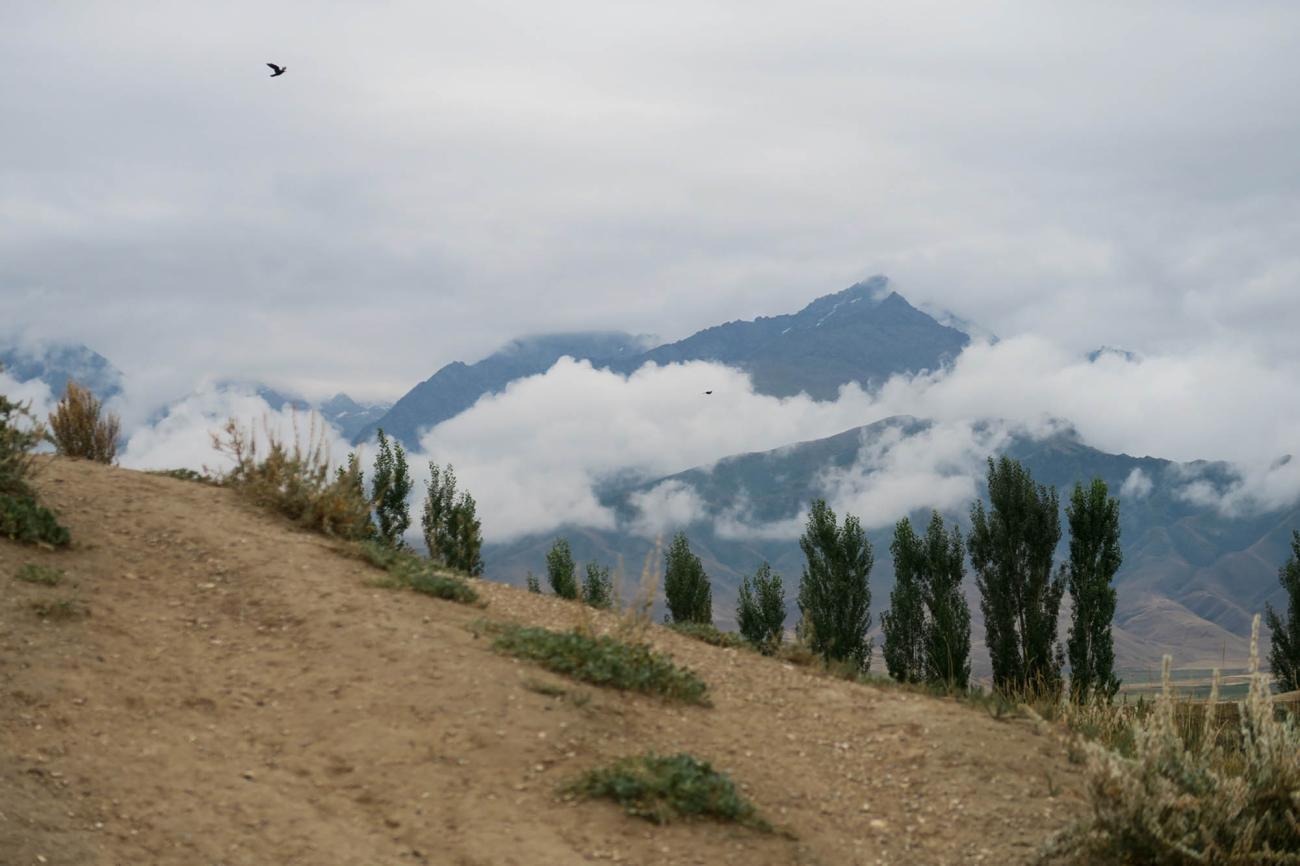
Cloud hangs low along the mountains
lightly dusted with last night’s snow
as we head back to Naryn.
Stop at what might or might not have been,
a fortress named for Korshoi Korgon,
Uncle of Manas, and on….
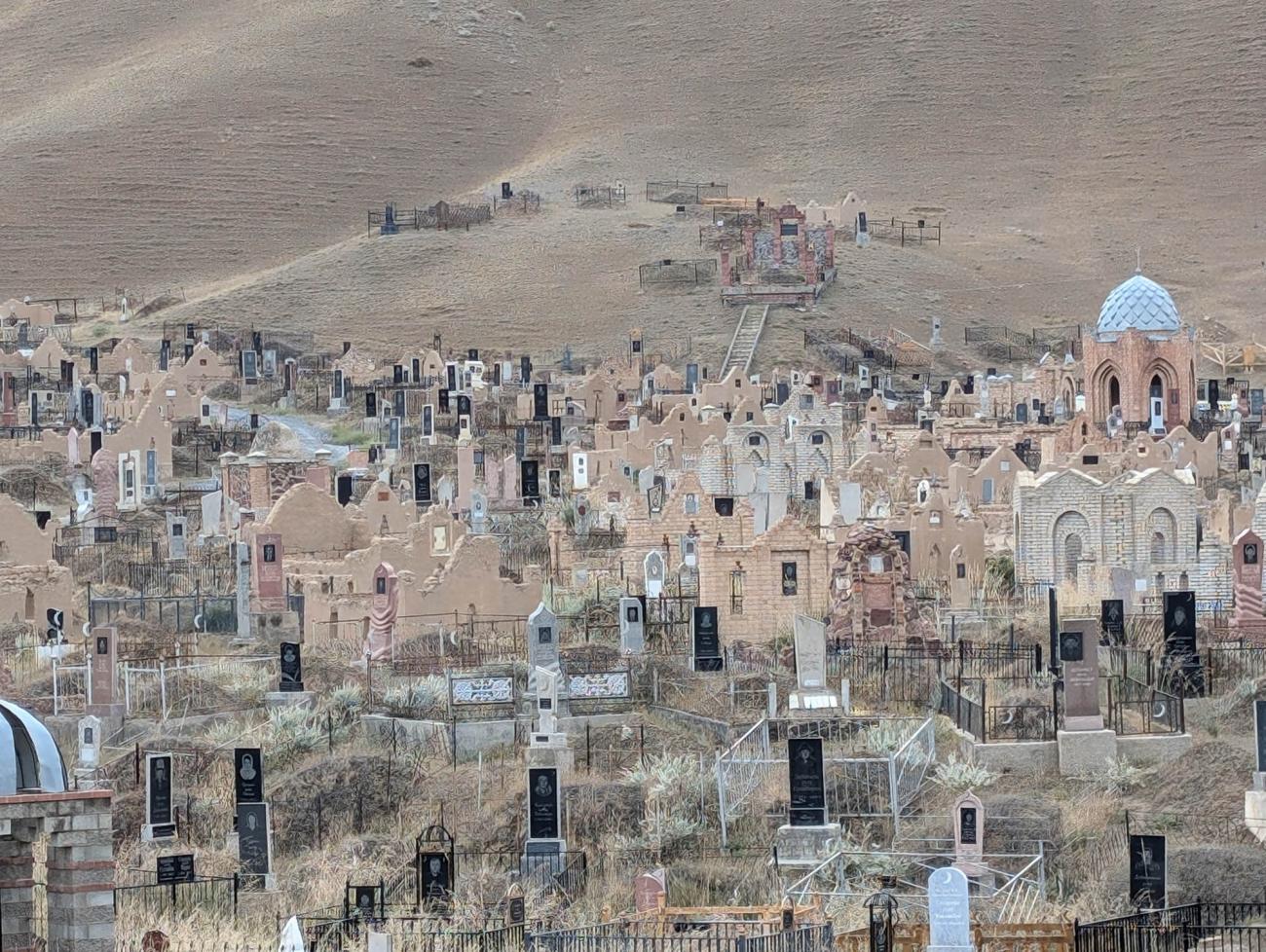
At the outskirts of the town
a small city of the dead
spreads up the lower slopes,
later replaced by spruce
that line the road where some are logged
and roadside caravans are painted teal.
Kiosks sell refreshment
as we descend to the home stay,
where hollyhocks colour the courtyard
and we watch two sisters making felt.
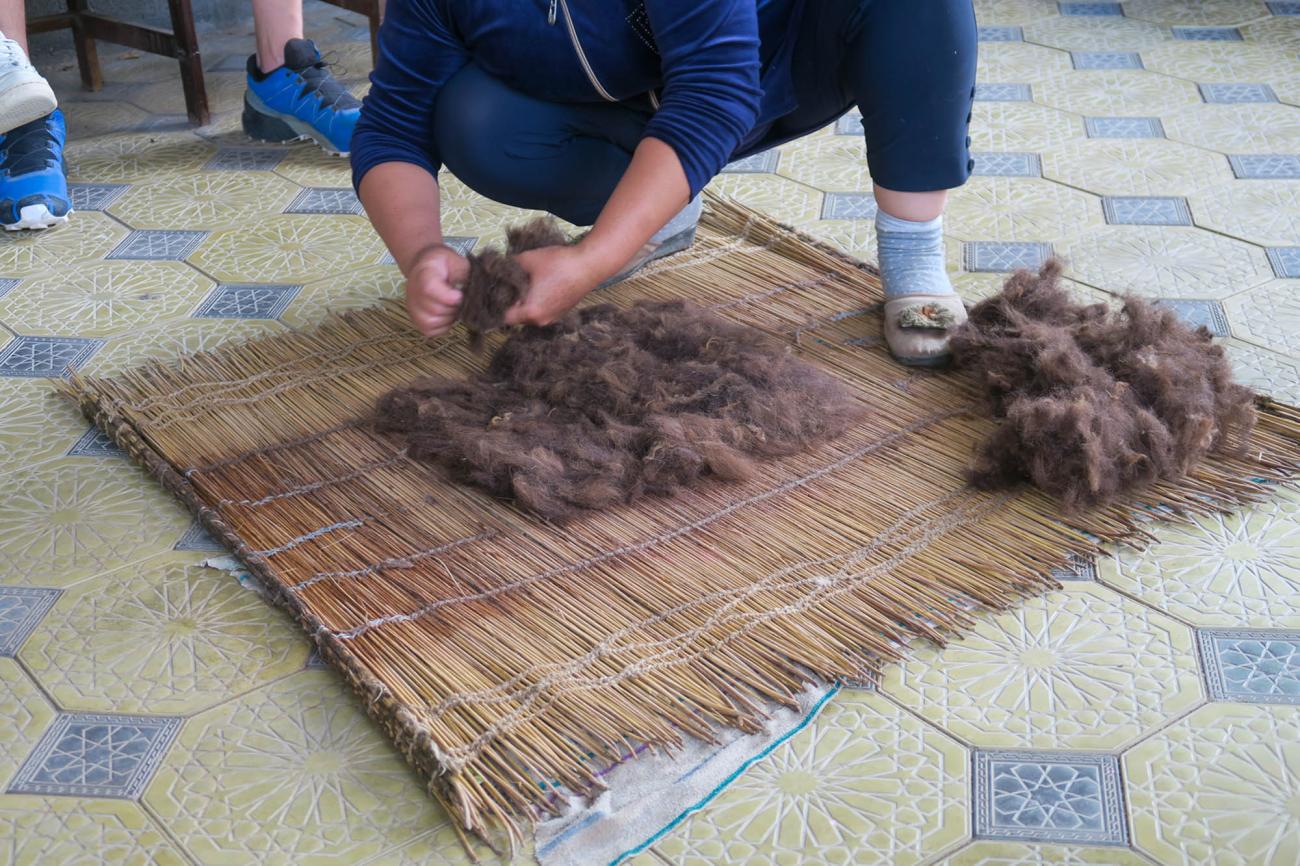
Knelt on the floor, the wool is pulled,
and layered on the floor,
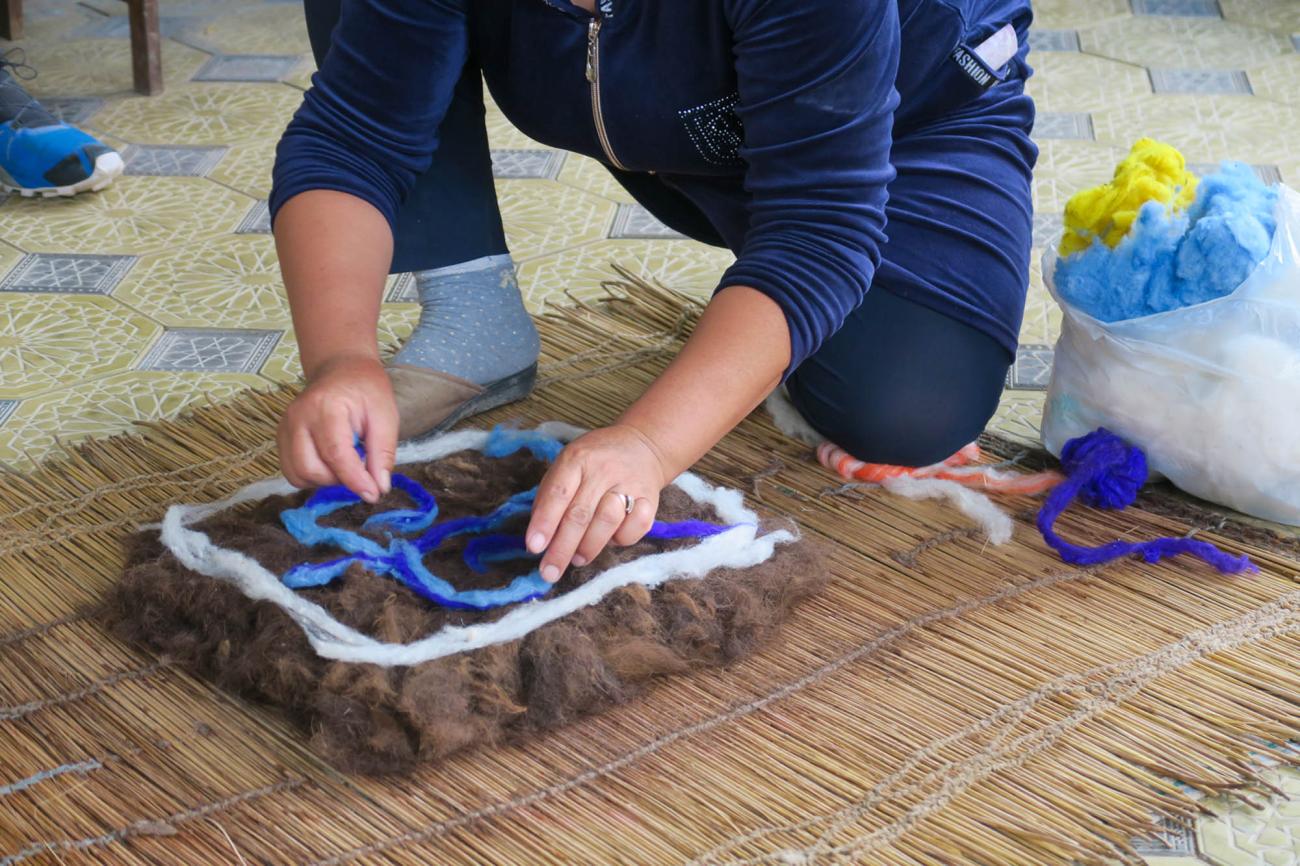
patterned then with home-dyed wool
and rolled in reeds, and trodden down,
and rolled some more.
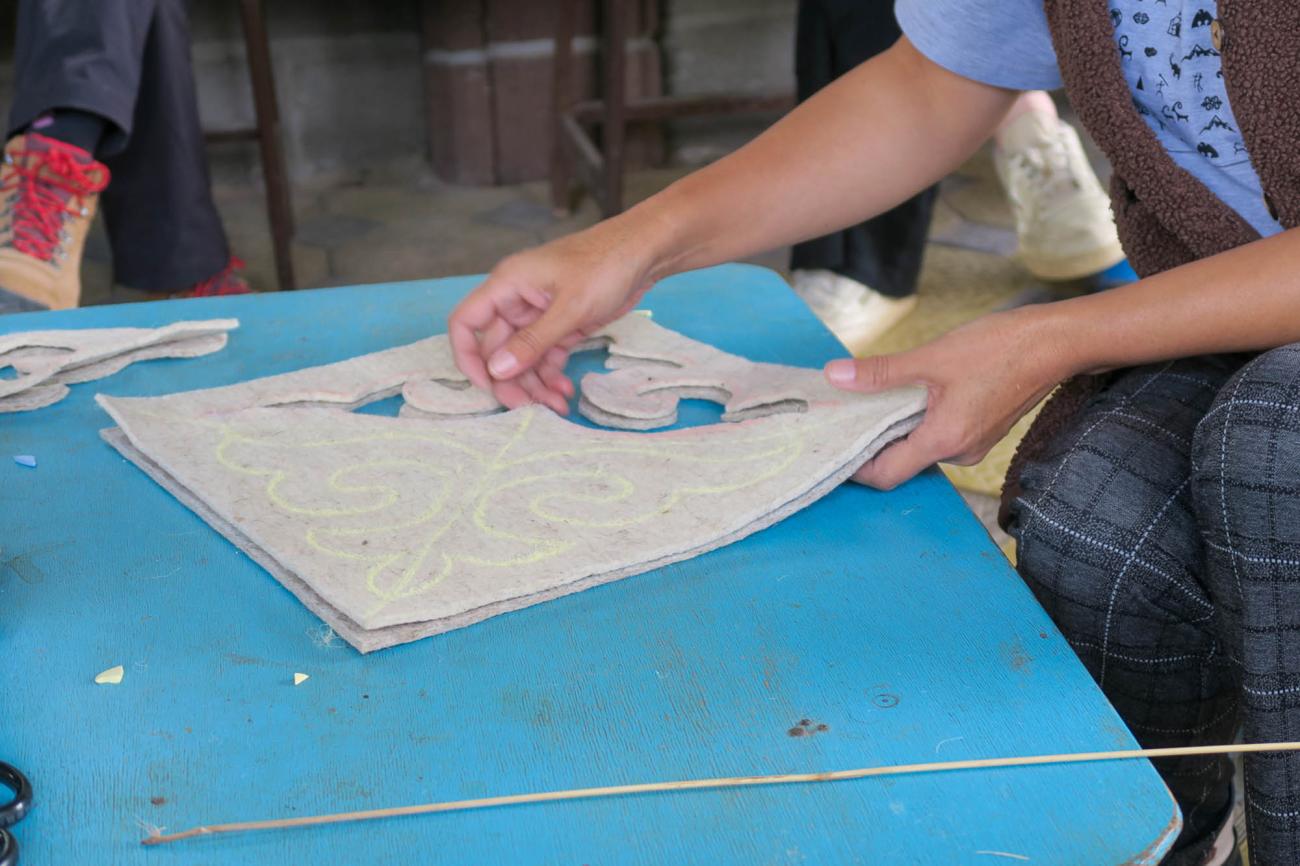
And another makes a shyrdar,
family pattern handed down,
contrasted layers of felt
stitched with twisted yarn.
And Kasha buys a felted rug
and other, decorations for the tree,
and Anna buys a local bag
so we’ll remember what we’ve seen.
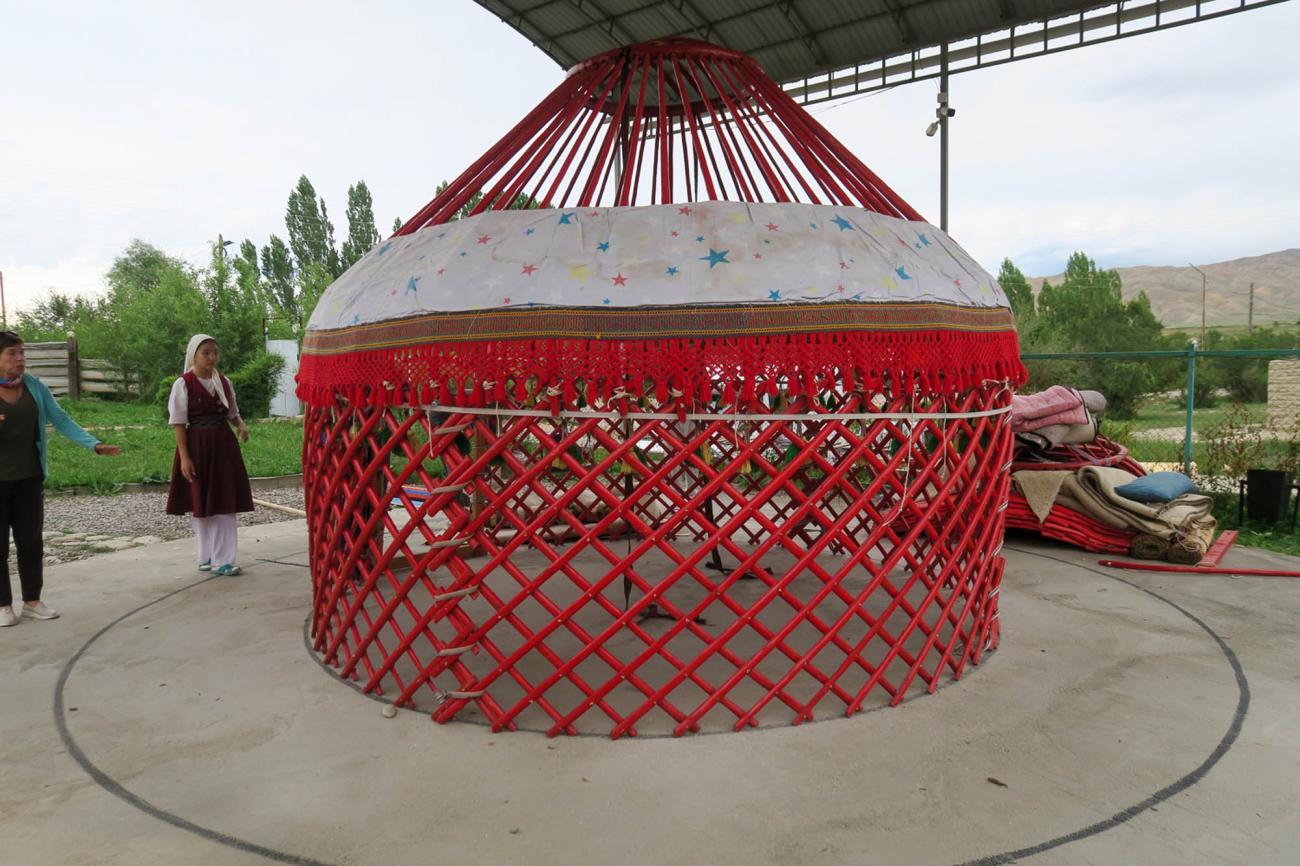
We stop off in a village
where yurts are custom-made
and nearly all the locals
are working in the trade.
The curved struts made of willow
are joined with strips of leather,
secured with lengths of woven wool
to hold against all weather.
And then we head toward the lake
to see our final camp.
which leaves us rather wishing
we were back in Tash Rabat.
***
Morning sunshine brightens up the start,
glint of small boats drifting on the lake.
Yurts are clustered on the sand
and tree fronds fringe the shoreline
as we rattle along the unmade road.
Past a statue looming on the ridge
above the painted walls of an abandoned hotel
the lane is lush with orchard fruit,
some bearing the apricots that sweetened supper.
A military sanatorium
where the cosmonauts trained,
near land where uranium was mined,
and gold was found
and funded hospital and school
until ruled a national asset.
Near Al Terek fisherman are still,
along the ‘wild’ shore,
as we head some few miles more
through Kyzyl-Suu,
Lenin’s statue at the local school.
and decorated camels posing for pictures
in the town named for Red Water.
And on along the avenues of plane,
more miles again,
through the Risky Agriculture Zone.
Garlic and potato grown
with carrot and with beetroot.
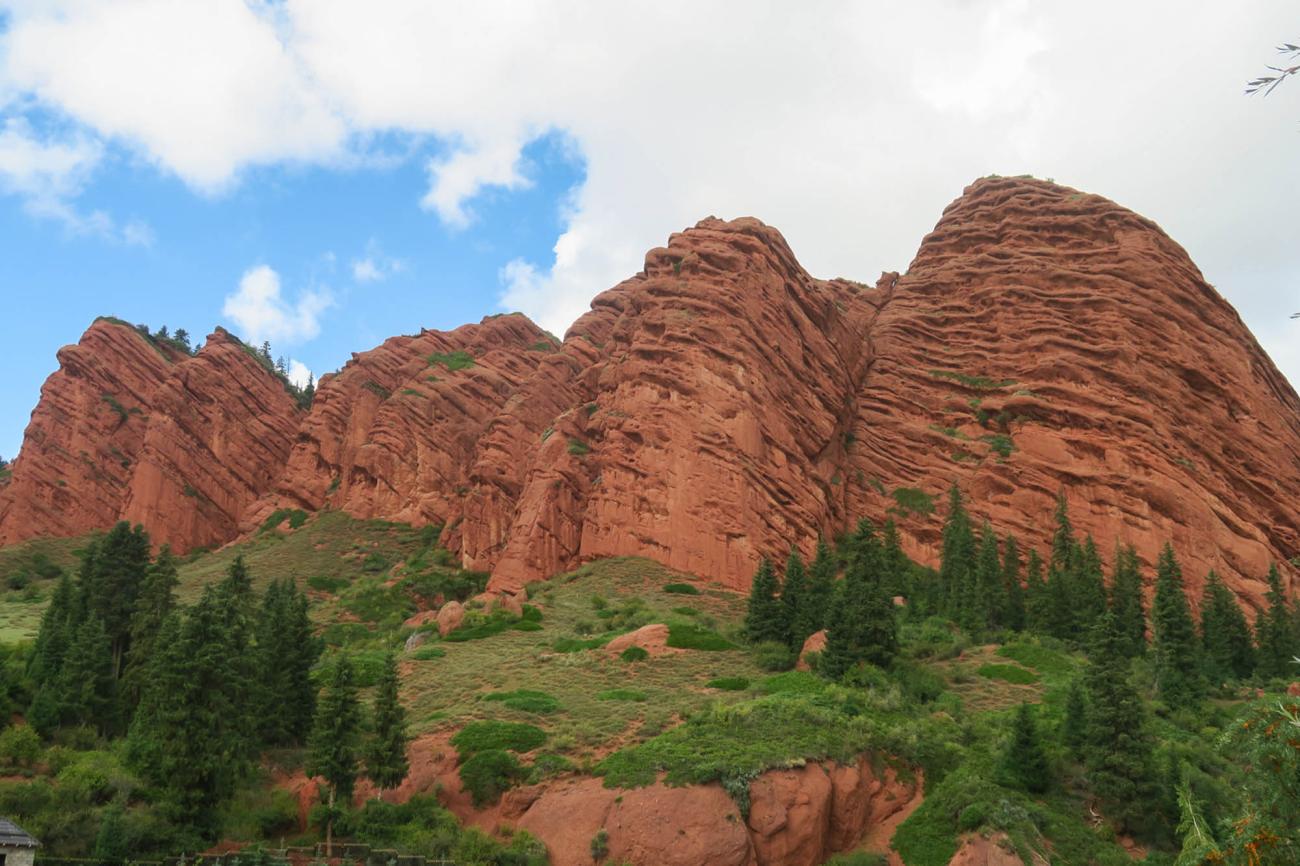
Red rock rises shaped like hearts
and soon a sign “I love Jeti Oguz”
where horses carry children up the hill
and others climb up out of breath.
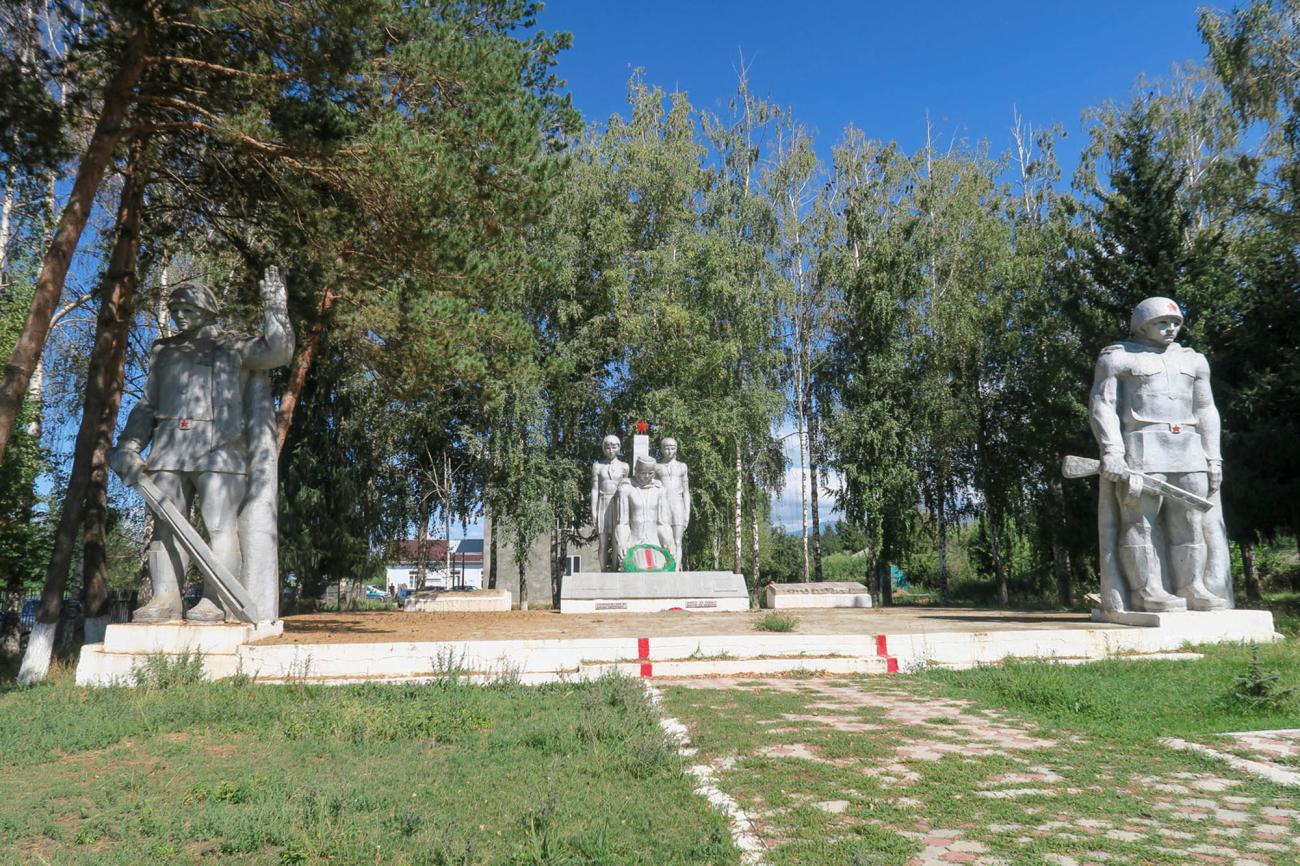
And in the village down below
a stone memorial marks the death
of those whose lives were lost
in the Great Patriotic War.
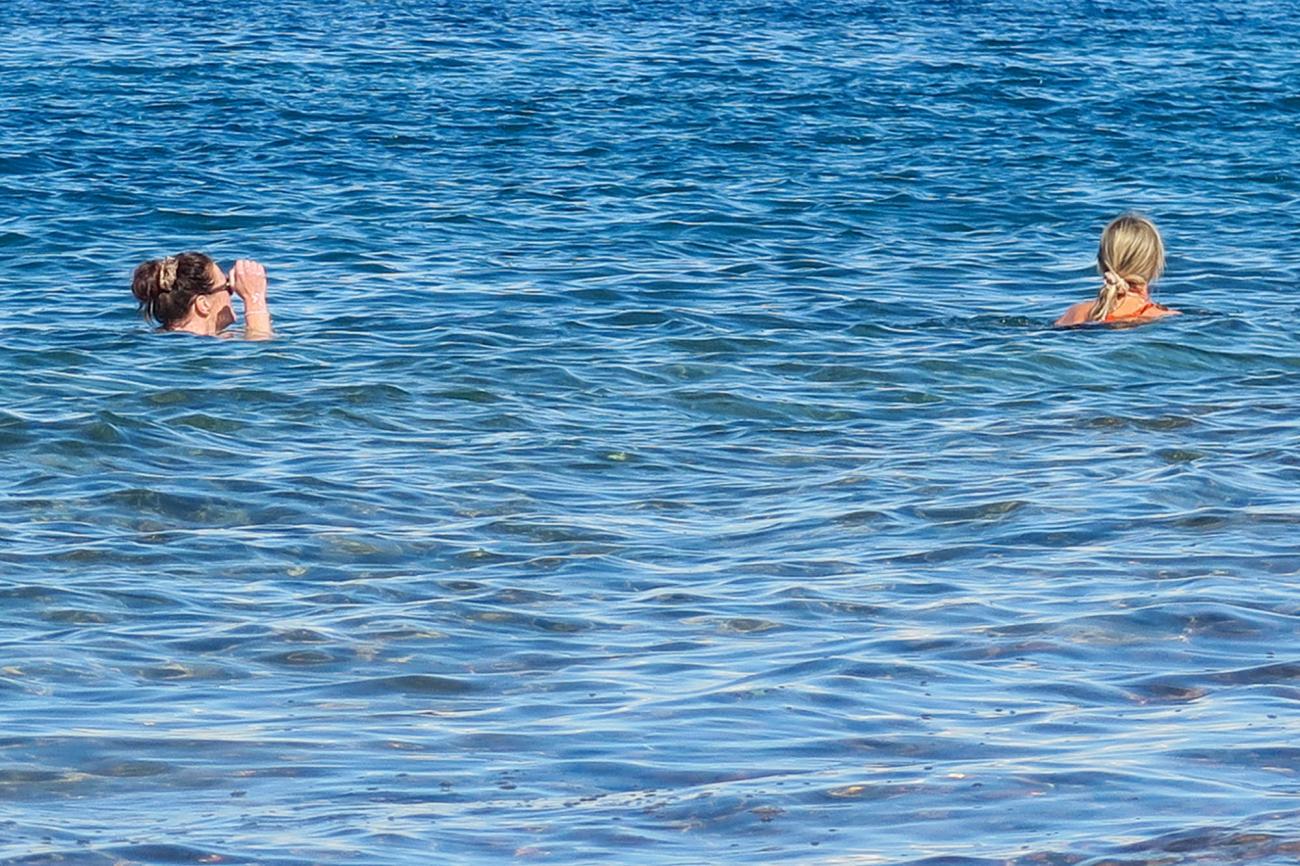
And then we’re heading back toward the shore
where Kasha and Sarah take a dip
in the clear waters of Issyk-Kul,
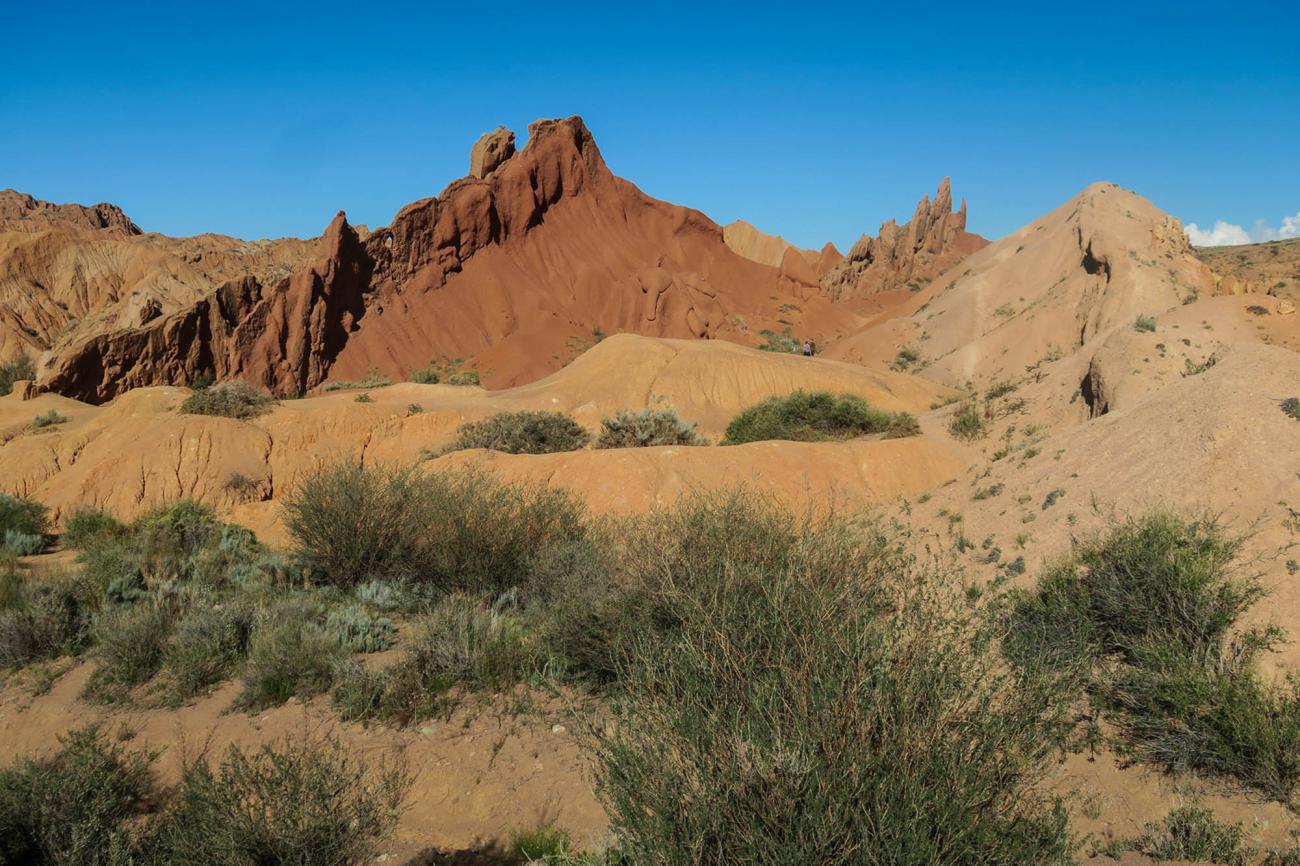
before we wander through Fairy Tale Canyon.
In the early evening light
yellow, ochre and apricot rock,
conceal elephant, heart and diamond.
The fragrant waft of wild chive
on the air as we make our way down
past wisps of wild clematis.
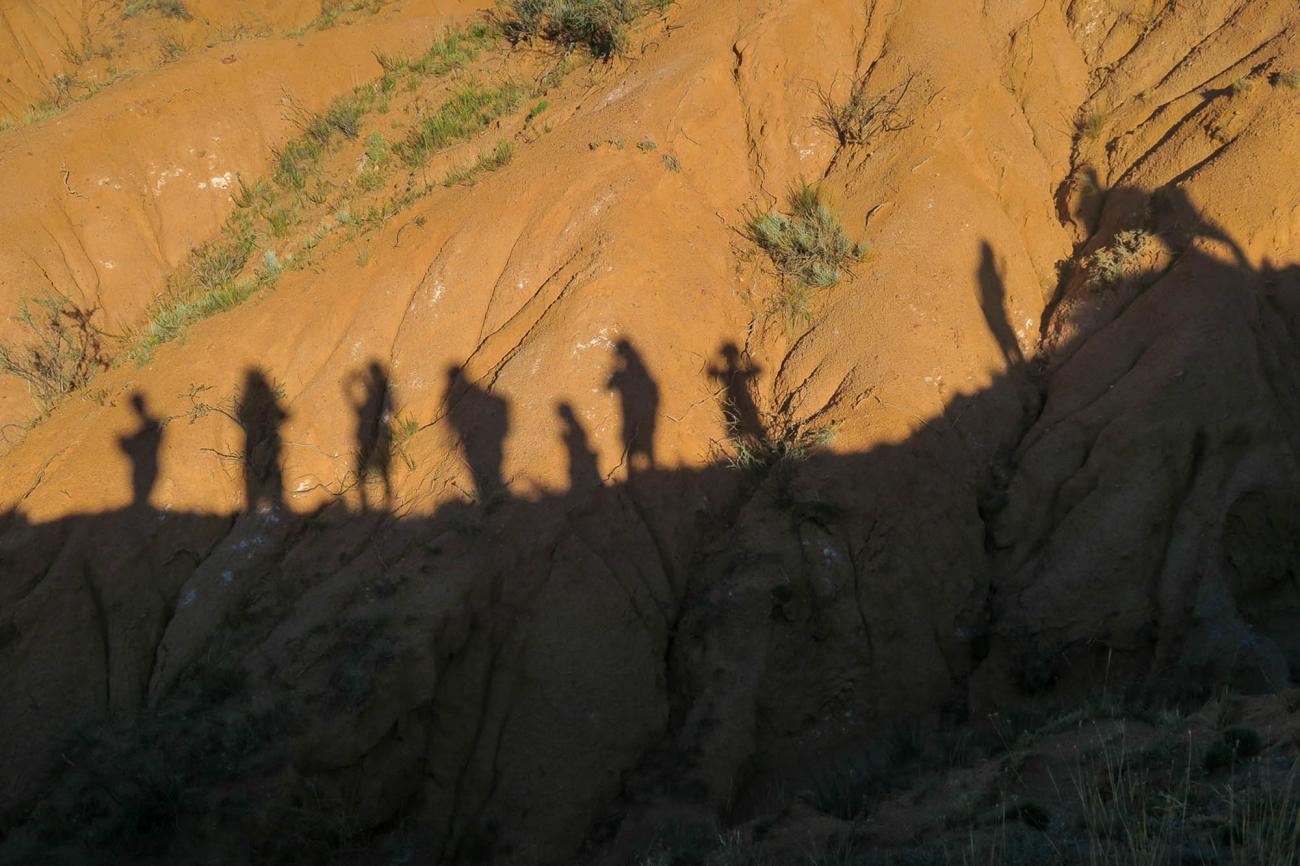
***
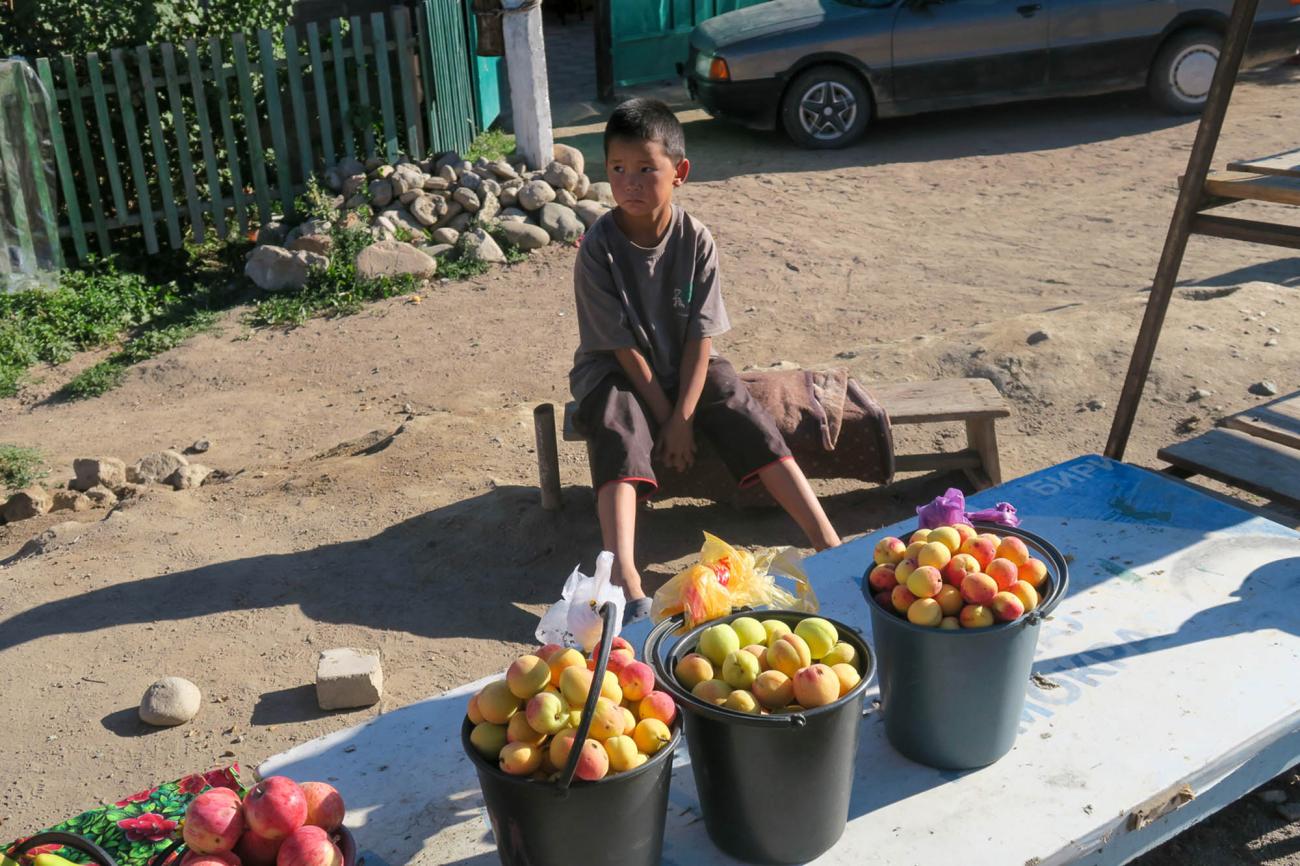
At the roadside, buckets of apricots
start the day, and then, in the sunshine
we stand, snow on the mountains behind us
as Ruslan introduces Kara gul,
his black-eyed golden girl,
Eight-year-old eagle,
perched on the cowhide gauntlet.
Curved beak and spread of wing
as her claws find jackal skin,
pulled behind the running horse.
And from the hill, another, Kara chin,
swoops down and finds its prey.
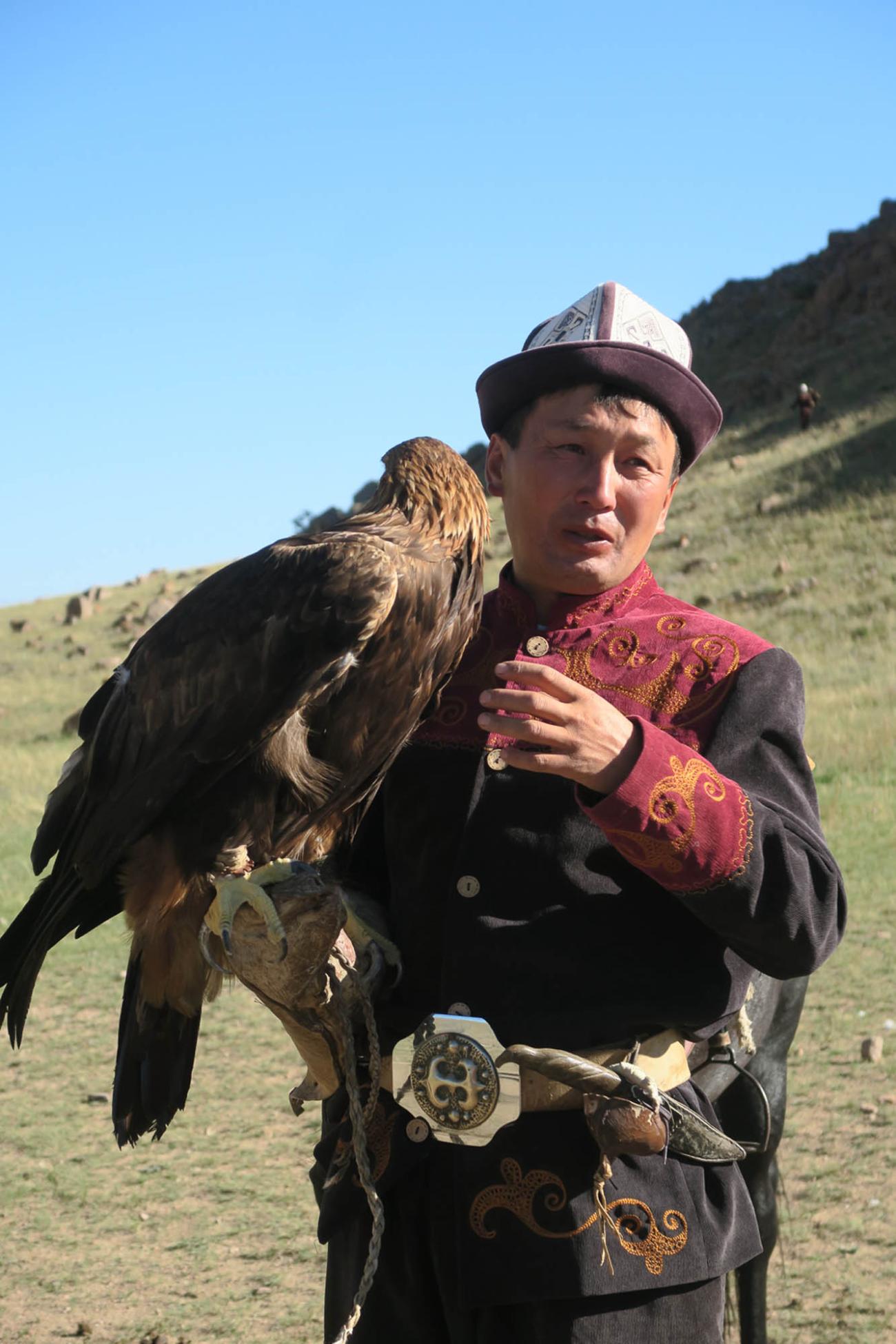
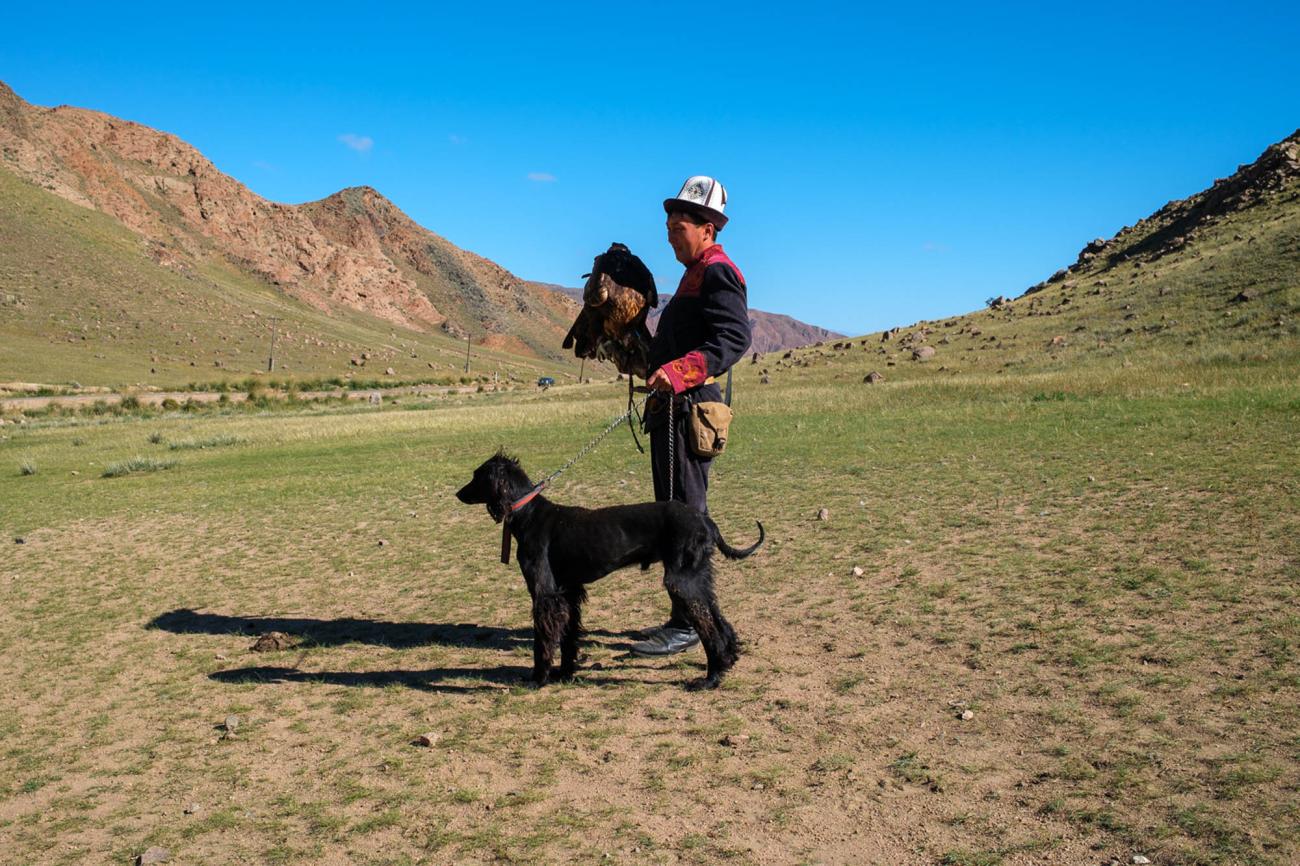
The slender Taigan is released,
races fast to catch the moving beast,
feathered fur flying.
And Ruslan’s gentle crying to his bird
is heard in the bright stillness.
Silver buckle gleams at his leather belt
where hunting knife is close to hand,
and orange stitched on black, by hand,
his trousers and his buttoned coat,
crimson cuffed.
Smoked fish hang above the
buckets full of apples
as we pass through Balyckhy
and the freight train crawls.
Chillies strung along the walls
As soon the hills of Kazakhstan take shape
and tomatoes are displayed in buckets,
in the shade of red umbrellas,
where little girls in red satin dresses gather
and the pink and white balloons are hung.
Pink and purple asters grow alongside basins
where we wash our hands outside
before the meal Aymara has prepared
with neighbours who have shared
in making flavoursome potatoes, cooked with meat,
we eat and learn of her four daughters
and a youngest son, who’ll be the one
to stay at home and care.
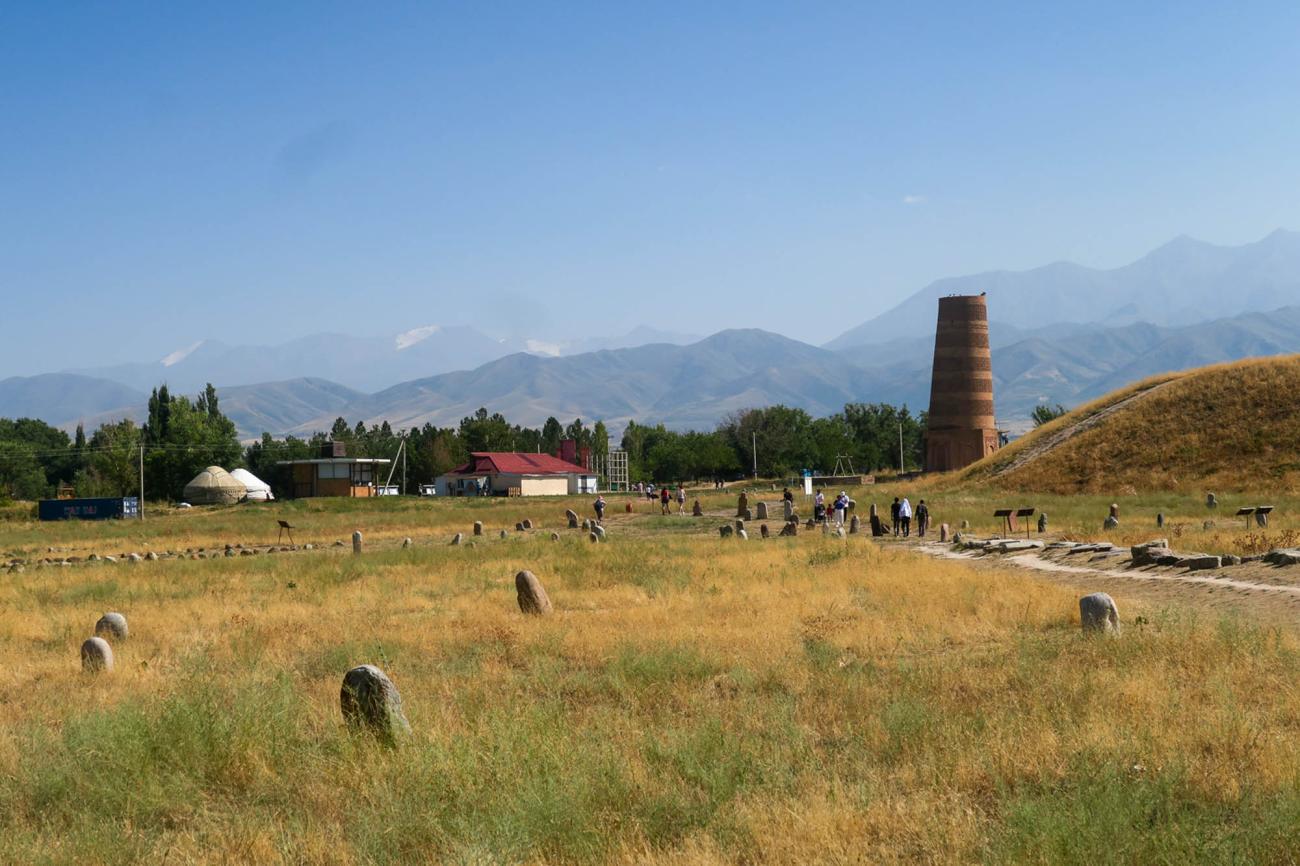
From there to see remains of ancient tower
now rising only half its height.
A site where bulbul stones
perhaps were used to mark nomadic lands,
carved hands hold drinking cup
and knife for their defending.
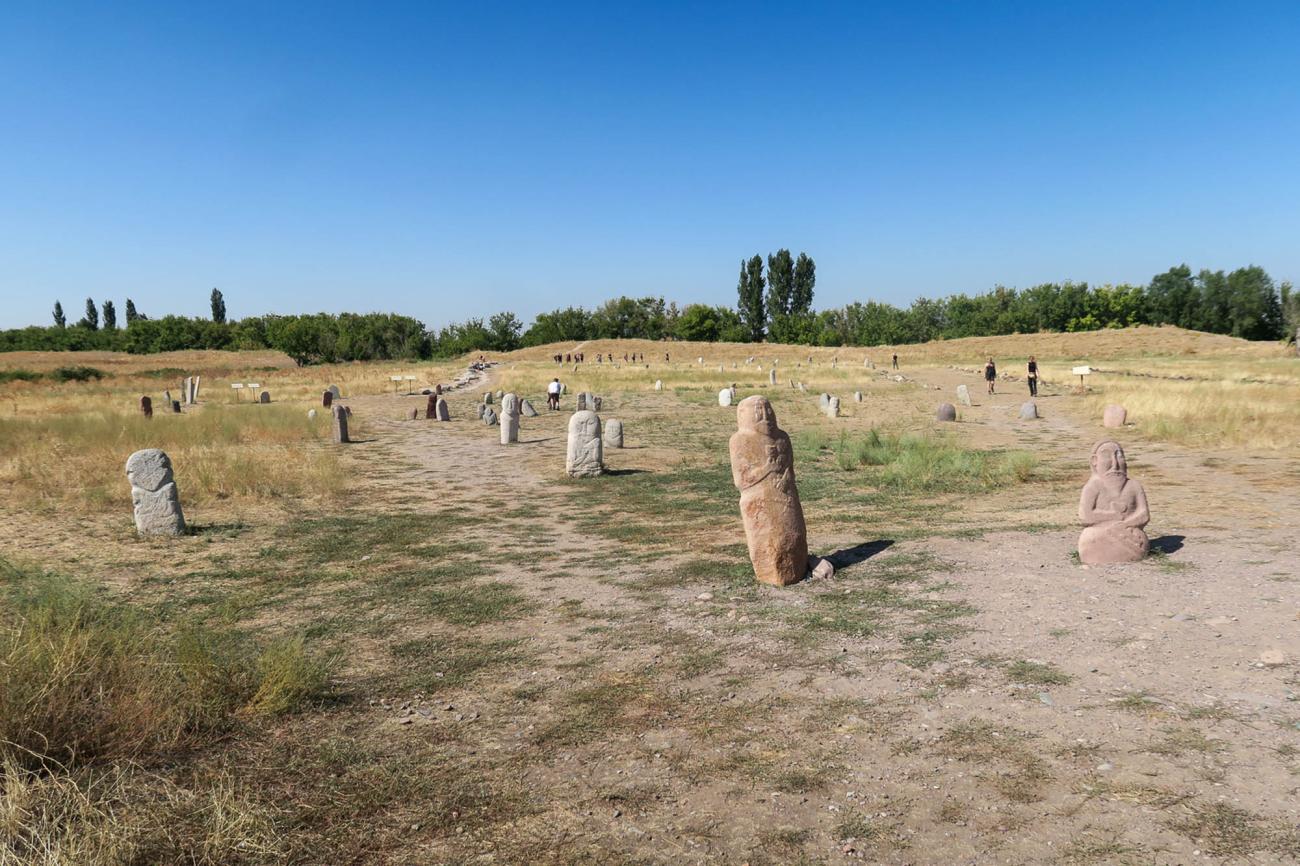
And now the journey’s ending,
there are those we’d like to thank.
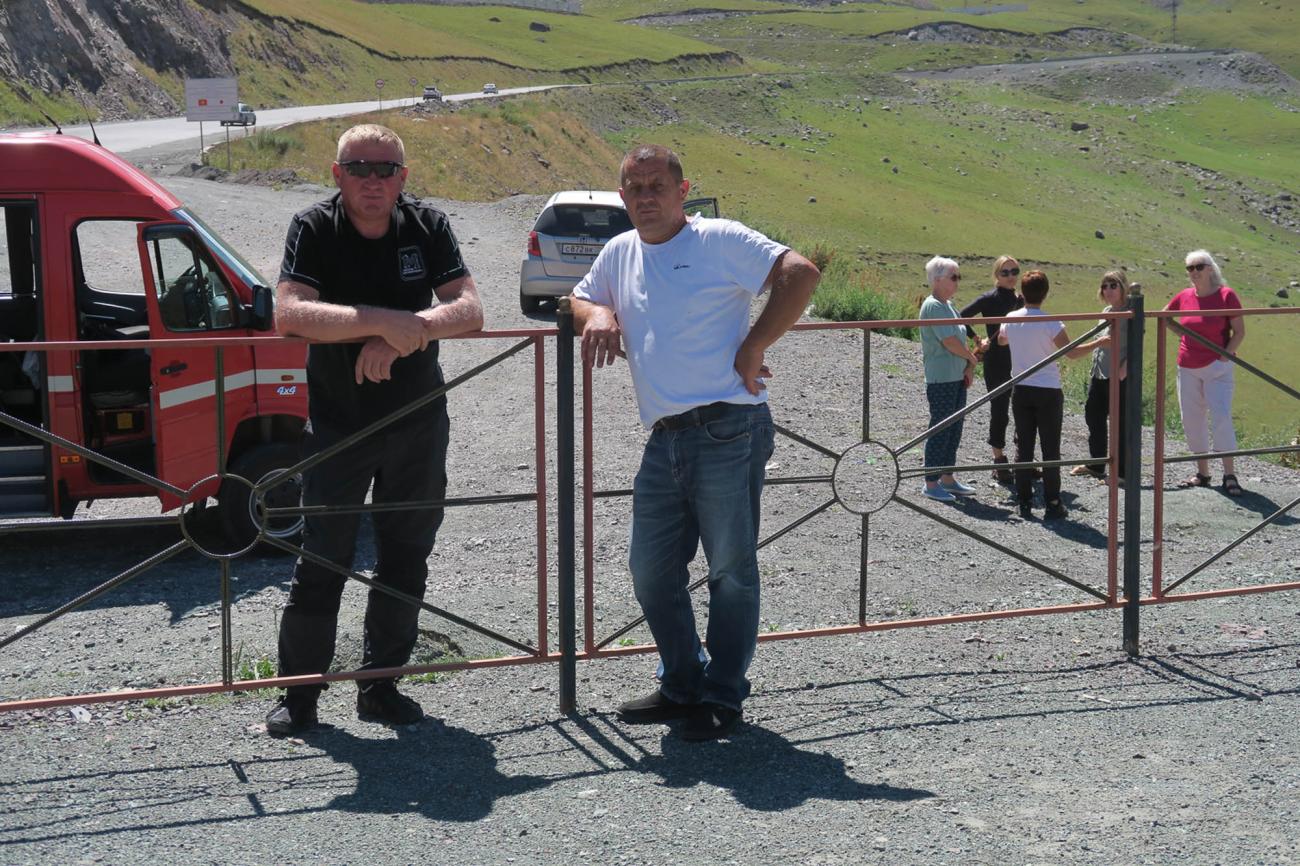
In the red van, Vladimir, who drove it like a tank.
And in the white van, Sergei,
who kept up close behind.
Both kept us safe on winding roads
that took much concentration
and always brought us safely
to each day’s destination.
In spite of driving all day long,
they hefted all our bags
(and then went off to have a break
and smoke a few more fags.)
But it’s to Olga we must give
our biggest accolade,
for the difference to the fortnight
that our expert guide has made.
She’s organised our schedule,
as we’ve gone from A to B,
explained with useful detail
all the things we’ve come to see.
Corrected all the guidebooks,
when she thinks they’ve got it wrong,
pointed out the landmarks
as the bus has gone along.
She’s sorted out the bedrooms,
and taken us out hiking,
and worked out all our problems,
if things weren’t to our liking.
And a heartfelt thanks from us two
who she’s helped as best she can,
and given us an insight
into life in Kyrgyzstan,
Rakhmat
